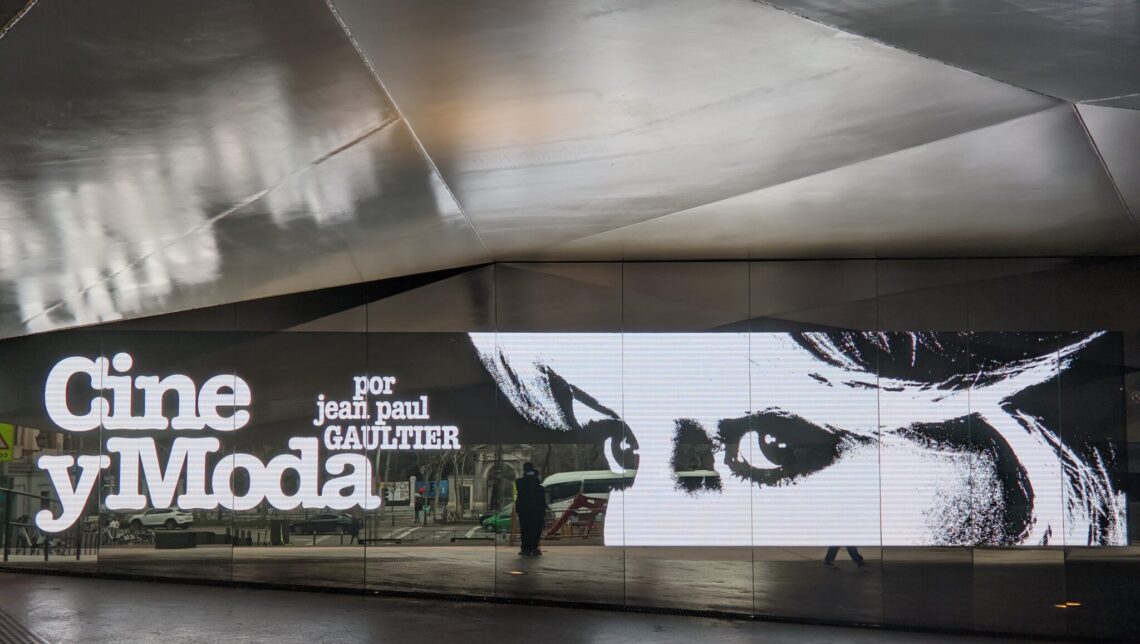
Smaller Can Be Better — Art Venues in Madrid 2024
Sometimes a one-hour visit to a museum fashions the perfect art experience, and one great destination where you may choose to appraise this theory is Madrid. We recently visited three art spaces centrally located in the capital of Spain that offer you surprisingly high-quality alternatives to the Big Three museums… without crowds and highly-priced tickets.

Museo Sorolla
The Sorolla Museum features paintings by the artist Joaquín Sorolla y Bastida (1863 — 1923). Sorolla excelled in painting monumental works of art with social themes (such as the 14 murals on display in the Hispanic Society of America in Manhattan, USA) as well as landscapes and portraits.
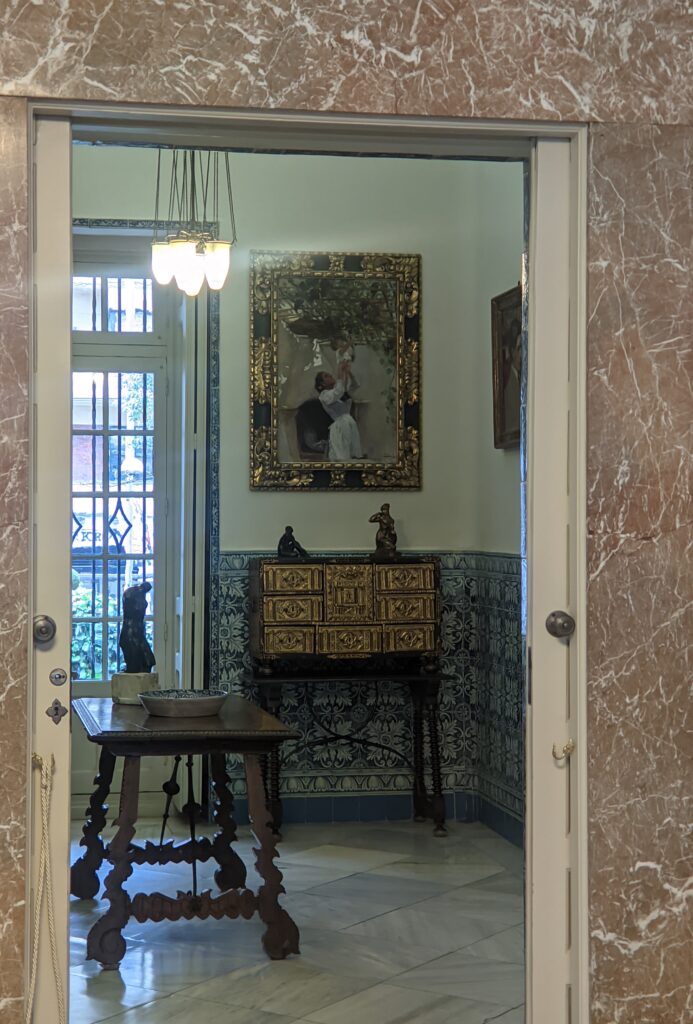

Madrid’s Sorolla Museum was originally the home of the artist, his wife and their three children. It was converted into a museum following the death of his widow, Clotilde García del Castillo.
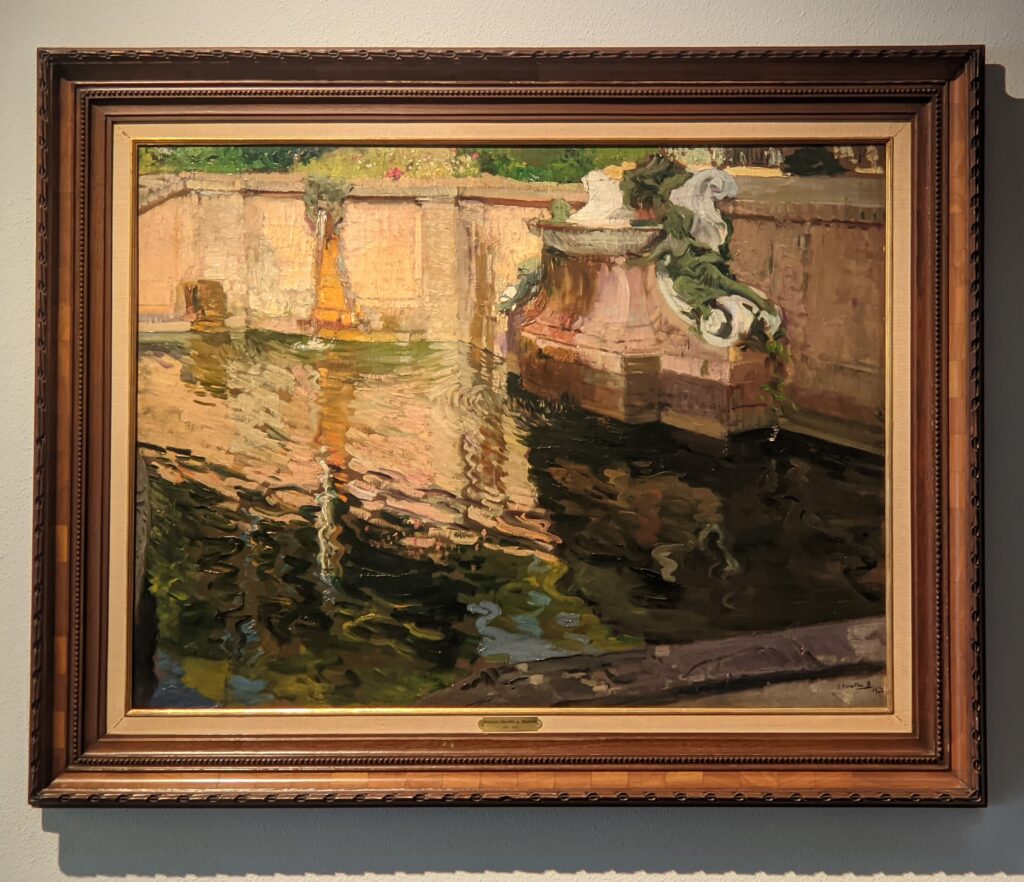
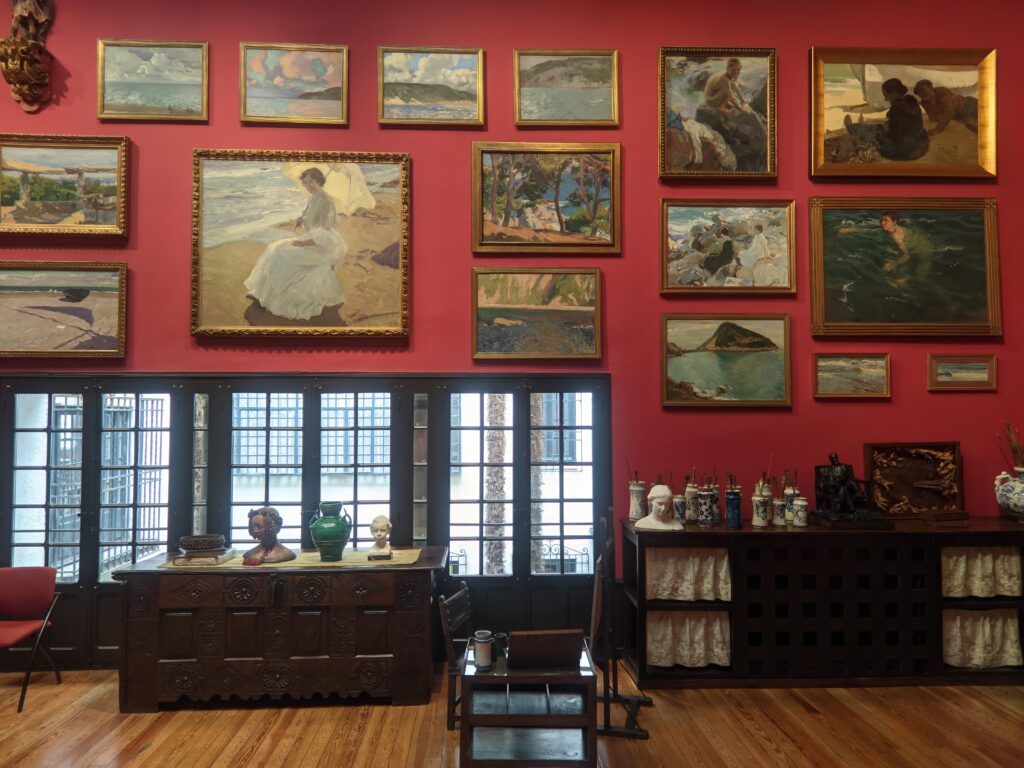
The large, well-lit room where dozens of canvases are now displayed formerly served as the artist’s studio.


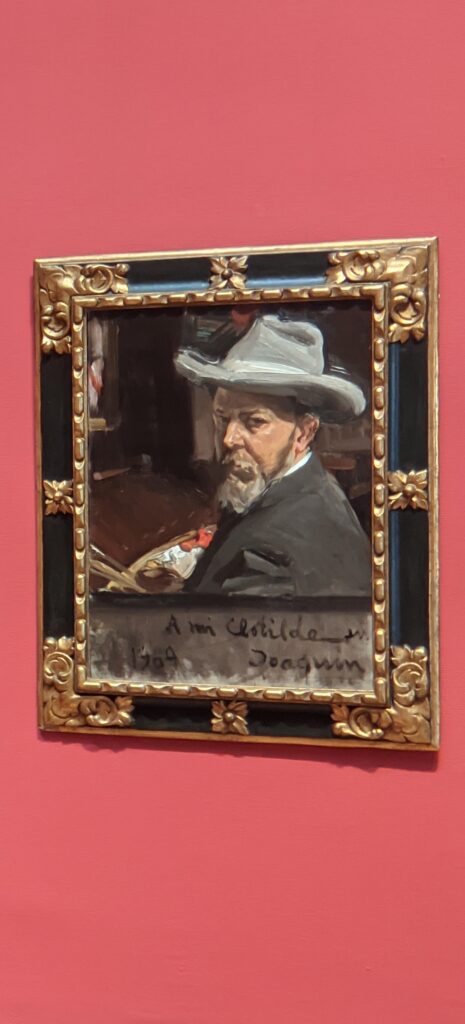
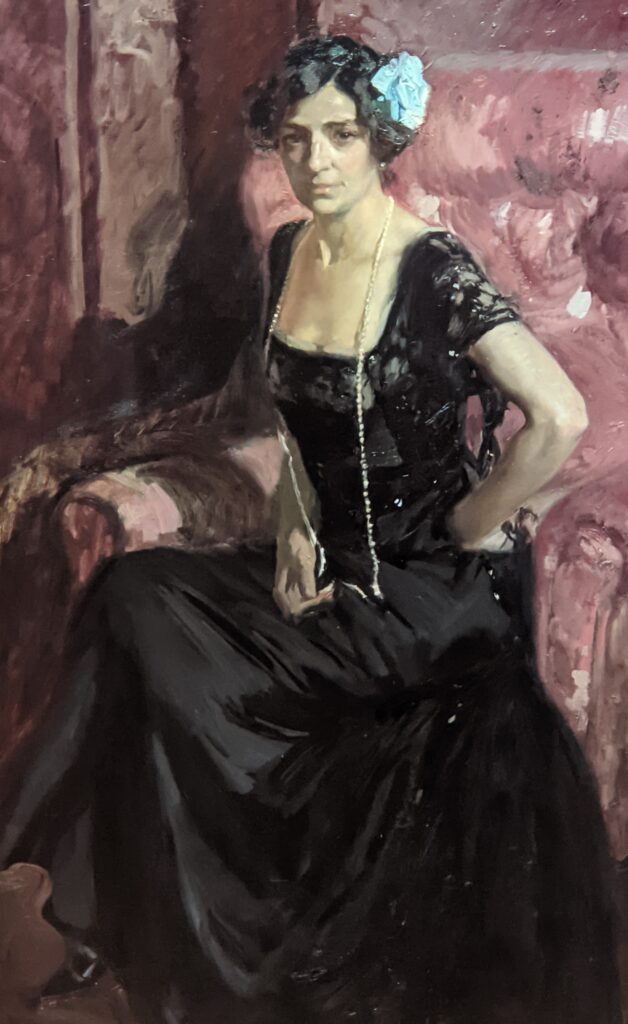
Joaquín Sorolla was born in Valencia and he is famous for his adroit representation of sunlit water and the brilliant daylight typical of his native region, where he received his introductory art education at the age of nine. He traveled to the Museo del Prado in Madrid at age 18 to study master paintings, and at age 22 began four years of training at the Spanish Academy in Rome. Sorolla returned to Valencia in 1888 to marry Clotilde, and when their first child was born in 1890 the family moved to Madrid.


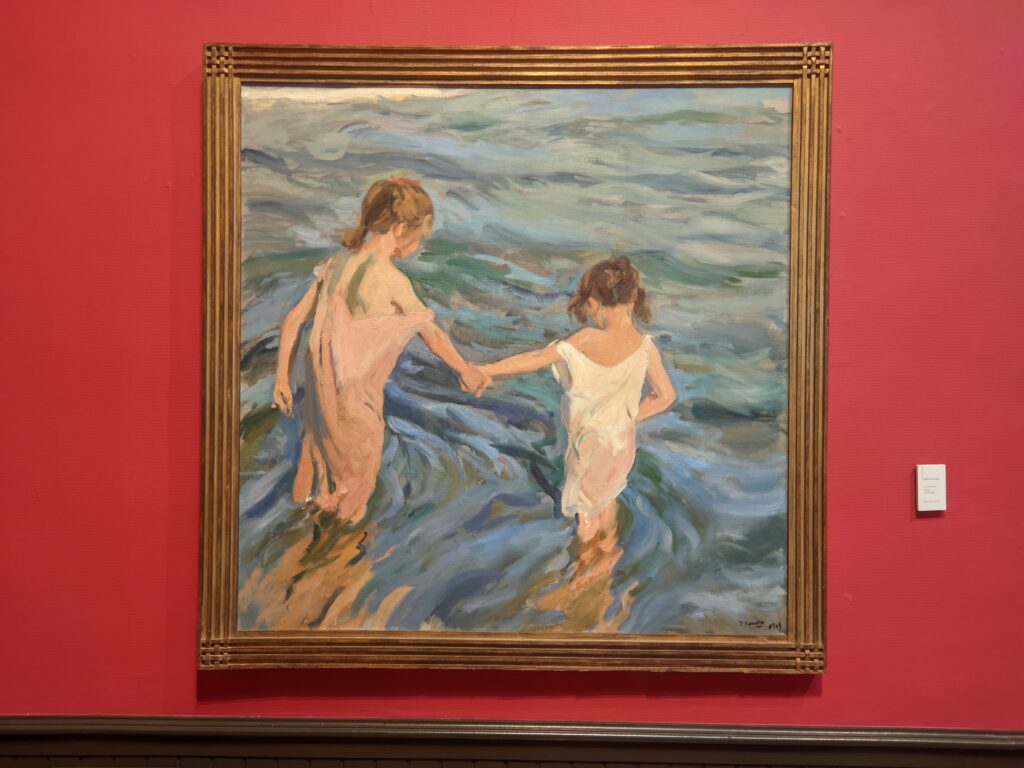
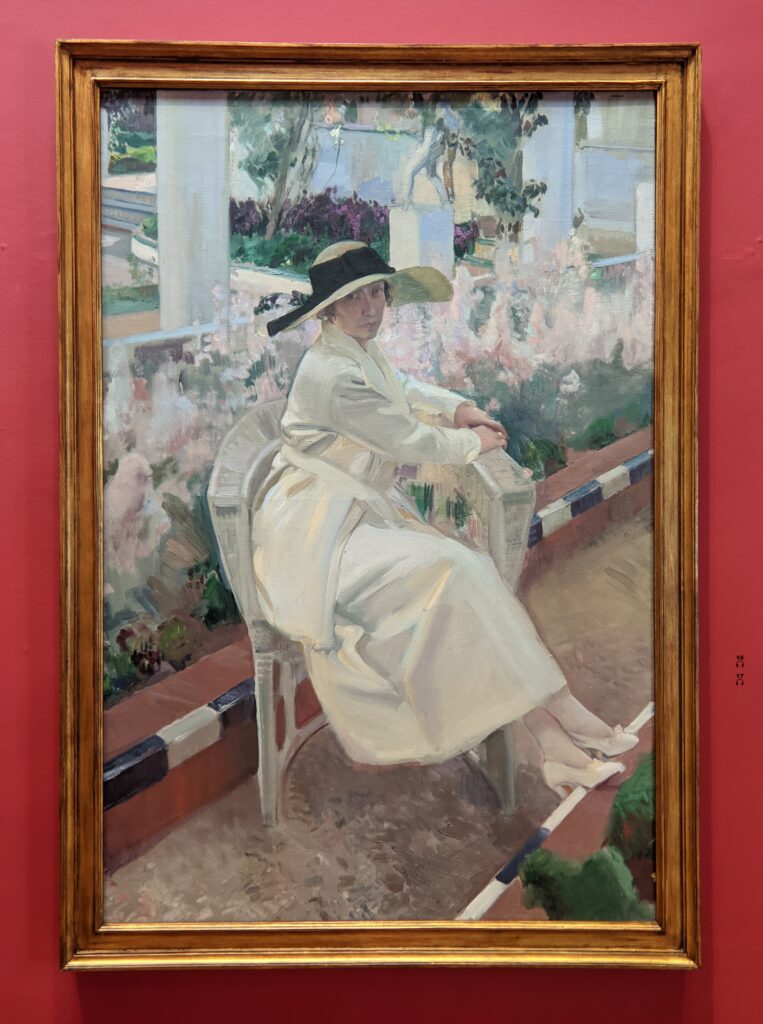
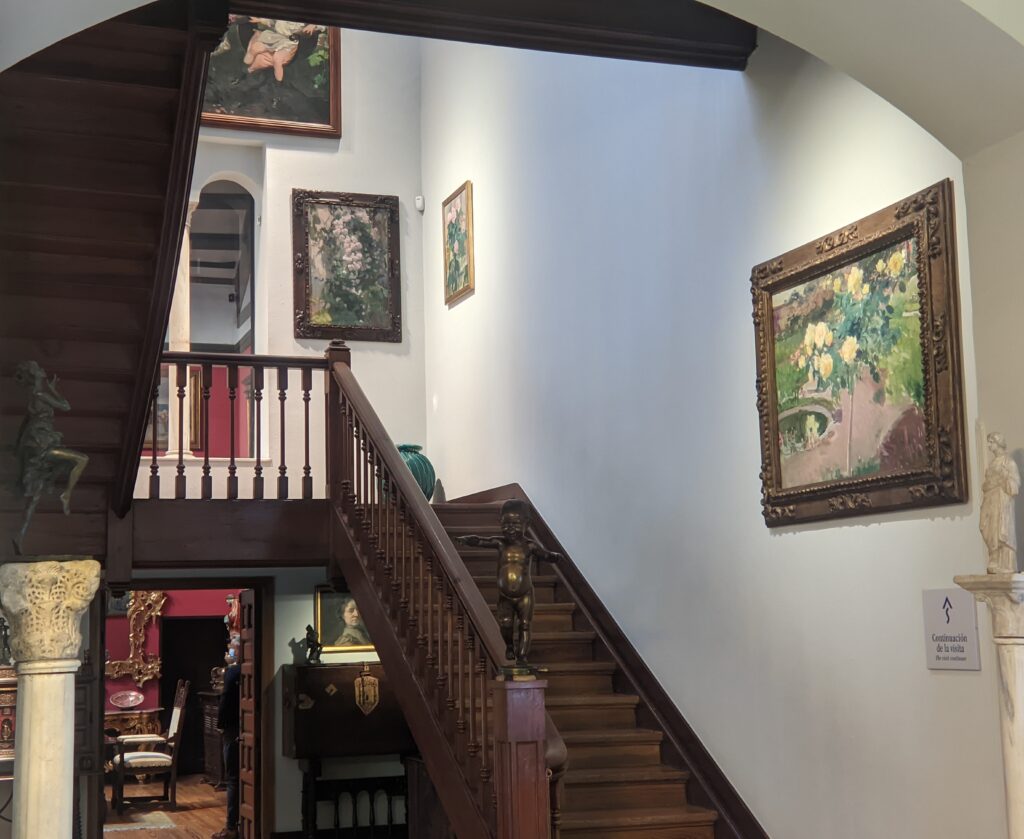
The upstairs rooms are now used for the presentation of well-curated special, temporary exhibitions.
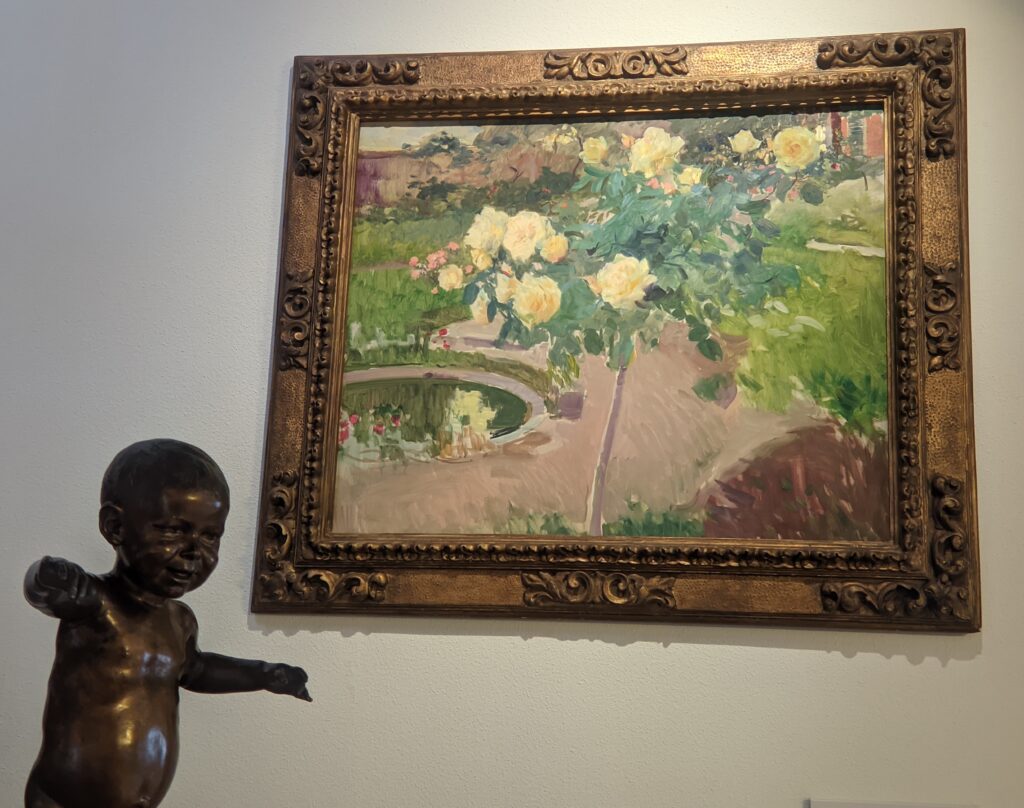
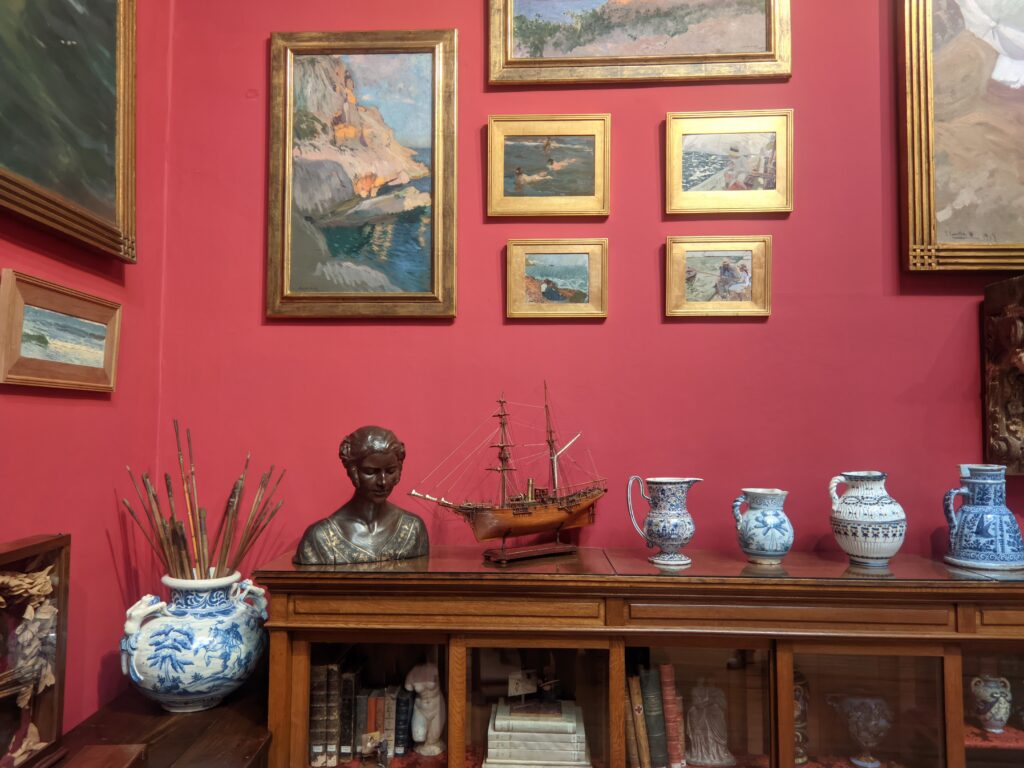

The downstairs rooms continue to be furnished as they were when Sorolla lived and worked here.
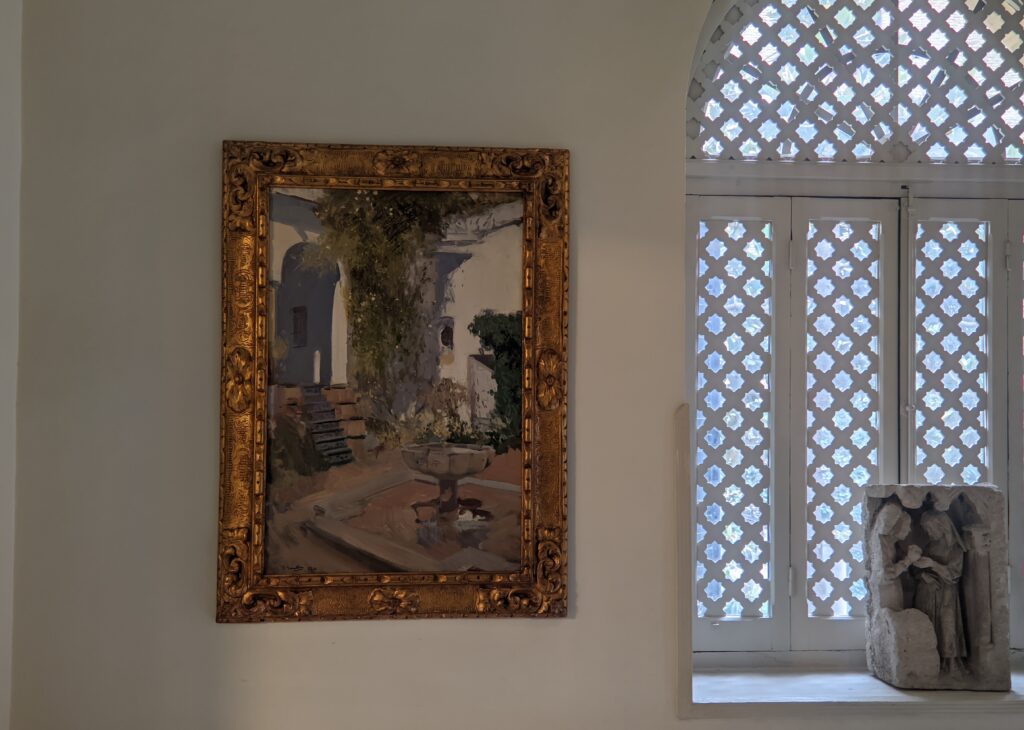
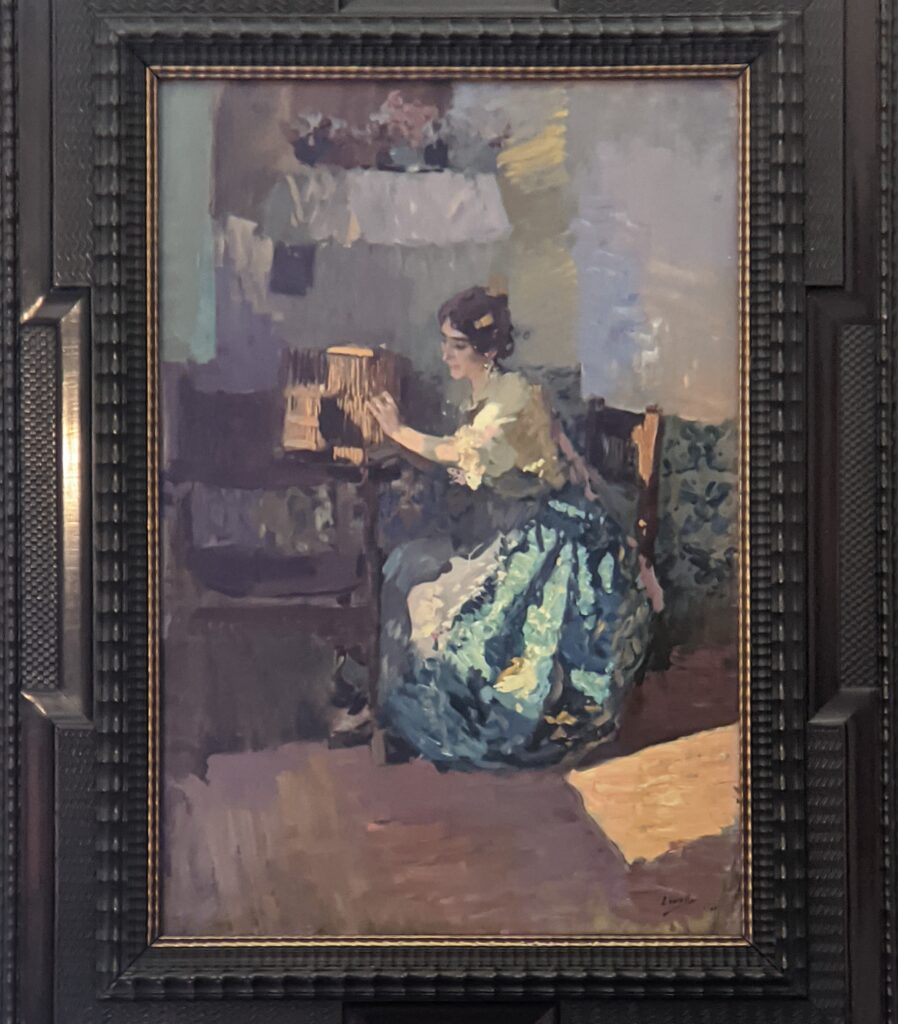


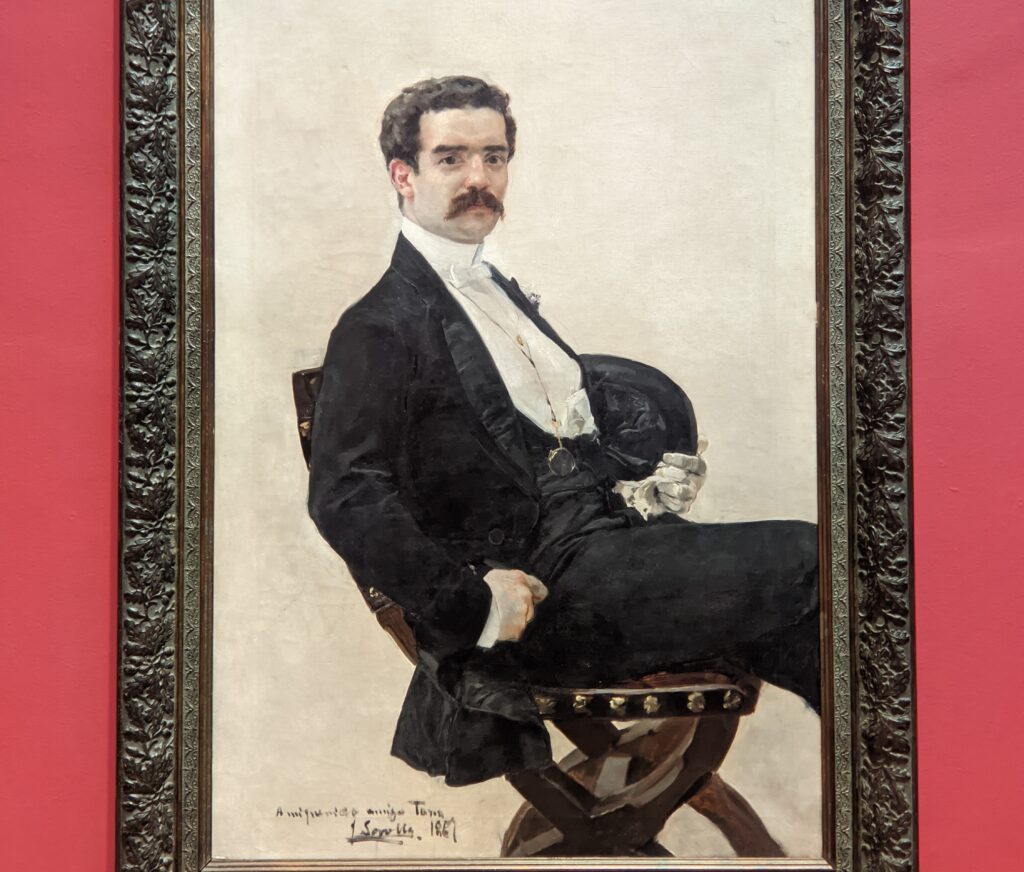
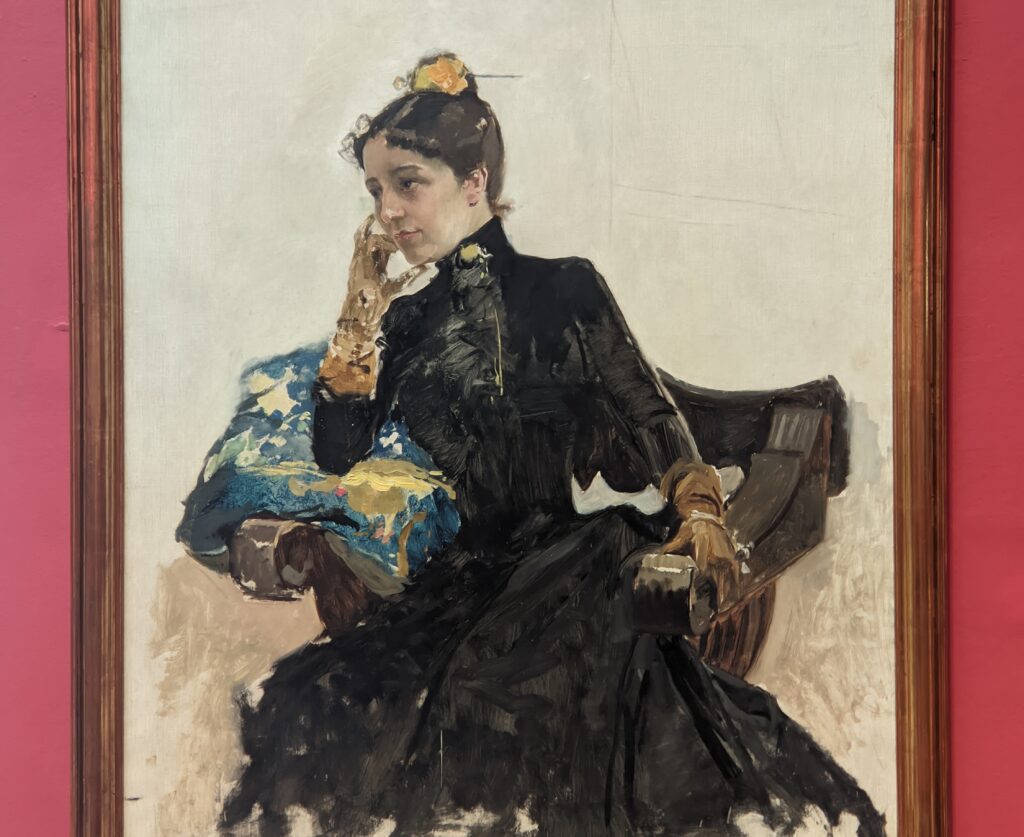
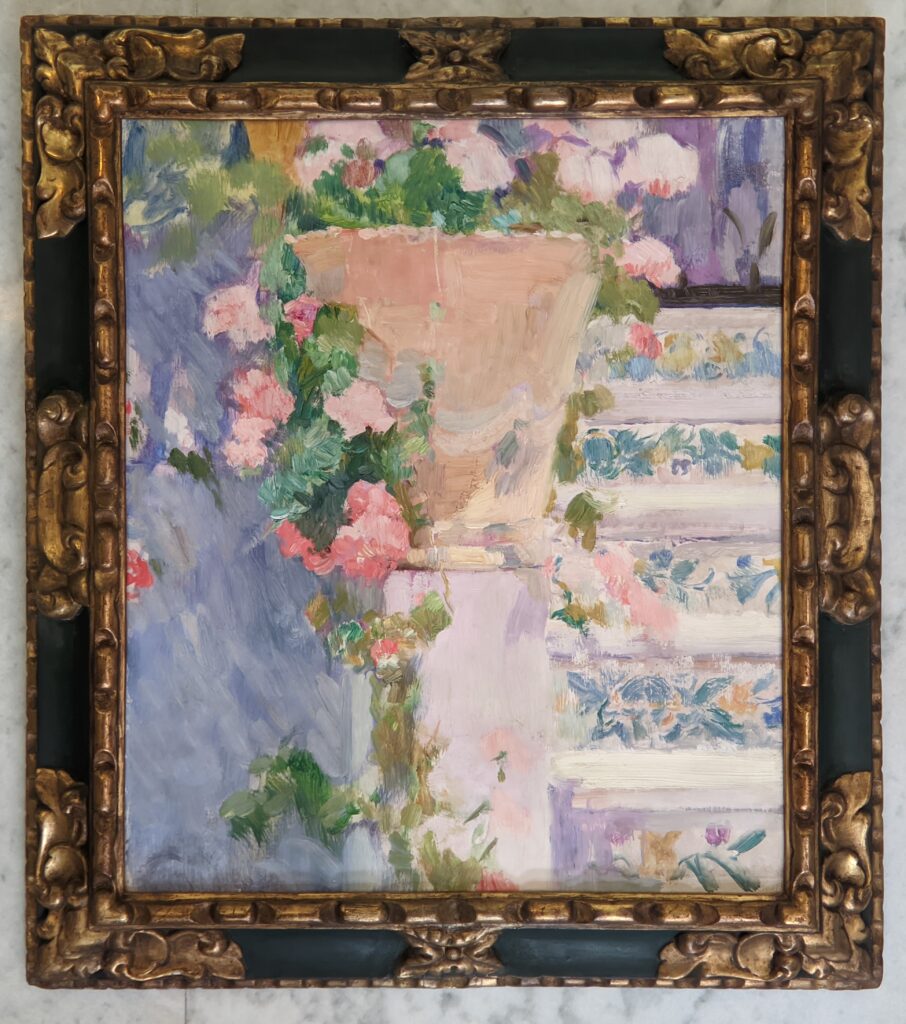
Sorolla & Luminism
Should you need an additional reason to visit the Sorolla Museum, consider the lovely sense of light which envelops the house and emanates from many of the canvases. Even though numerous art historians would simply lump Joaquín Sorolla in with the Impressionists, we believe it is far more accurate to associate Sorolla’s particular style with European Luminism or Valencian Luminism: a neo- or late-Impressionist movement which devoted great attention to the effects of light.
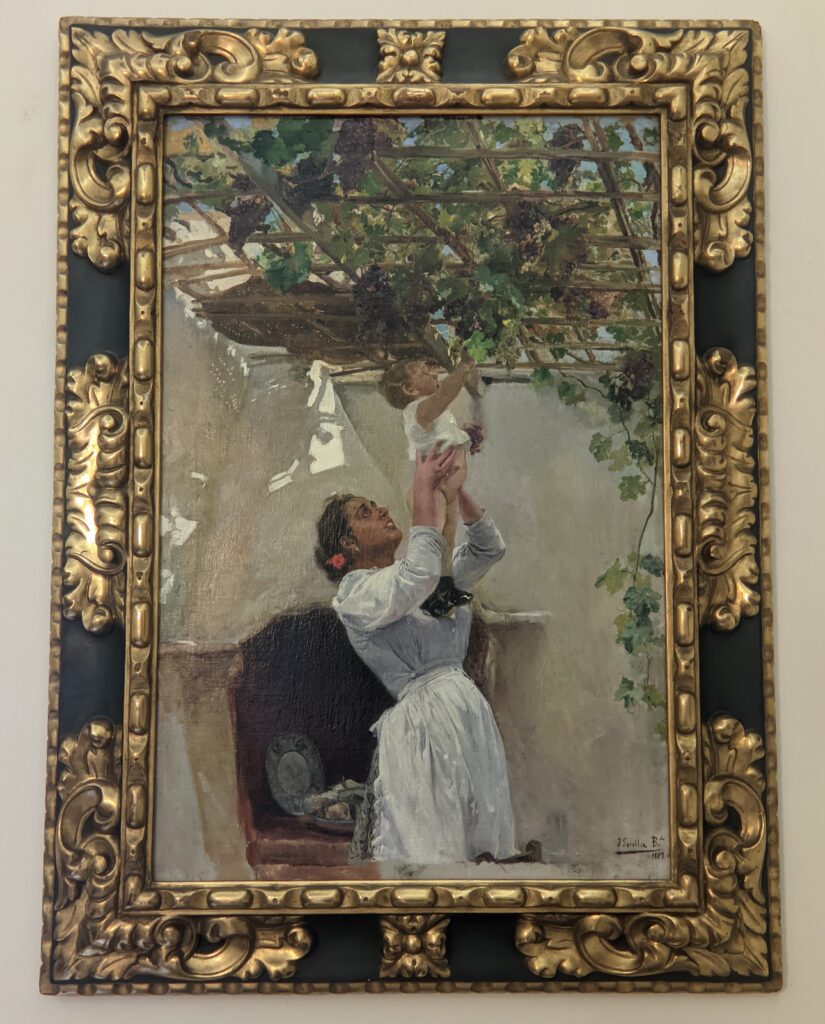
The term “luminism” in art was first used in a 1954 article by the historian John I. H. Baur to describe a unique style of seascape and landscape painting that emerged in the United States from the 1850s to the 1870s — an offshoot of the Hudson River School. Therefore “American Luminism” preceded French Impressionism and the artists most central to the development of this luminist style include Martin Johnson Heade, Sanford Gifford and Fitz Henry Lane.
Unlike Impressionism, American Luminism is characterized by attention to detail and the concealment of brushstrokes. Whatever terminology one chooses, it is certainly accurate to describe Sorolla as one of the great Painters of Light.
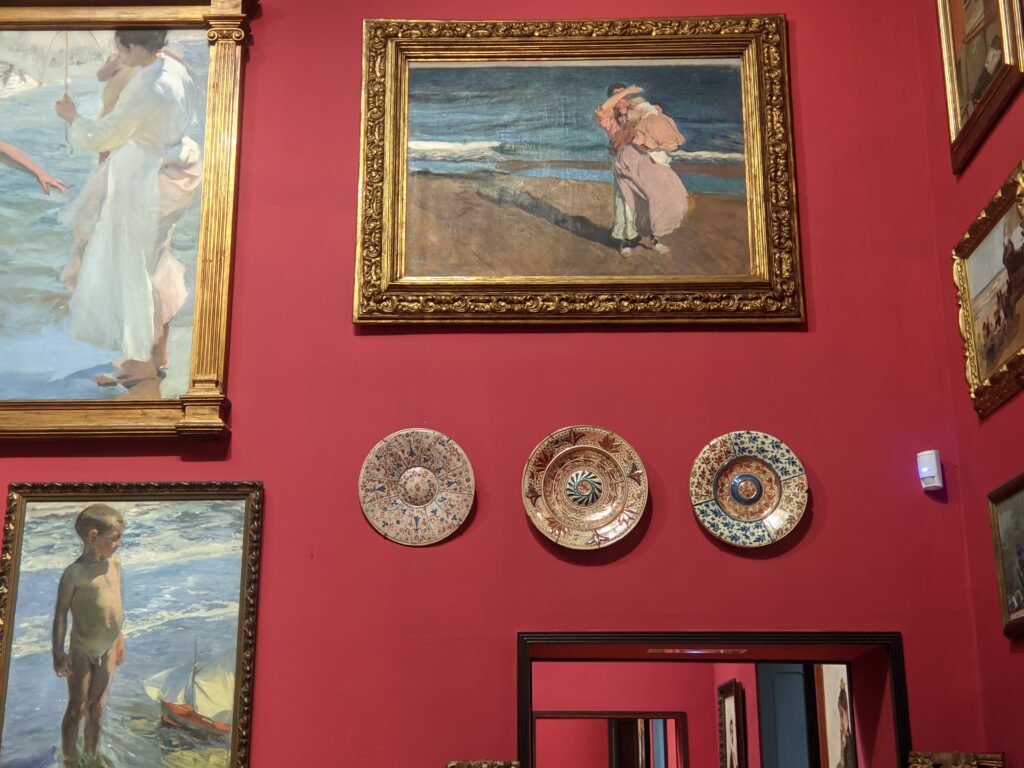

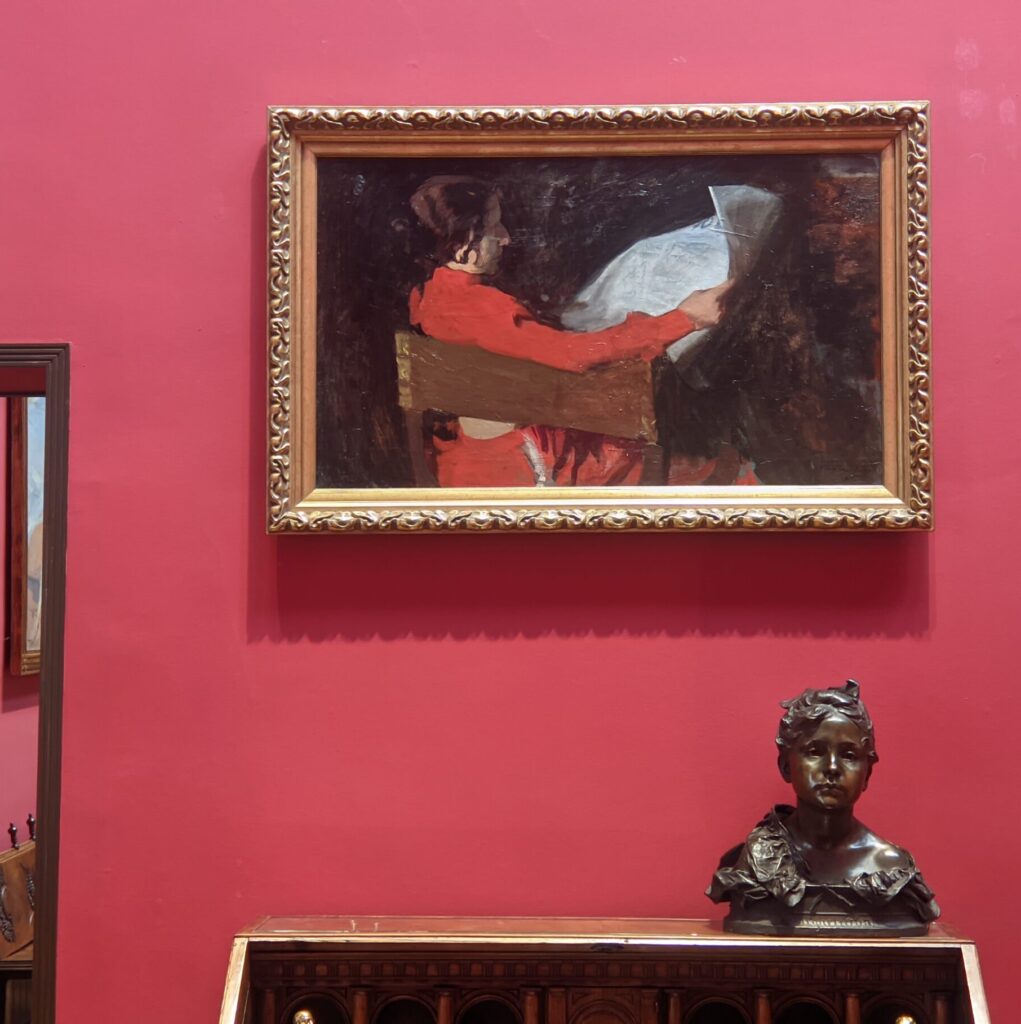
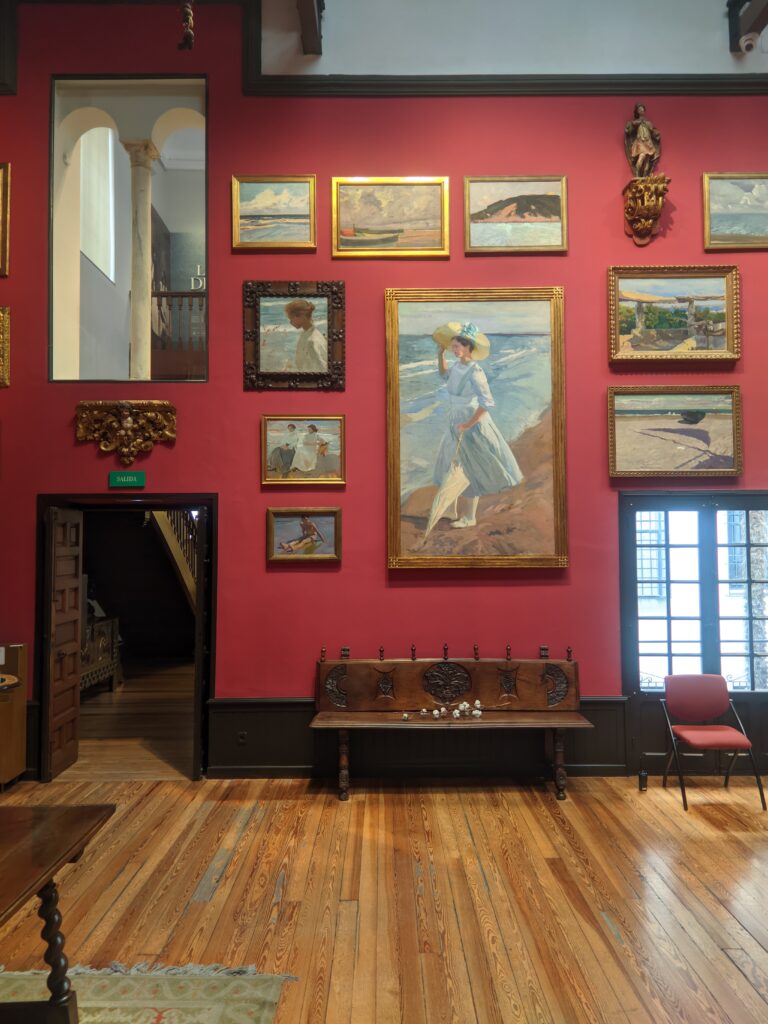


One reason we have chosen to highlight the Sorolla Museum for your pleasure is the fact that the original home decor remains intact. The well-preserved decorations and furniture were chosen by Sorolla himself. The building contains numerous masterpieces and certainly ranks among the best preserved artist’s homes in all of Europe.
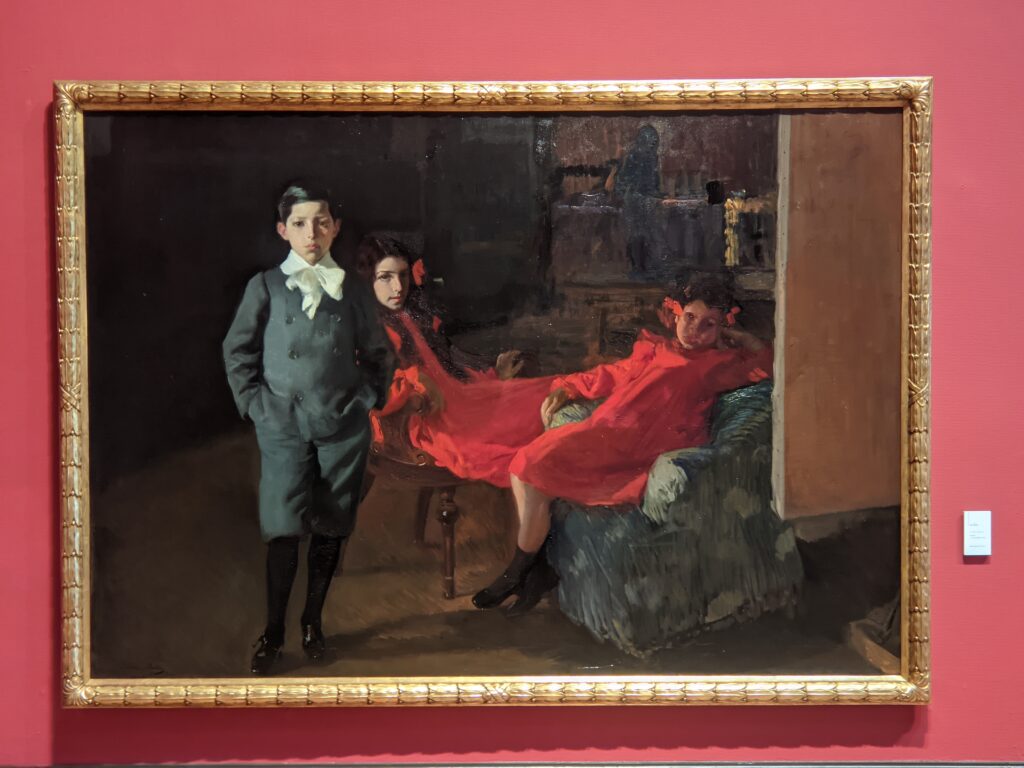

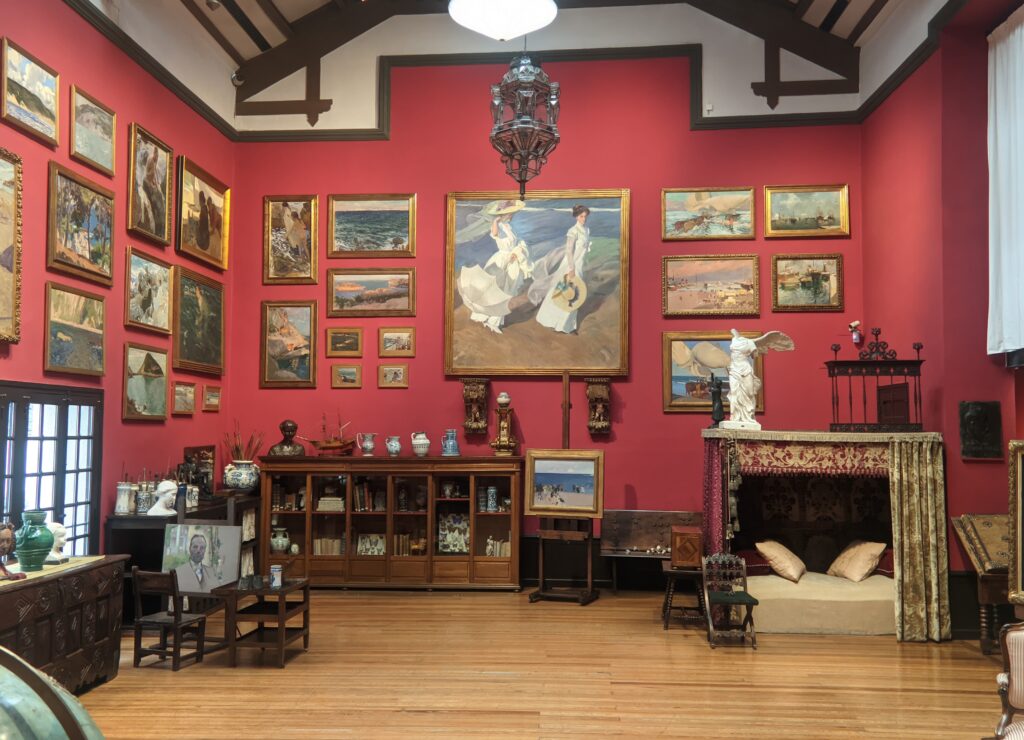
The Sorolla Museum is normally open from Tuesday through Sunday; closed on Mondays. The price of admission is 3 euros. By Metro, take the #1 train in the direction of Pinar de Chamartín to “Iglesia” station.
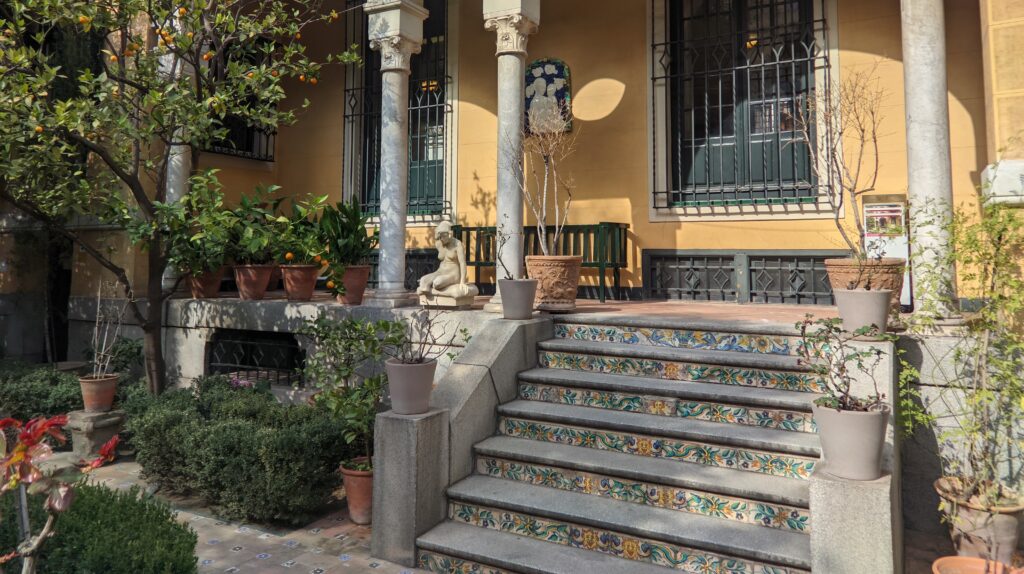
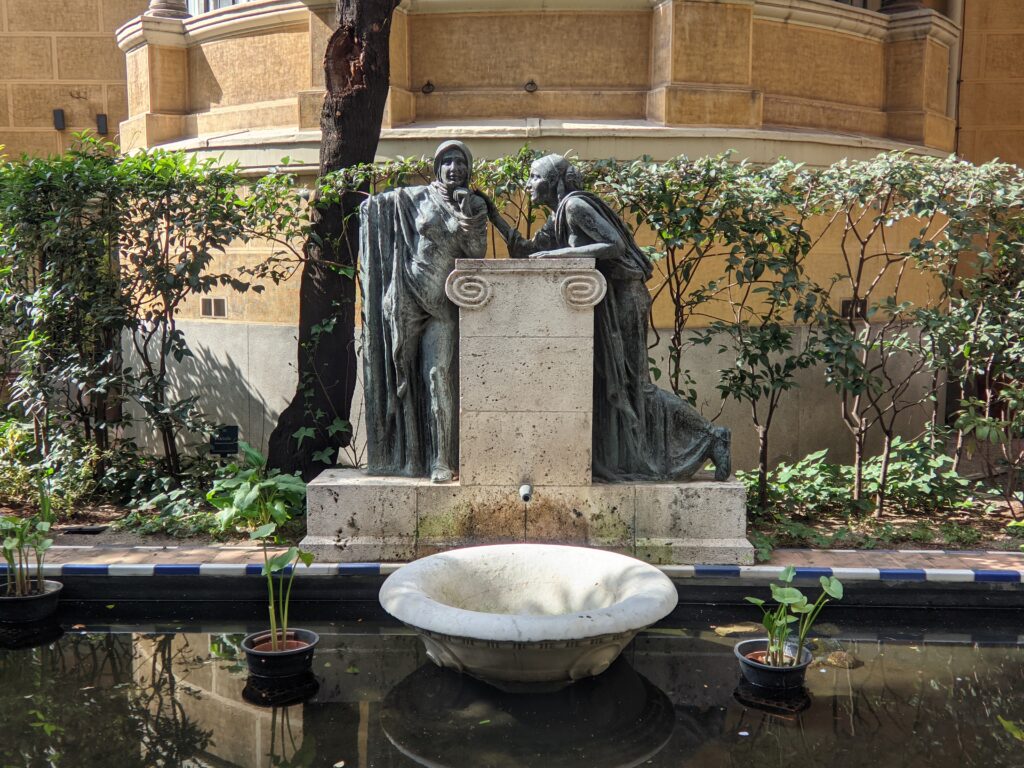
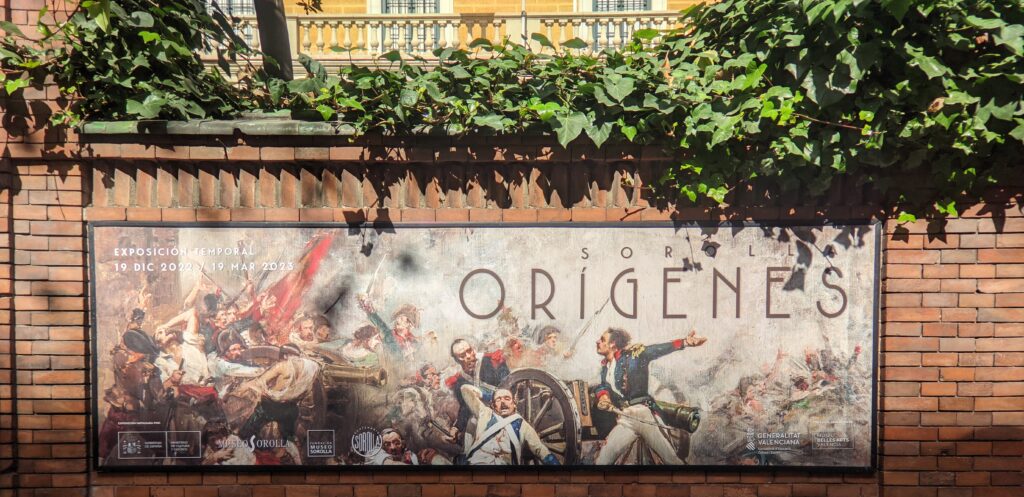
The Sorolla Museum also presents special exhibitions, such as the current show entitled “In the Sorolla Sea” which will be on view until September 17, 2023. For images from previous exhibitions such as “Sorolla ORIGINS” (which closed on March 19, 2023) and those on display in 2022 entitled “The Blissful Age — Childhood in Sorolla’s Painting” and “Sorolla in Black” please scroll down to the bottom of this article.
Fundación MAPFRE
A second outstanding venue for art can be found at the MAPFRE Foundation’s “Sala Recoletos” exhibition hall at Paseo de Recoletos, 23 in Madrid — an easy and pleasant 10-minute walk from The Prado and Thyssen-Bornemisza Museums.
The current exhibit through August 27, 2023 features the photographs of Louis Stettner, who was born in Brooklyn, New York in 1922 and died in France in 2016. Stettner is best known for his black & white images of Paris and New York City.




MAPFRE’s previous exhibition entitled “Revelation” featuring the work of Leonora Carrington, an artist we particularly admire, was presented in Madrid from February 11 through May 7, 2023. Mary Leonora Carrington was born in Lancashire, England in 1917, studied art in Florence and London, encountered the founders of the Surrealist movement between 1938 and 1940 in France where she collaborated artistically with her lover Max Ernst, and spent most of her adult life in Mexico City. She died in Mexico at the age of 94 in 2011.
Widely regarded as a Surrealist painter, in fact Carrington forged an original path in the world of art. André Breton, one of the founders of Surrealism, was well-versed in the psychoanalytical writings of Sigmund Freud, with particular interest in the idea that the unconscious mind — which produced dreams — was the source of artistic creativity. While Dalí, Magritte, Ernst and other painters explored their art through the lens of discoveries in psychoanalysis, Carrington had no interest in Freudianism. Breton referred to Leonora Carrington as “Sorceress-woman” during the years when Breton declared that “magic” was the new paradigm for the interpretation of the world and its mysteries. “Sorceress-woman” and “femme enfant” {little-girlish woman} were demeaning labels used by some of the male poets and painters within Surrealism. It was Carrington, however, who would have the last laugh by liberating herself from such epithets to become a great artist, influential novelist and icon within the women’s liberation movement. In addition to her interests in Jewish, Celtic and Native American myth, Carrington investigated different forms of the occult, astrology, mythology, divinatory arts and mystery currents of the ancient world as alternative routes for accessing the subconscious and uncovering mysteries of humankind, nature and the universe.

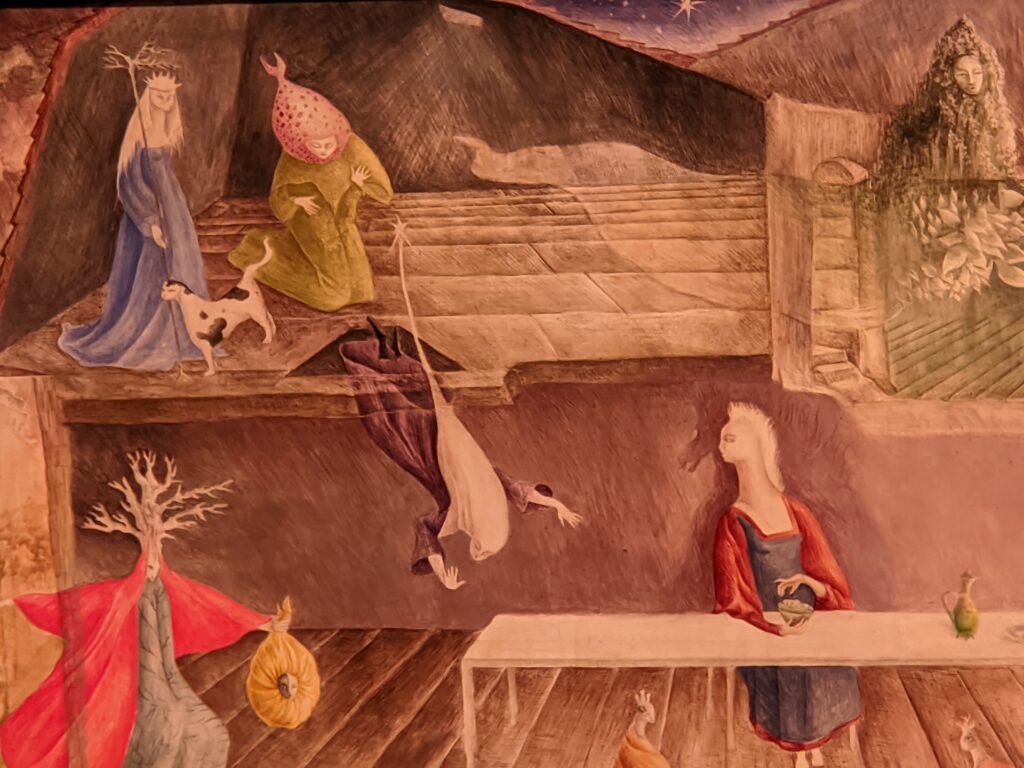
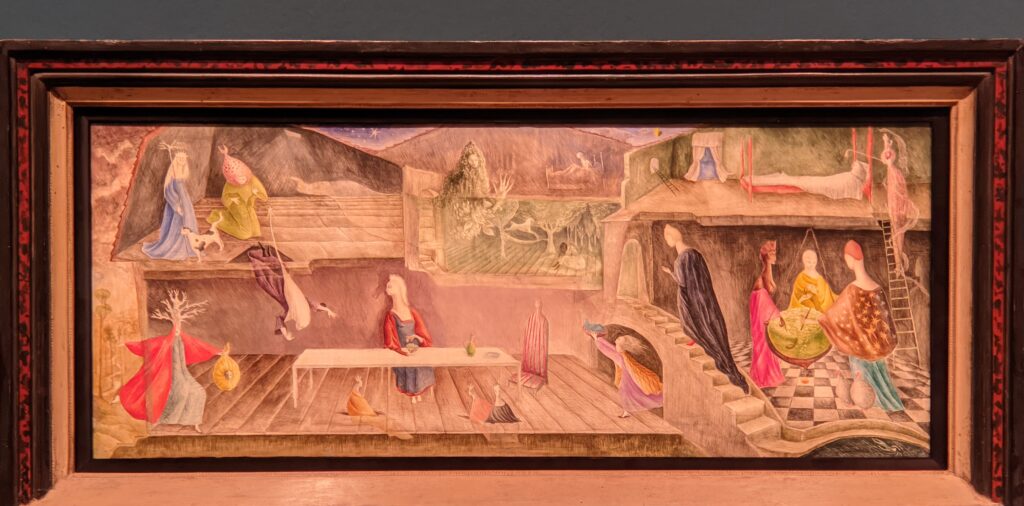

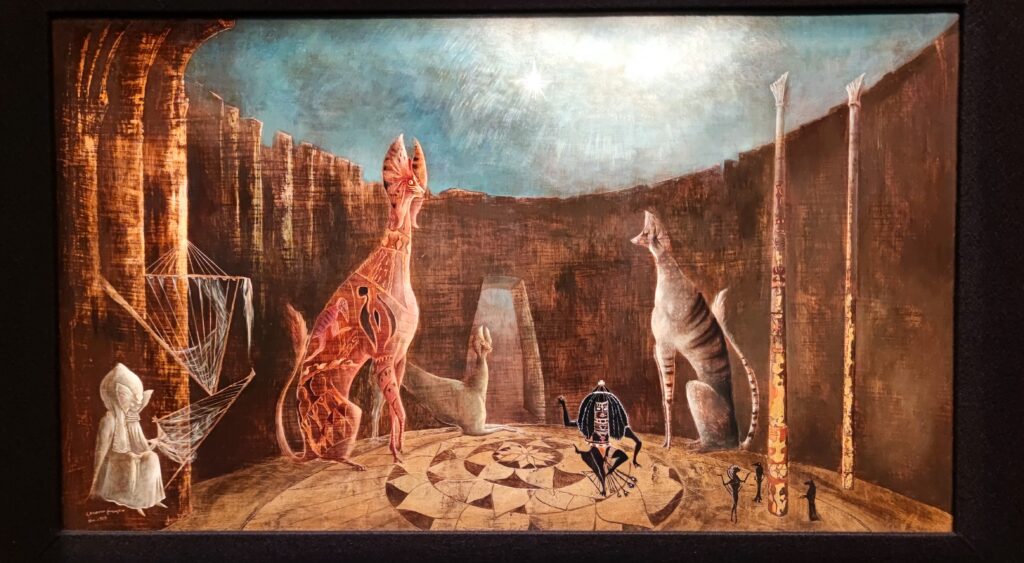

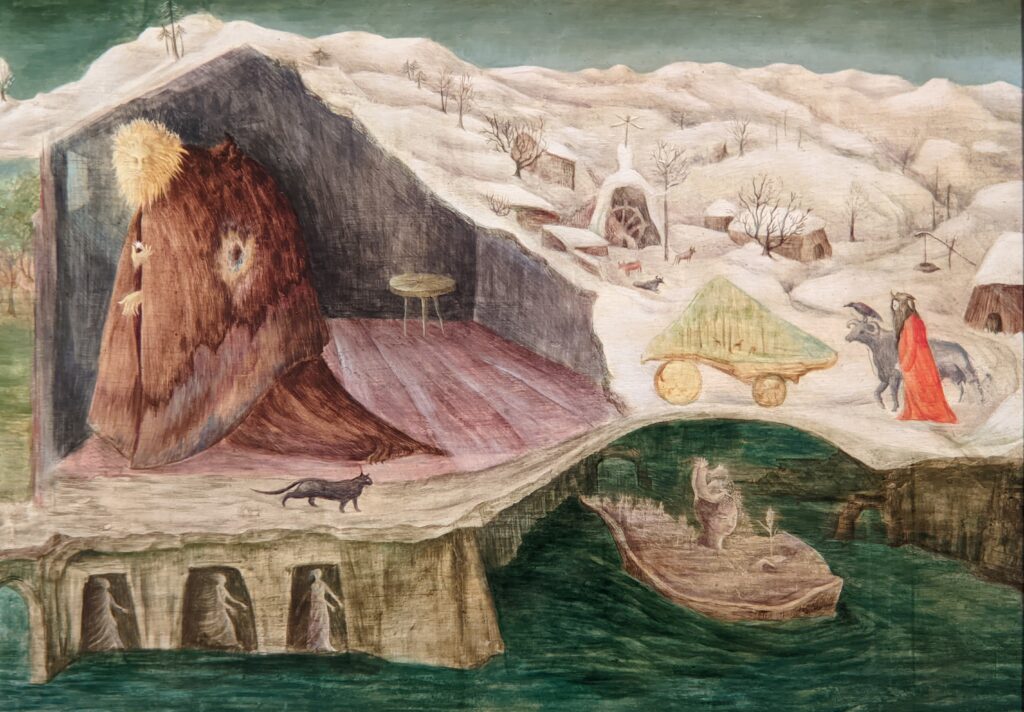



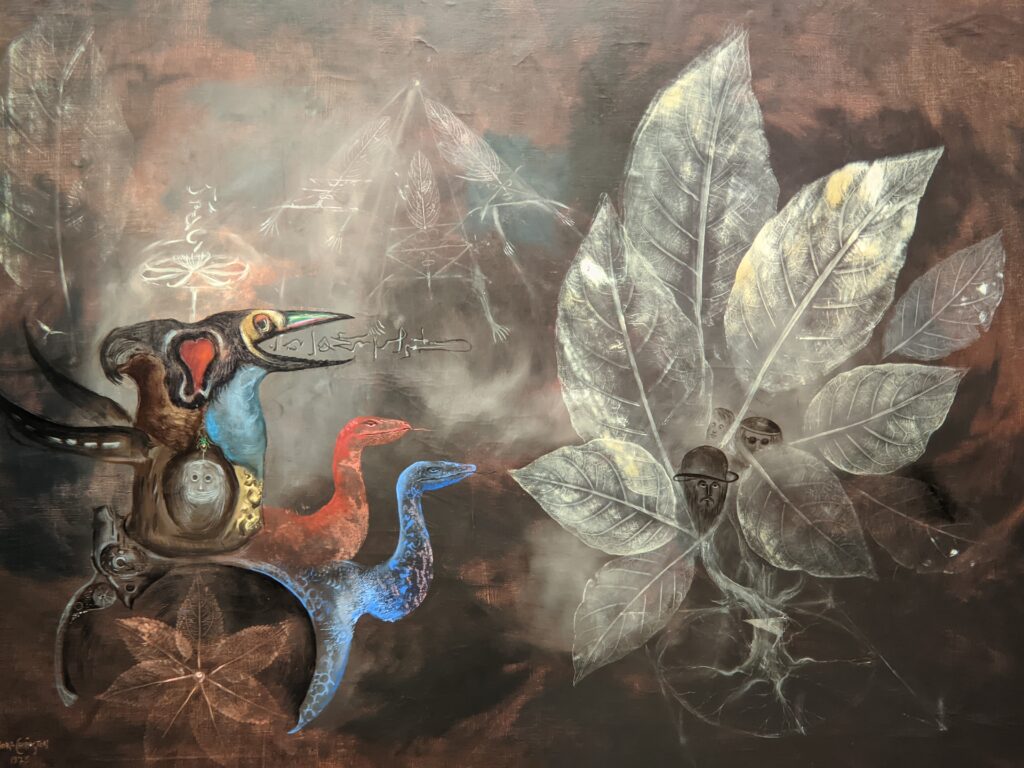

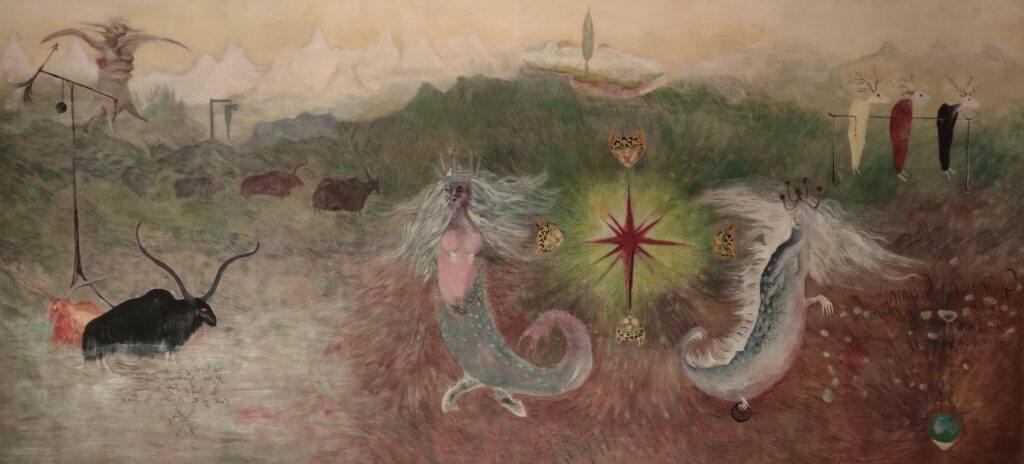
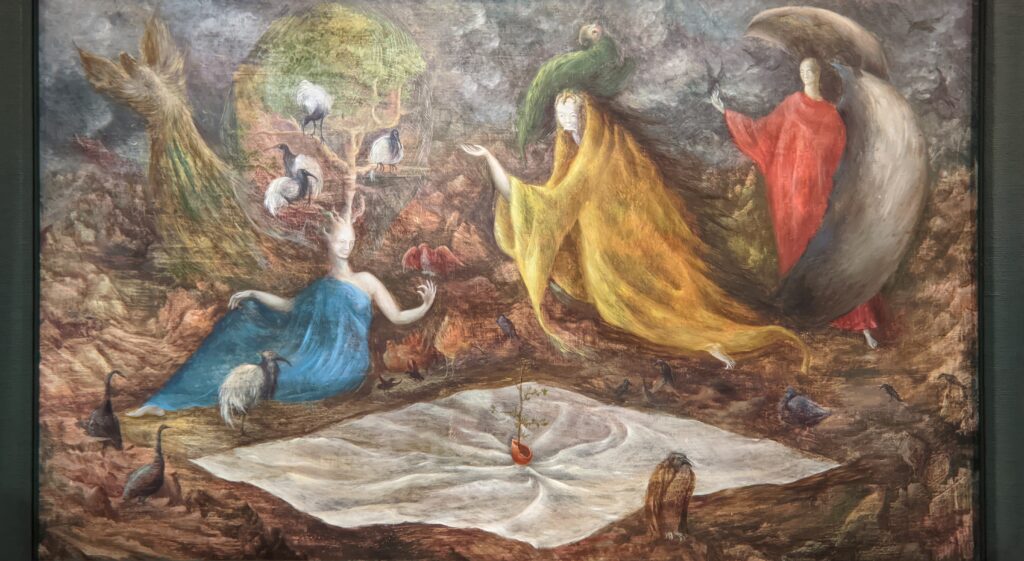
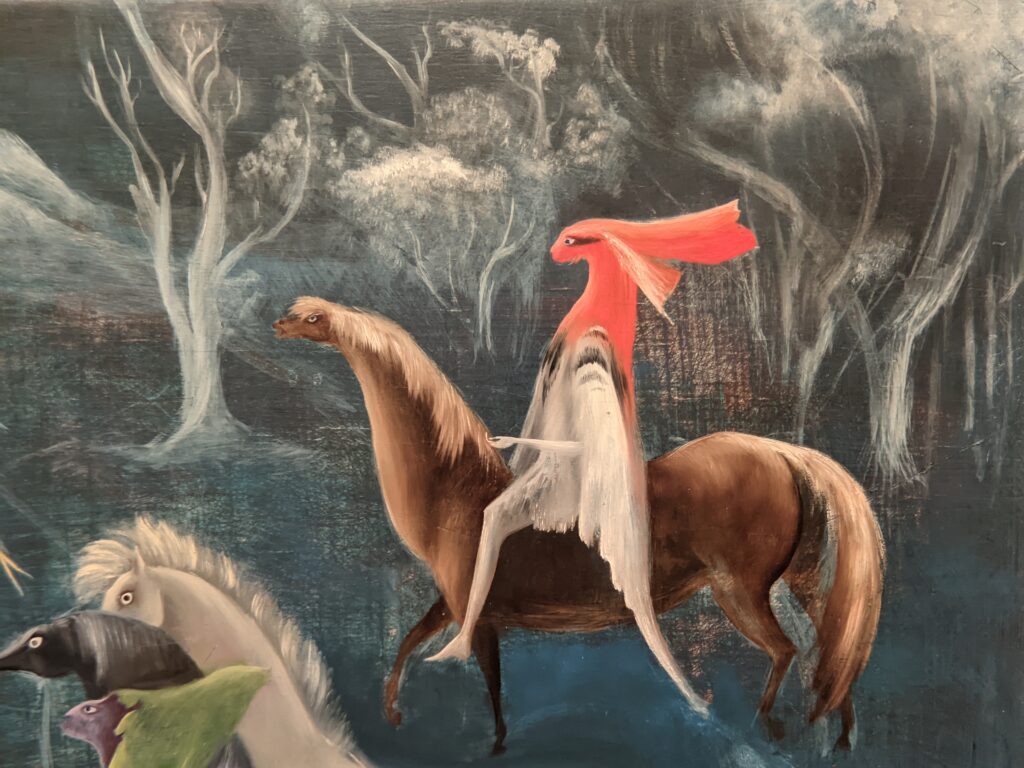
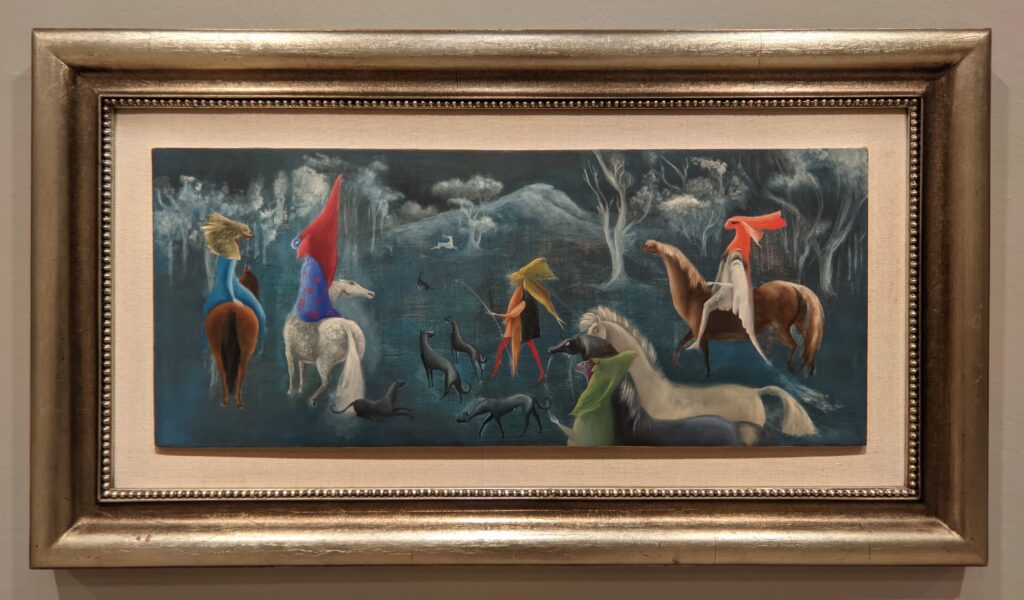

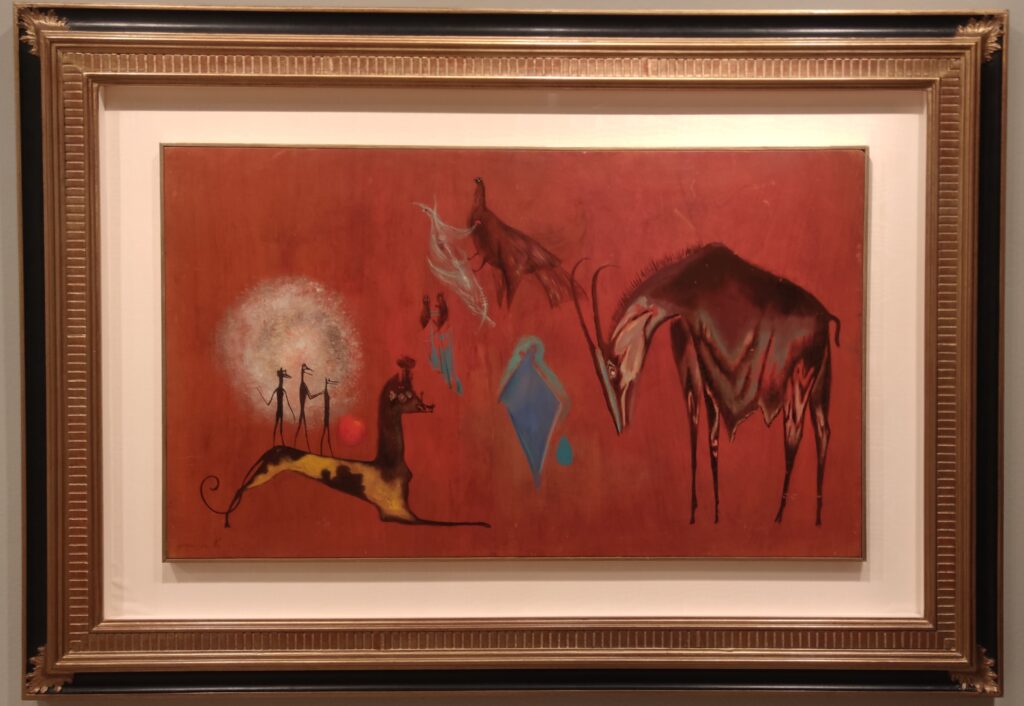
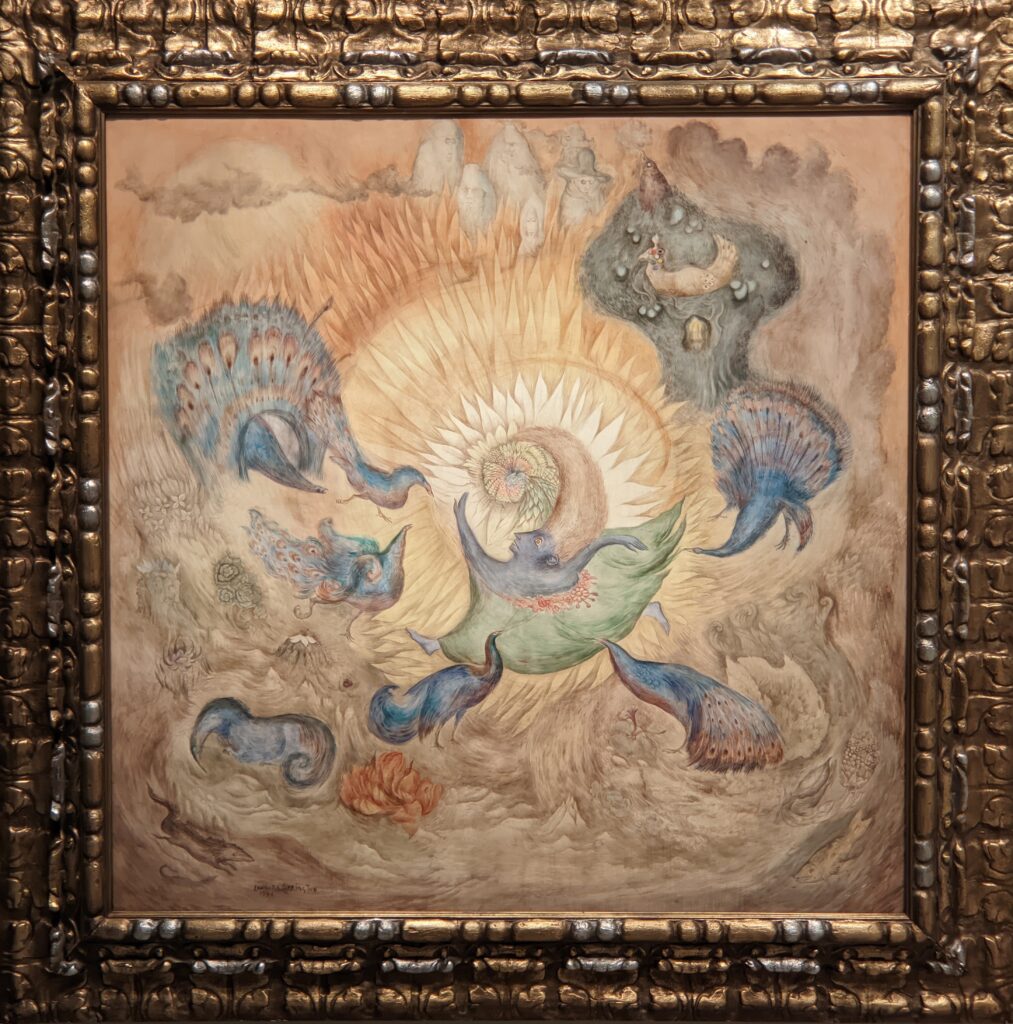
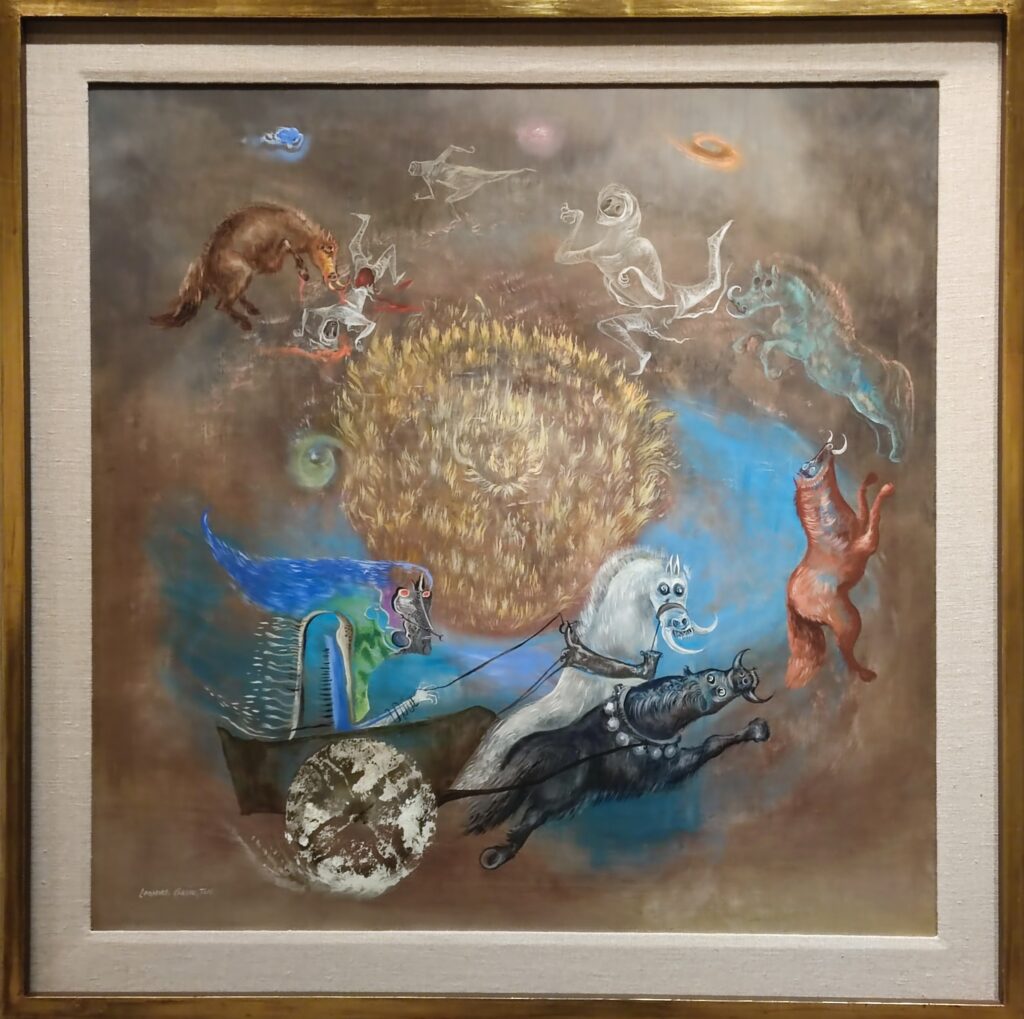
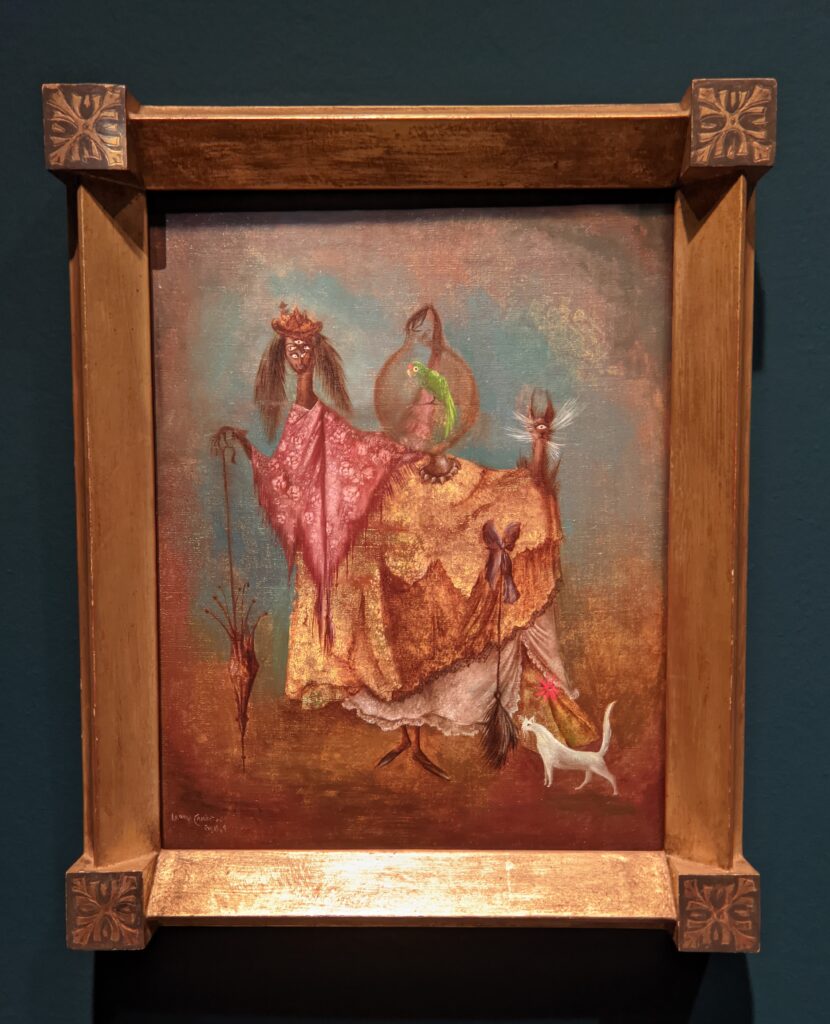

Leonora Carrington possessed a remarkable imagination. A unique and versatile artist, Carrington engaged in a quest for new forms of expression and her body of work continues to ask us as viewers to examine and decipher our own inner truths and uncertainties.
This landmark exhibit marked the first major presentation of Carrington’s oeuvre in Spain. The visual world of Leonora Carrington is rich, complex and thought-provoking — she remains one of our heroes!

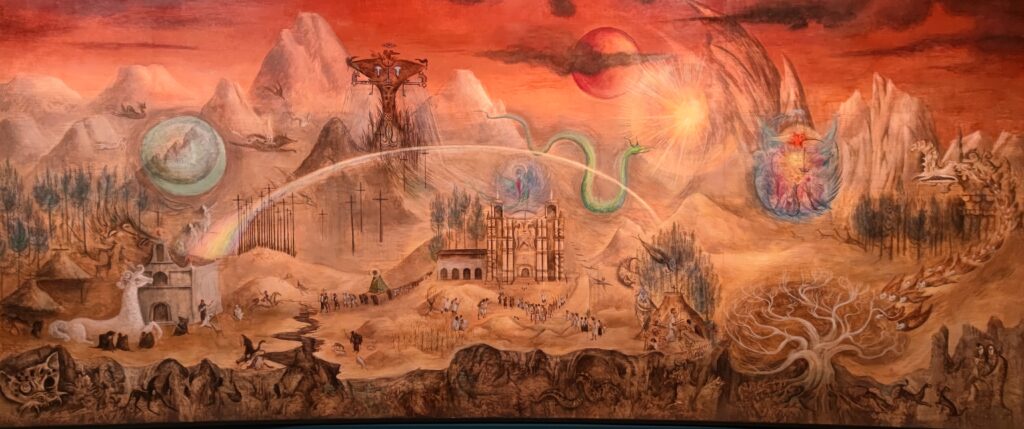
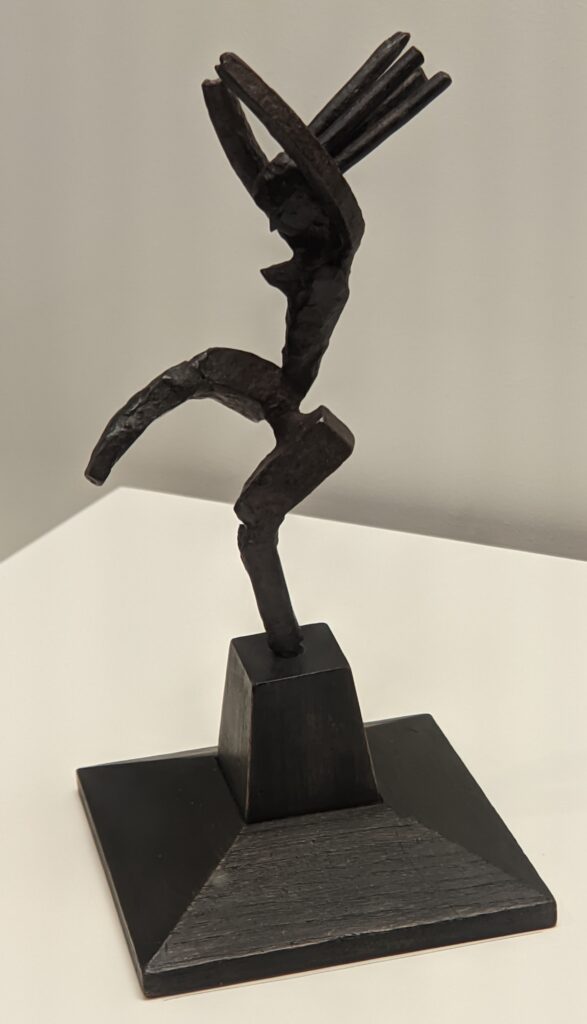
The star of MAPFRE’s 2022 season of exhibitions was Julio González (1876 — 1942), a painter, ironsmith and sculptor who befriended Pablo Picasso at the Catalan cafe “Els Quatre Gats” in fin-de-siècle Barcelona. During this period (late modernisme), Picasso was age 17, González was five years older, and the cafe/bar was the setting for various artistic debates which had a significant impact on their respective careers and on those of other artists of their generation, such as Joan Miro, Isidre Nonell, Joaquim Mir and Pablo Gargallo. It should be mentioned that craft skills associated with construction and interior design (including a revival of using wrought iron in the decorative arts) flourished at this time with the emergence of modernista architecture.
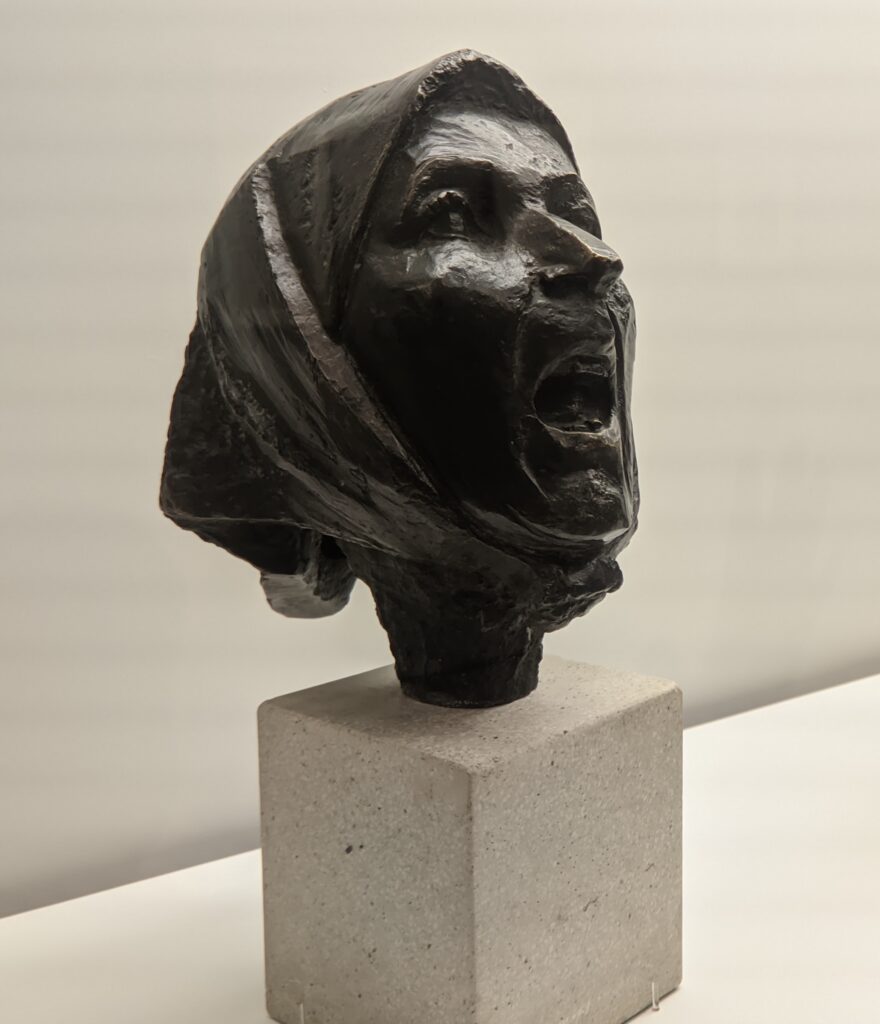
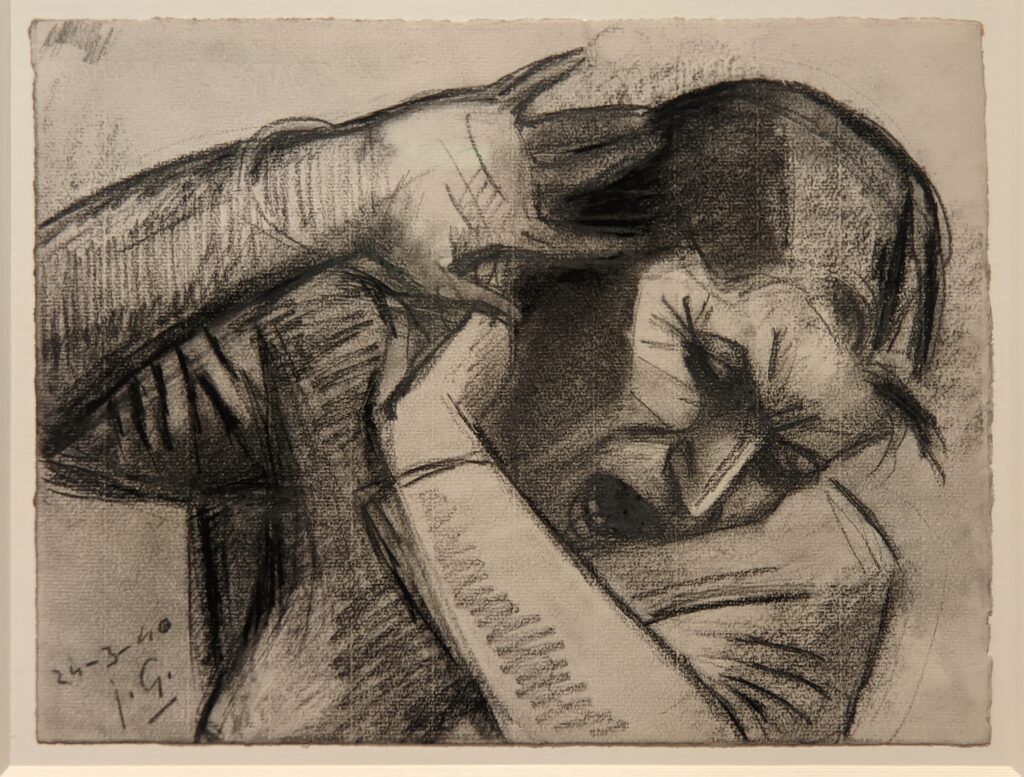
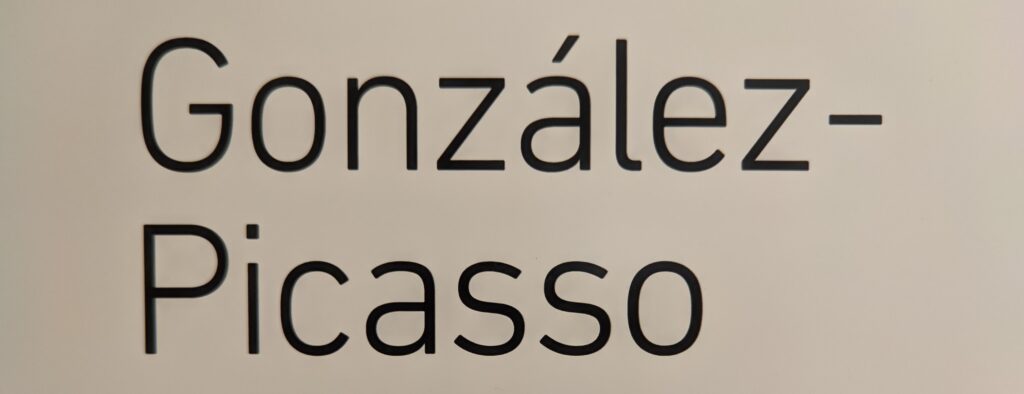
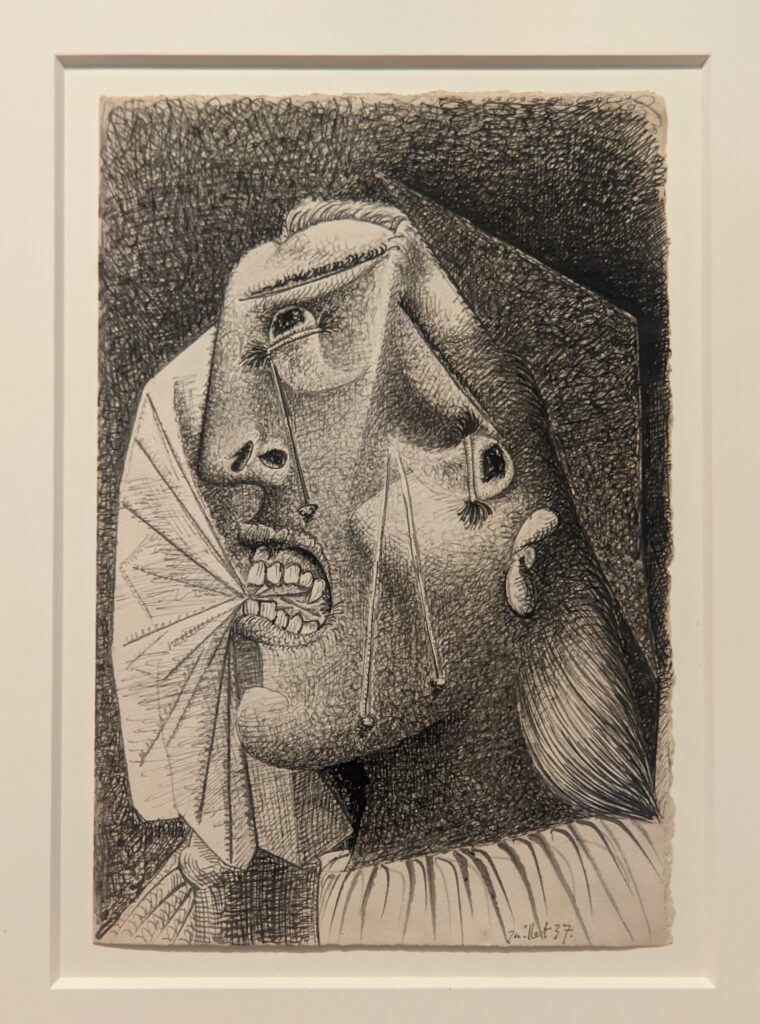

Isidre Nonell, Juan Gris & Pablo Gargallo

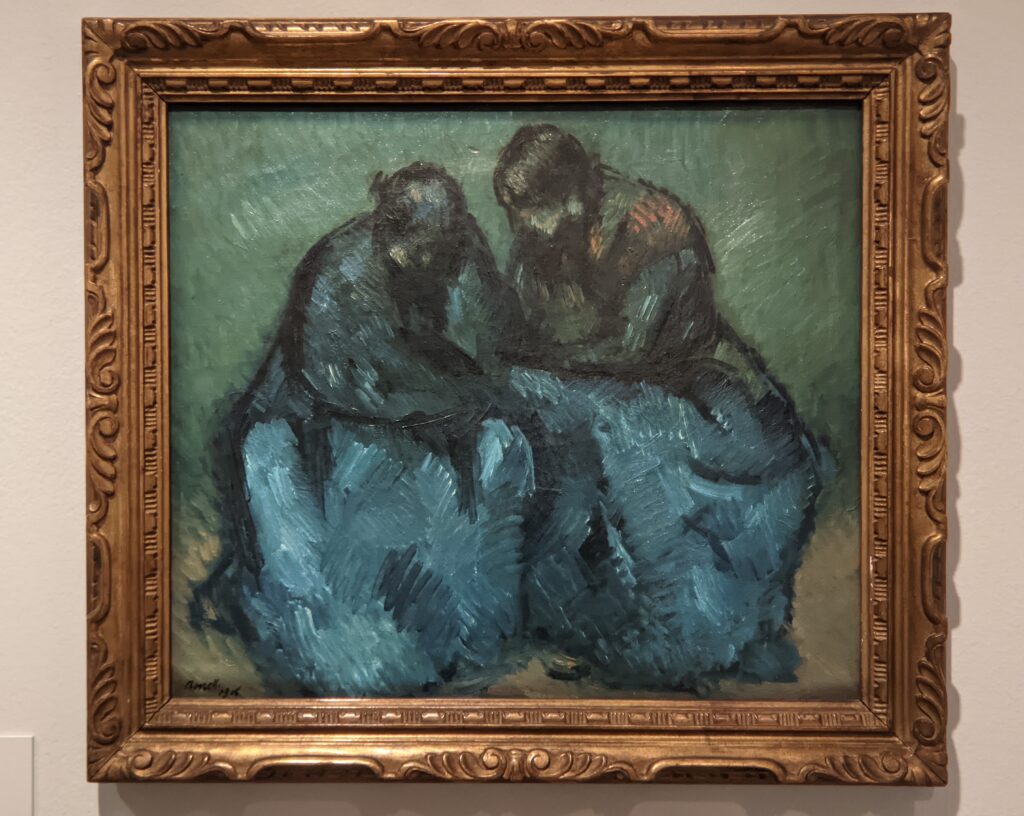
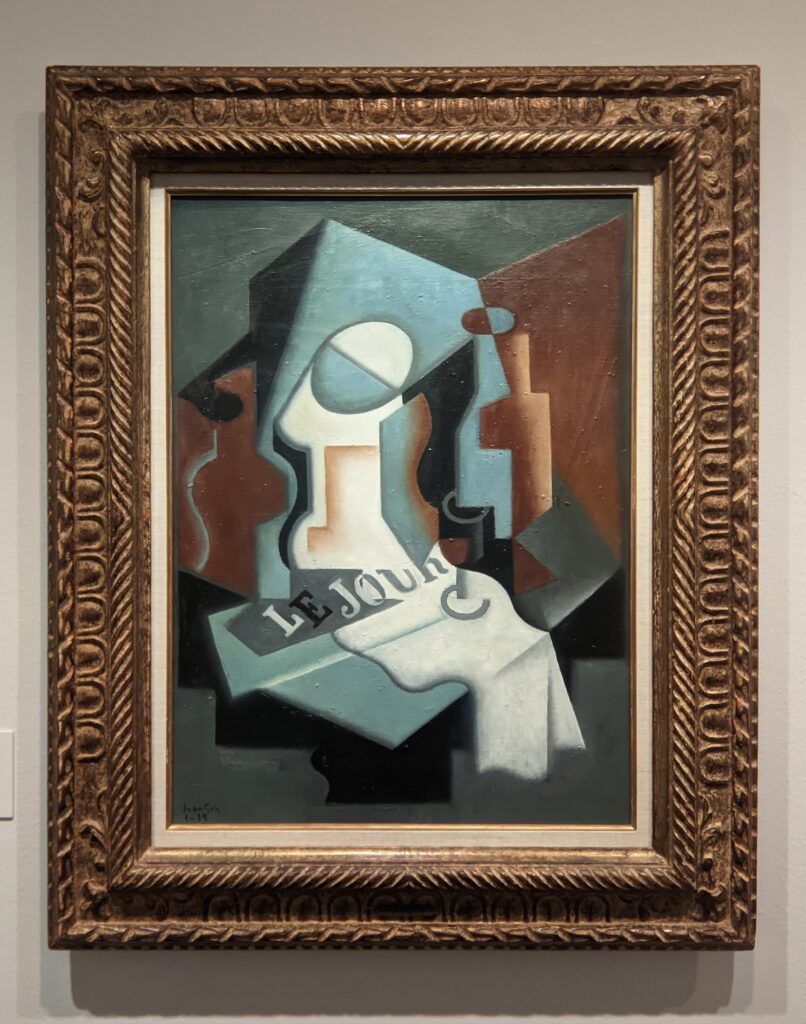
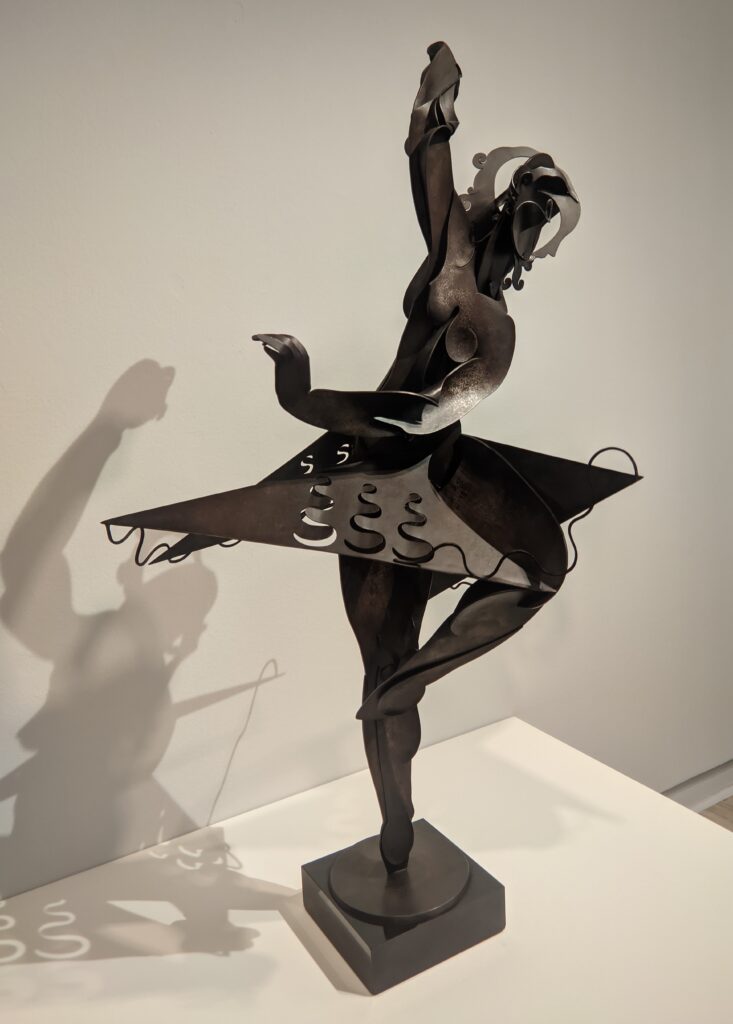
Julio González
González’s grandfather was a goldsmith in Galicia. His father was a metalsmith who owned a workshop where Julio, as a young boy, learned the techniques of silver, gold and iron metalwork. Julio’s mother also came from a long line of artists.

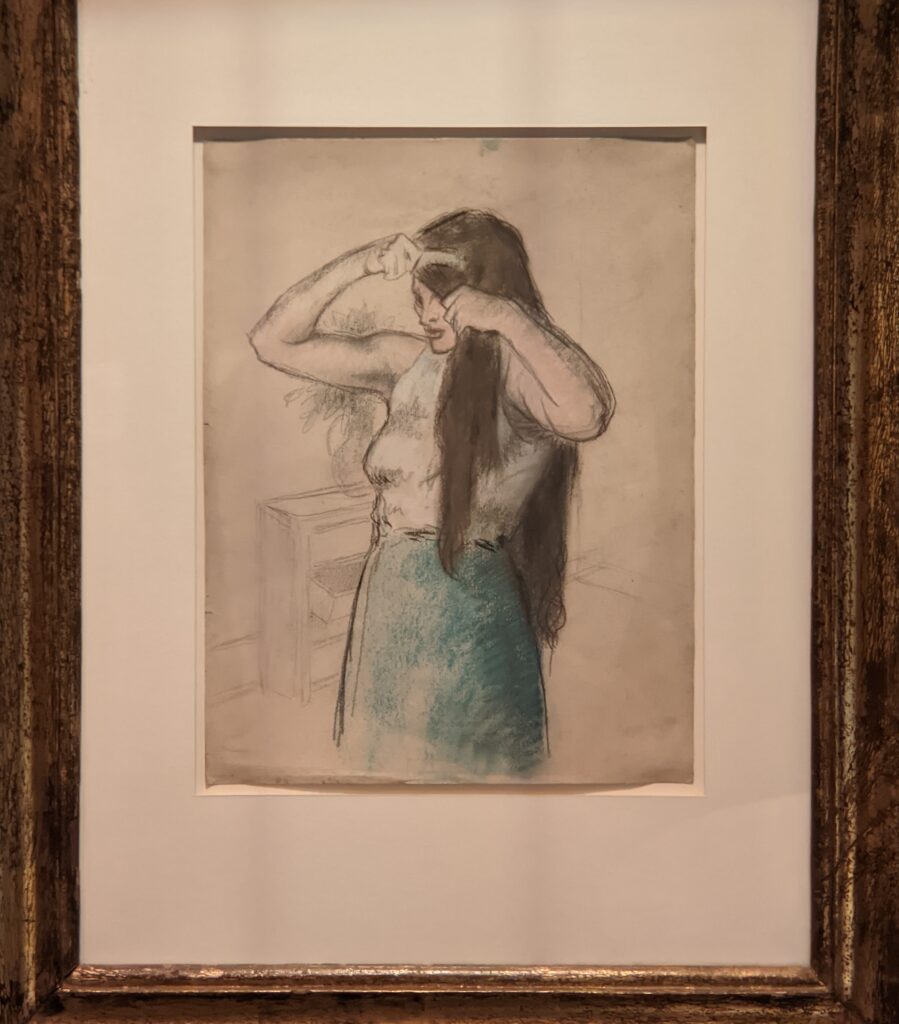
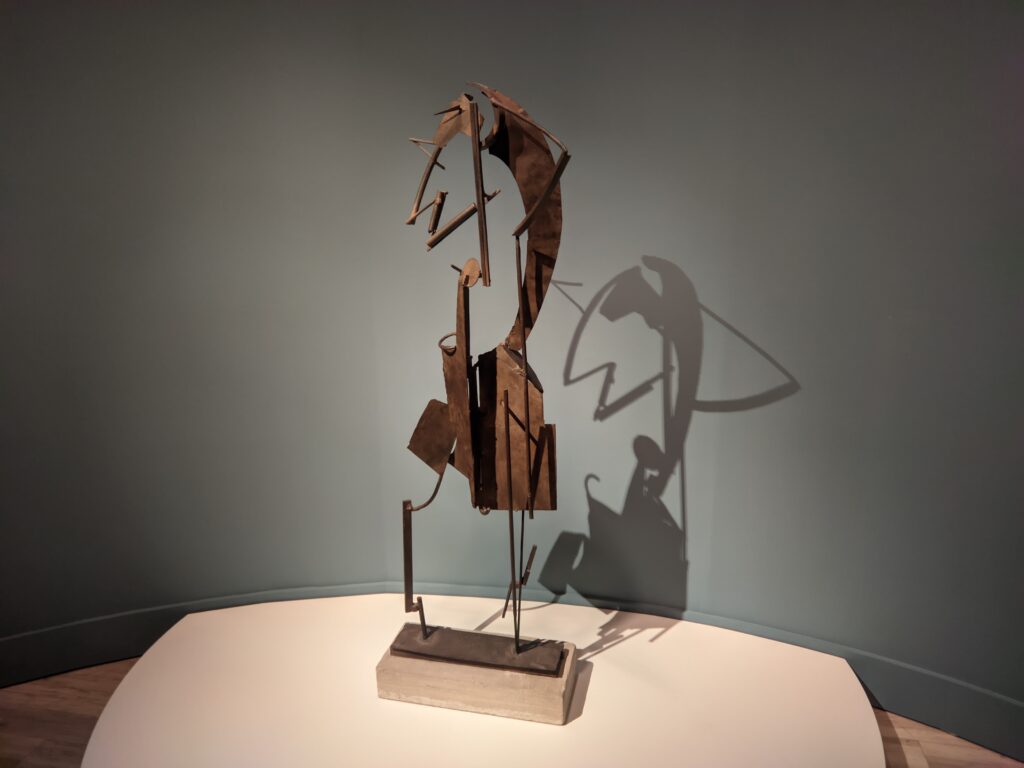
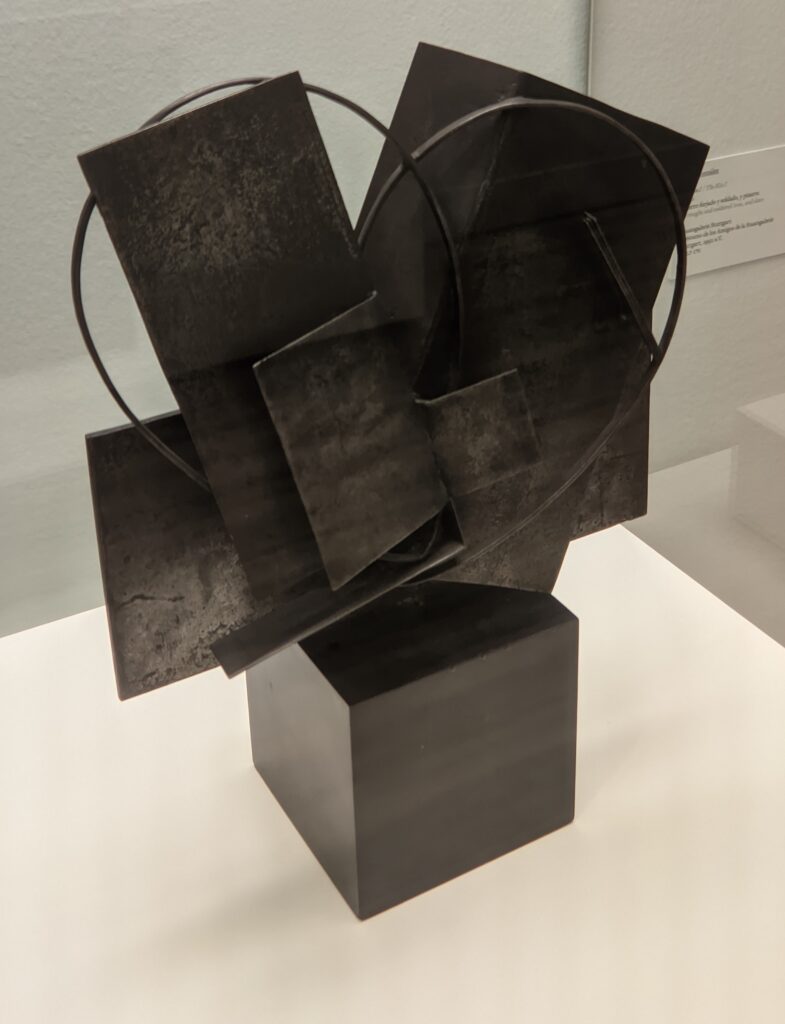
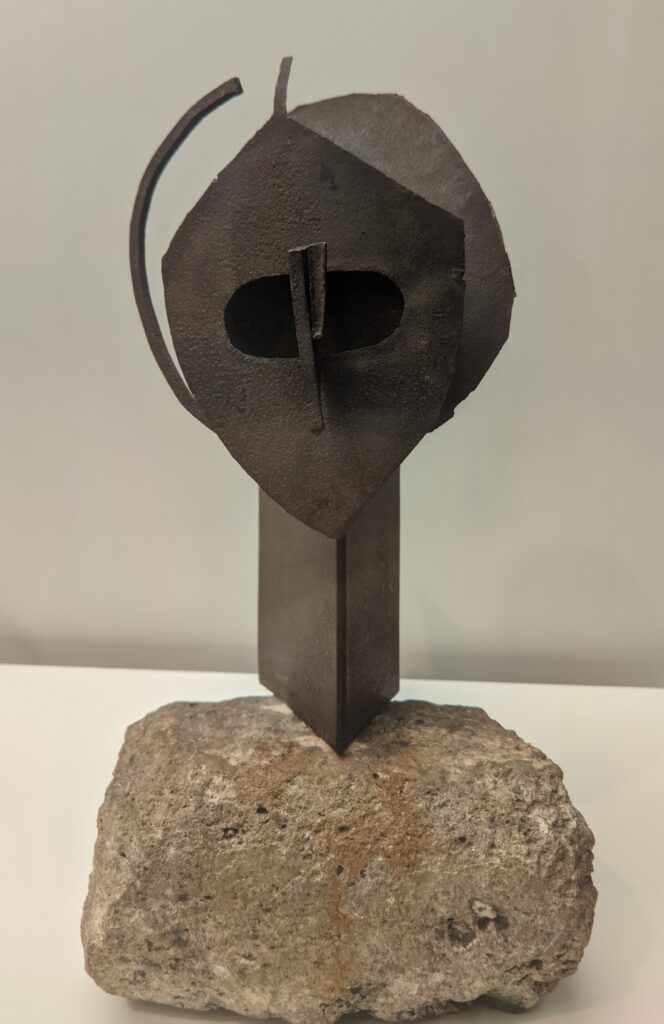
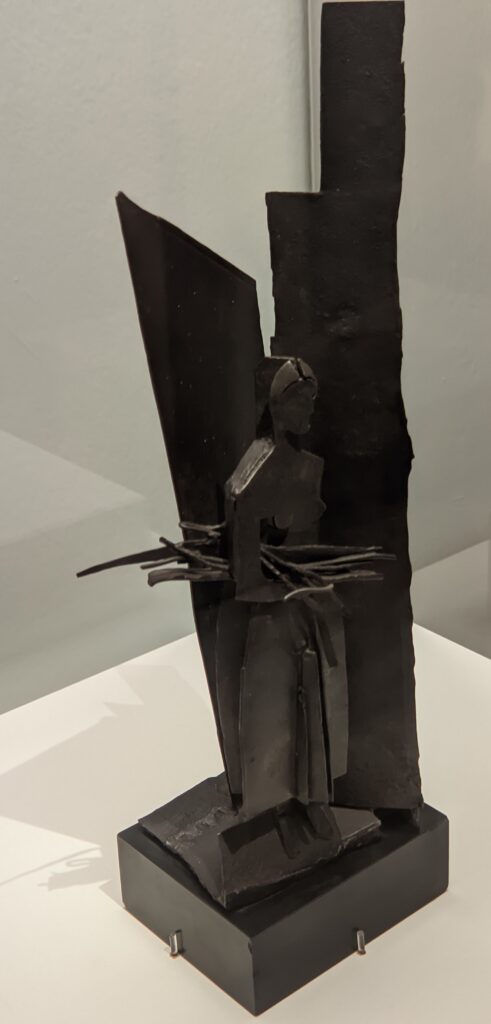
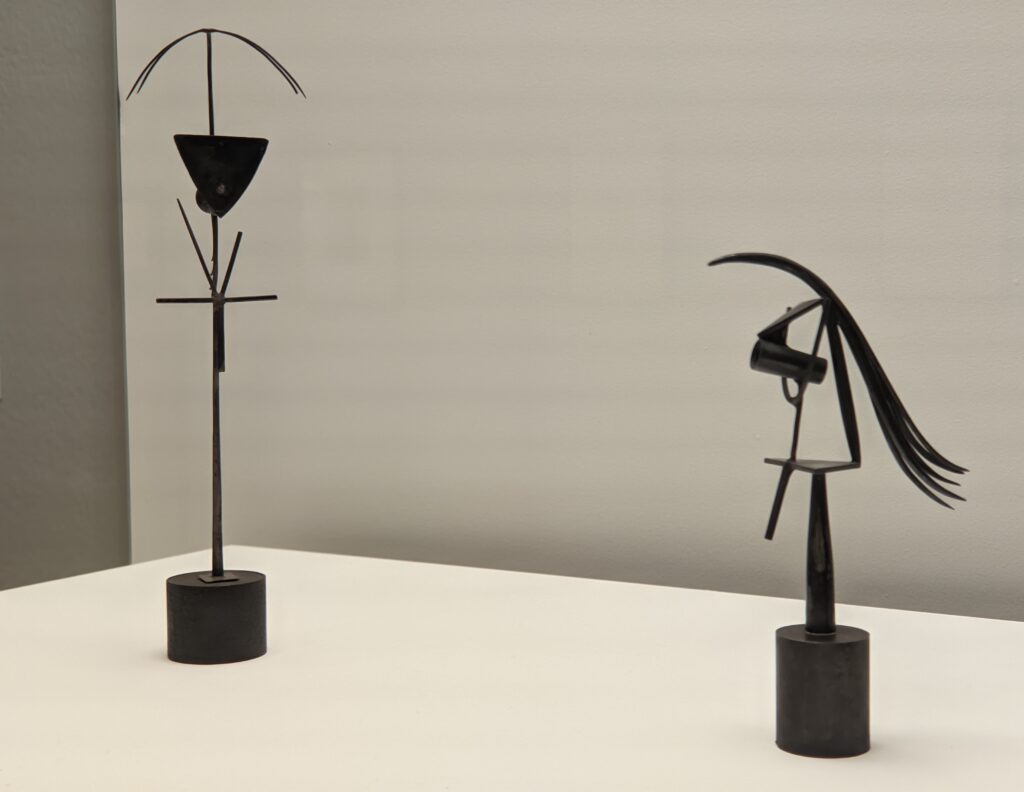
Picasso & González’s Collaboration in Paris (1928 — 1932)
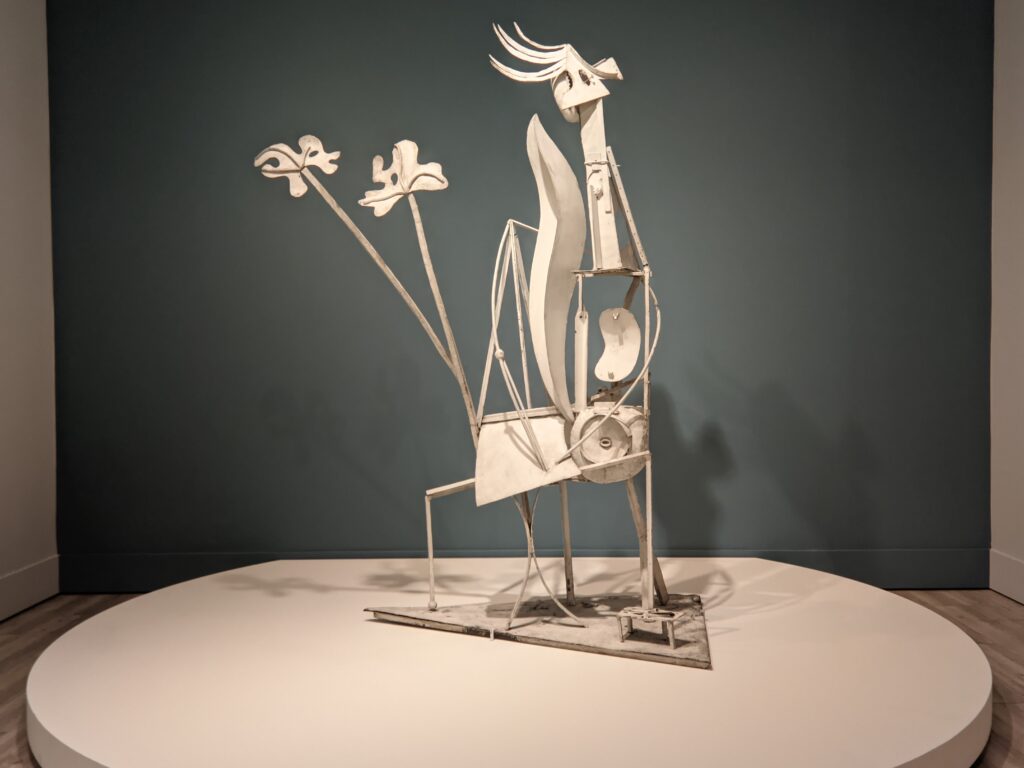
In 1928, Pablo Picasso conceived of creating a transparent, iron sculpture, so he turned to his old friend, González, “in whose hands metals became as malleable as butter,” according to Picasso. With González’s technical mastery, Picasso was able to learn about the process of iron smoldering (that is, the potential wrought iron held for him as a sculptor), while creating Woman in the Garden (above), one of the most important sculptures of the 20th century. For González this was his opportunity to take what he valued most from Cubism and make it his own (see The Harlequin, below) by producing a series of dematerialized sculptures that would nurture and sustain his focus an an artist until his death in 1942. Through this mutually fruitful collaboration, abstraction was introduced into sculpture, thus earning Julio González posthumous recognition as one of the fathers of abstract iron sculpture.

Pablo Picasso
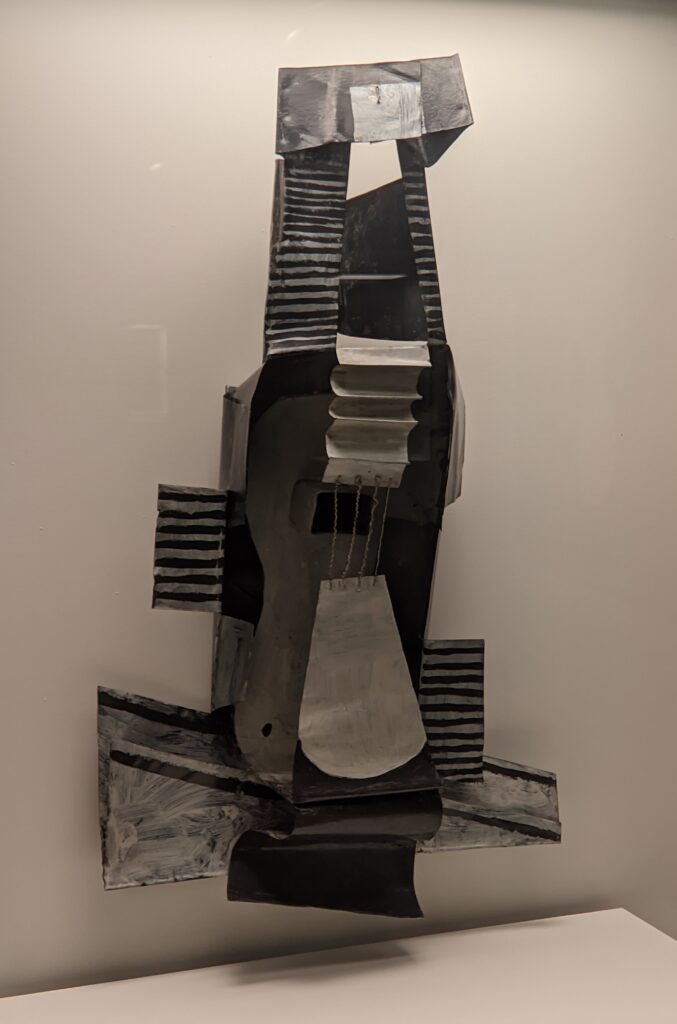

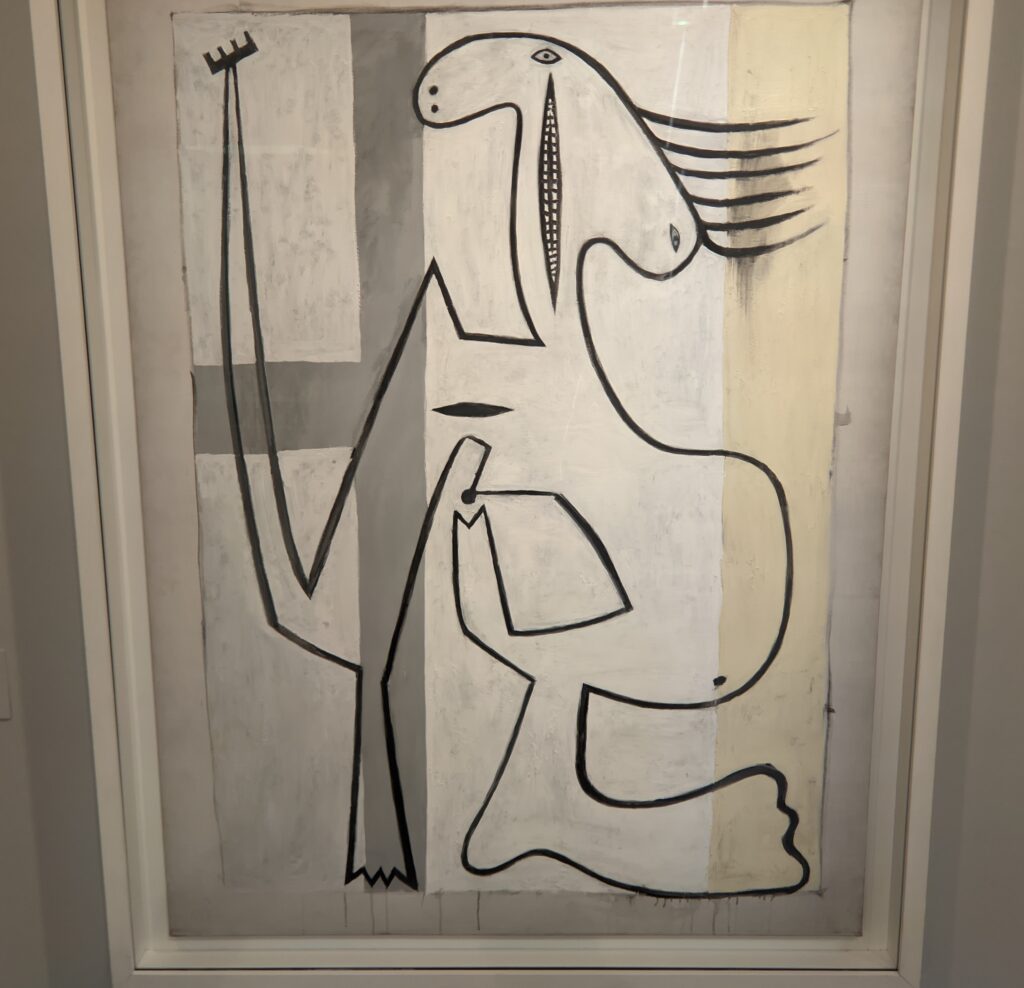
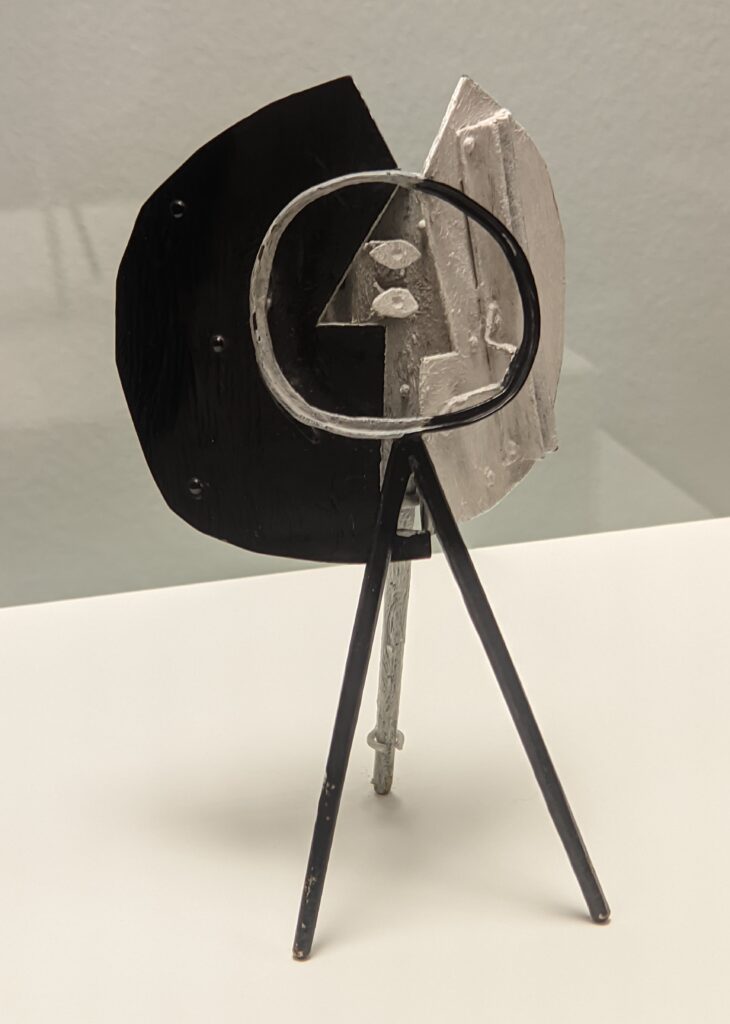

The Barbarity of the Spanish Civil War (1936 — 1939)
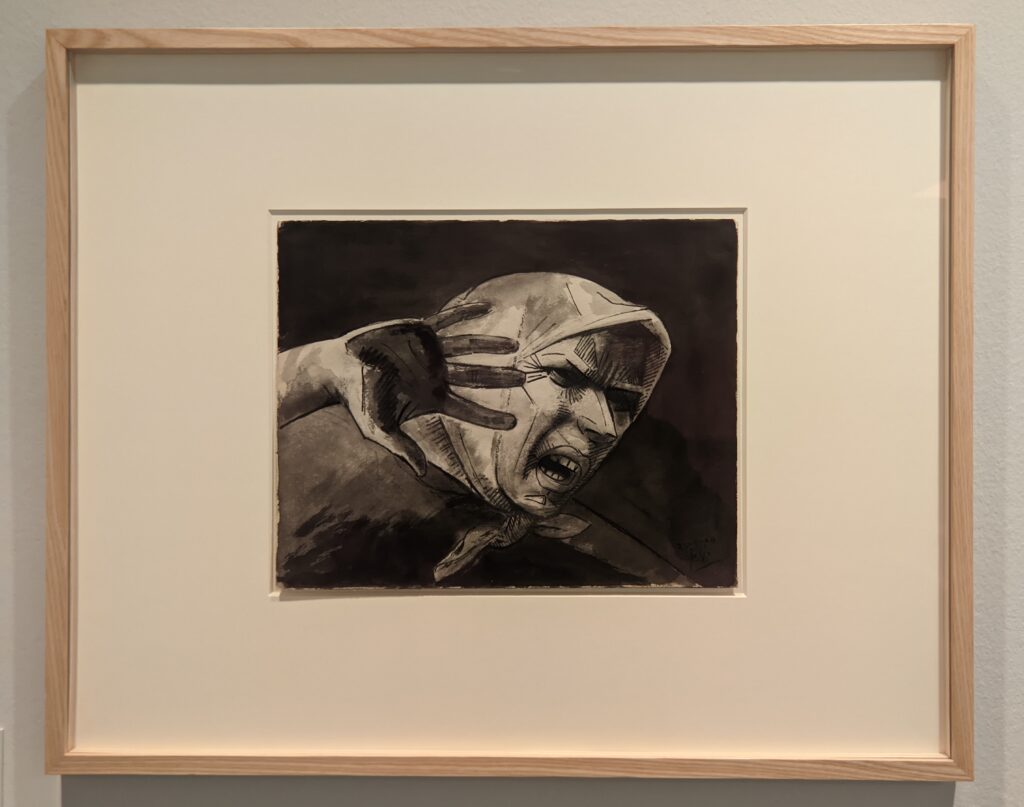
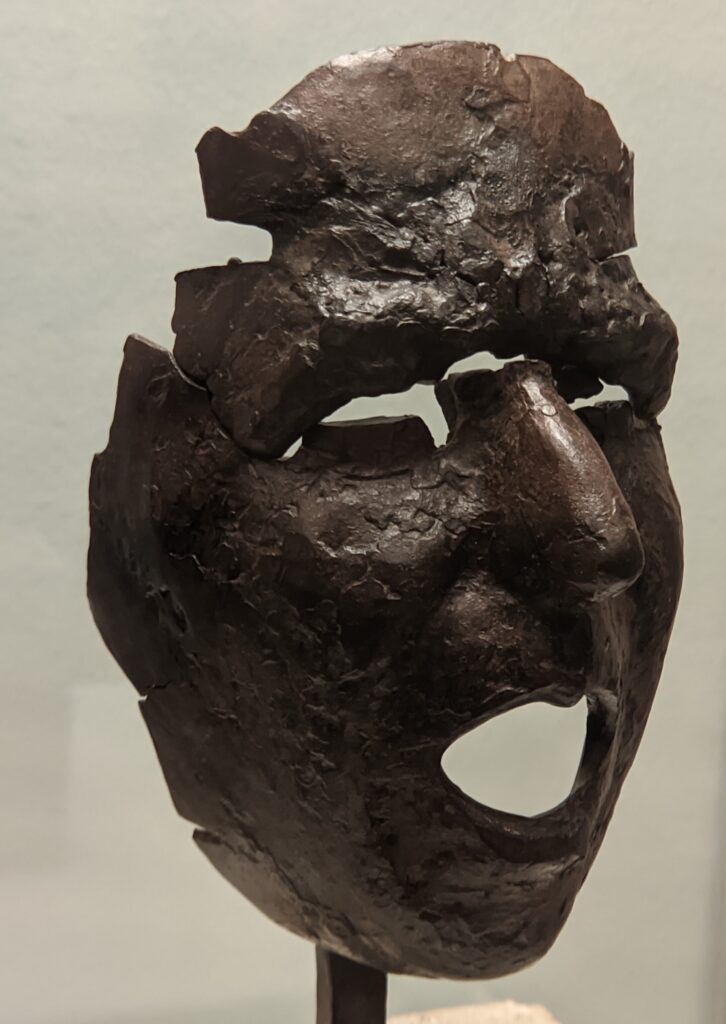
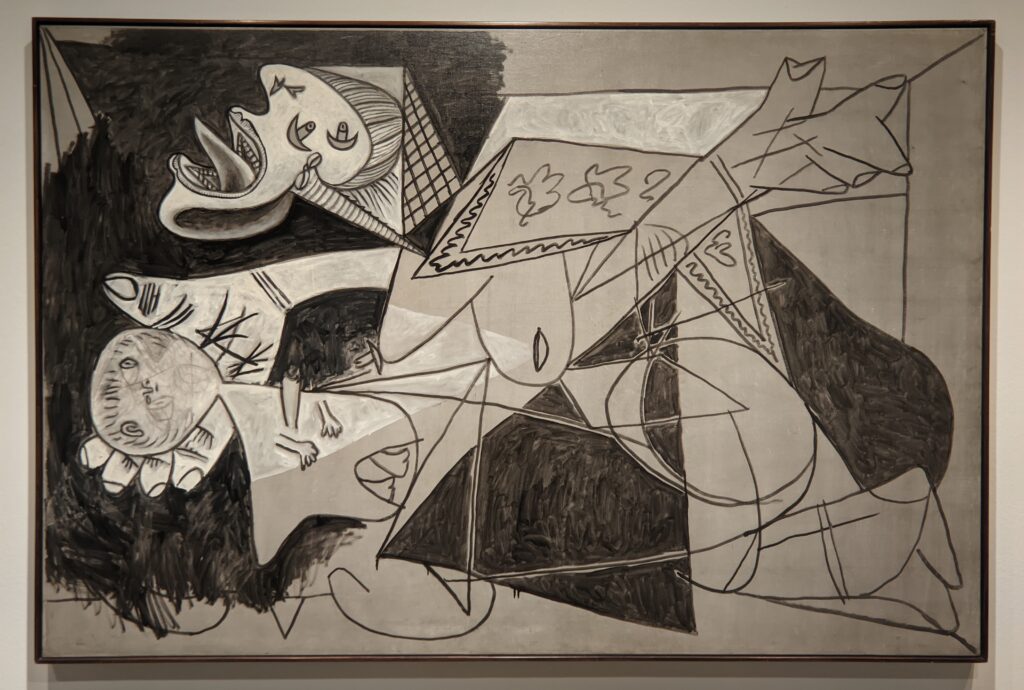


The exhibition entitled “González-Picasso and the Dematerialization of Sculpture” was on view from September 23, 2022 until January 8, 2023. This show was a triumph.

A second show at the Fundación MAPFRE featuring the photographic work of Ilse Bing also closed in Madrid on January 8, 2023. Ilse Bing (1899 — 1998) was a German avant-garde photographer who produced pioneering monochrome images (below) during the period between World War I and World War II. This exhibition of Bing’s photographs may be seen in Barcelona from February 15 — May 14, 2023 at MAPFRE’s Centro de Fotografía KBr.
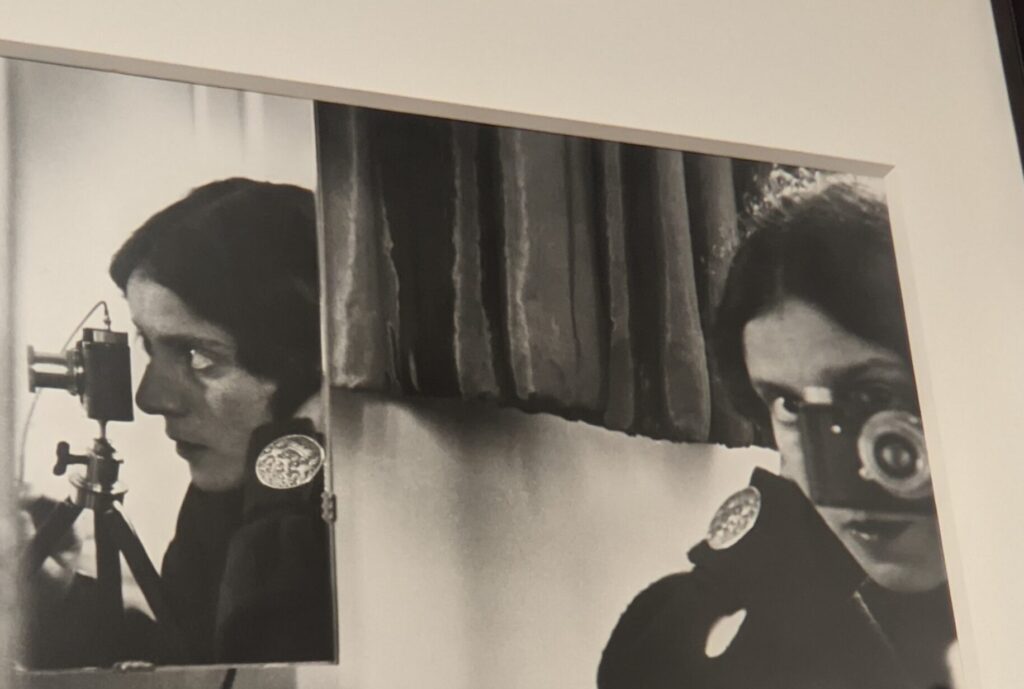
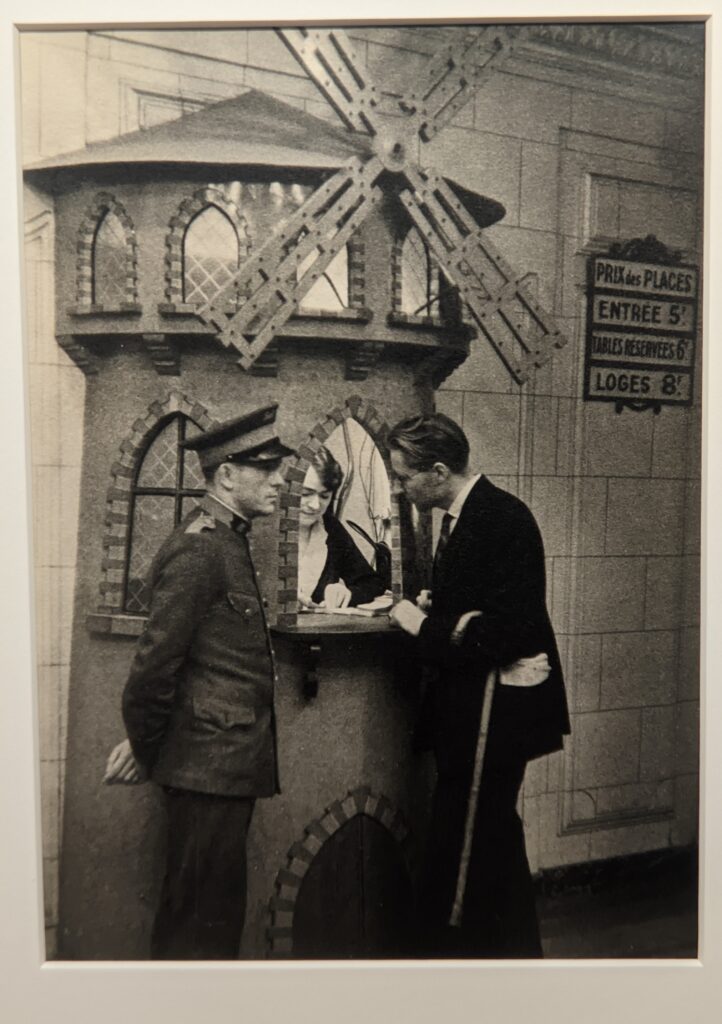

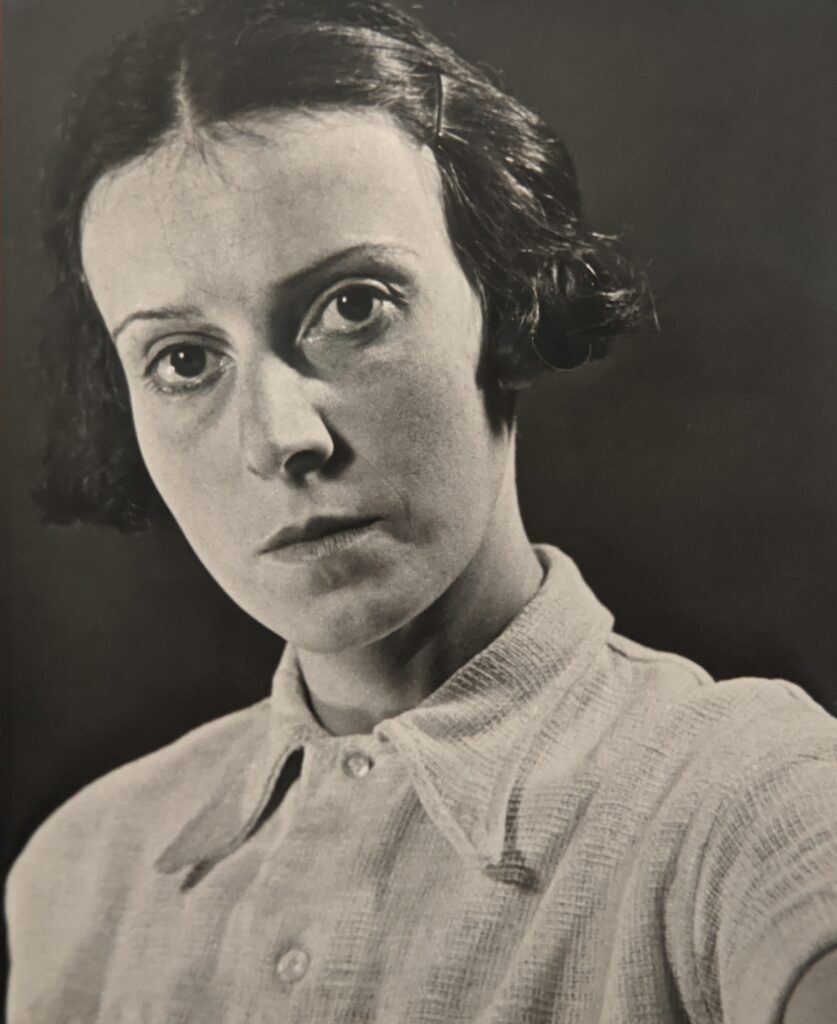
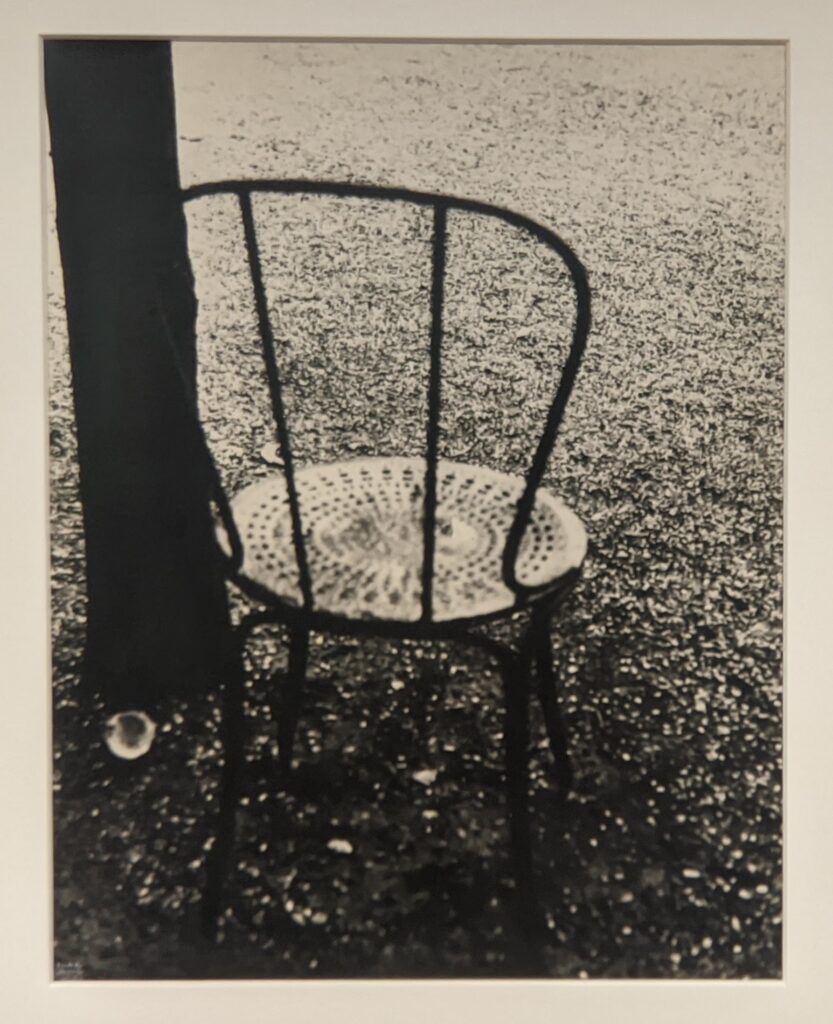


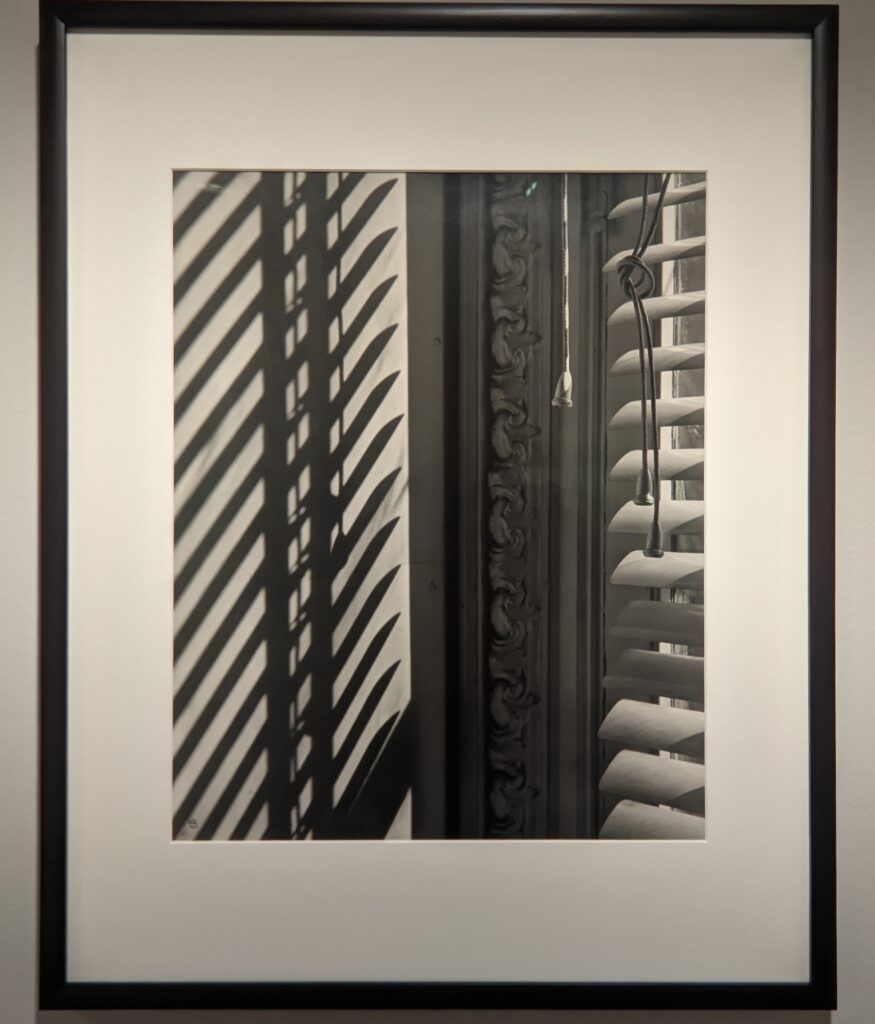

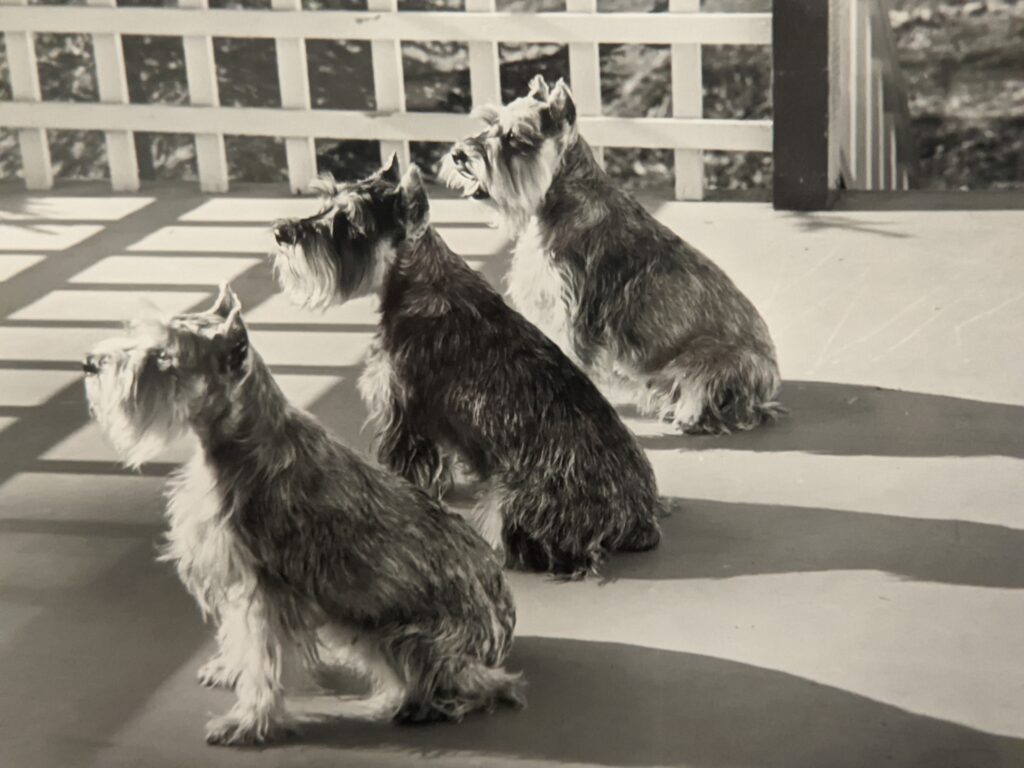


CaixaForum Madrid
Another notable center of culture in Spain is the CaixaForum Madrid, located at Paseo del Prado, 36, equidistant from the Prado and Reina Sofia Museums.
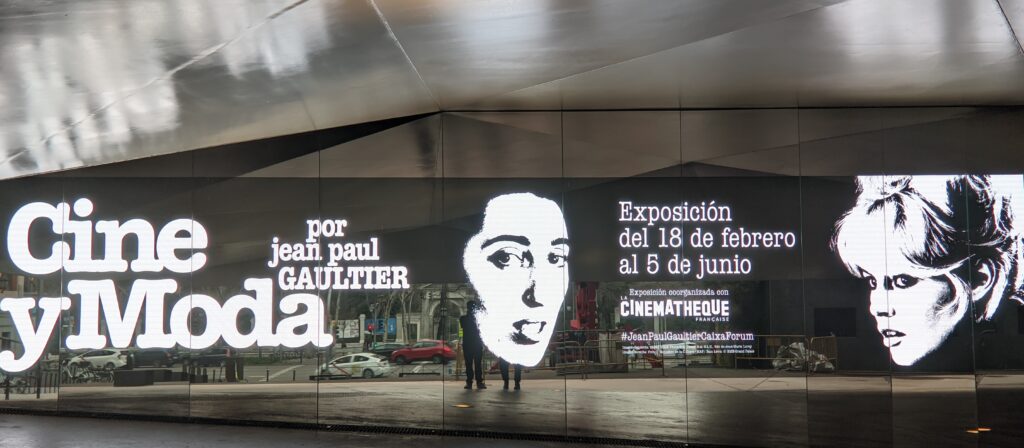
On the grounds of an old power station, the design firm of Herzog & de Meuron constructed this interesting sociocultural center between 2001 and 2007.
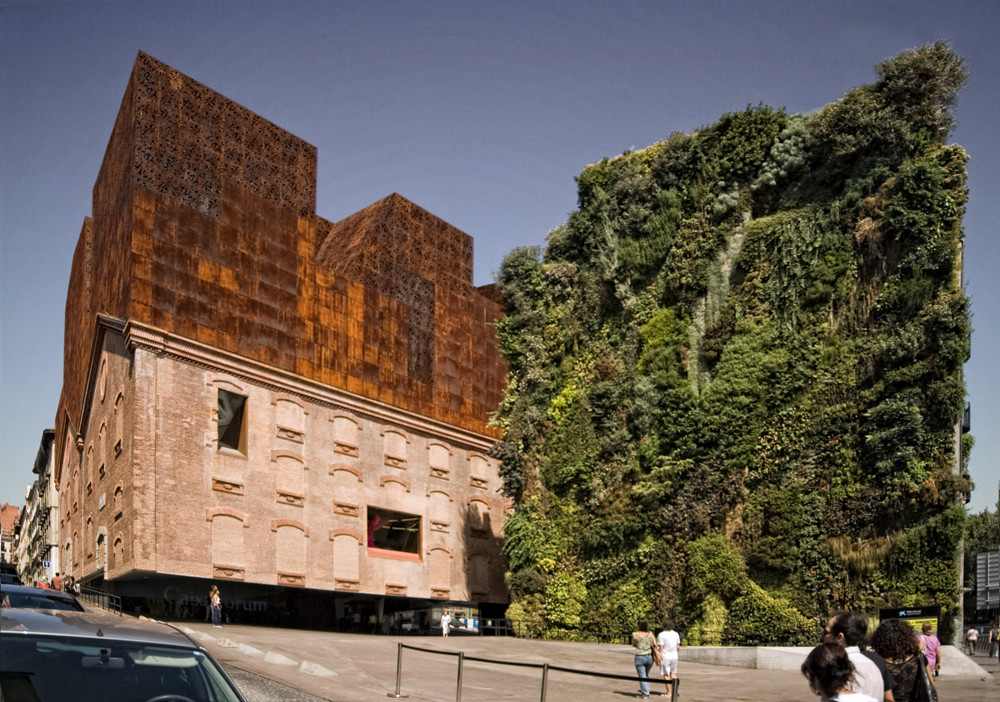
Óscar Carnicero (licence).
Exhibitions to Enjoy at CaixaForum in 2023
Current exhibitions at CaixaForum Madrid include:
— GODS, MAGICIANS and SAGES (from the studios & private collections of 10 artists) April 25 — August 20, 2023
— MAMMOTH. ICE AGE GIANT. April 28 — August 20, 2023
— TOP SECRET. CINEMA & ESPIONAGE. June 28 — October 22, 2023
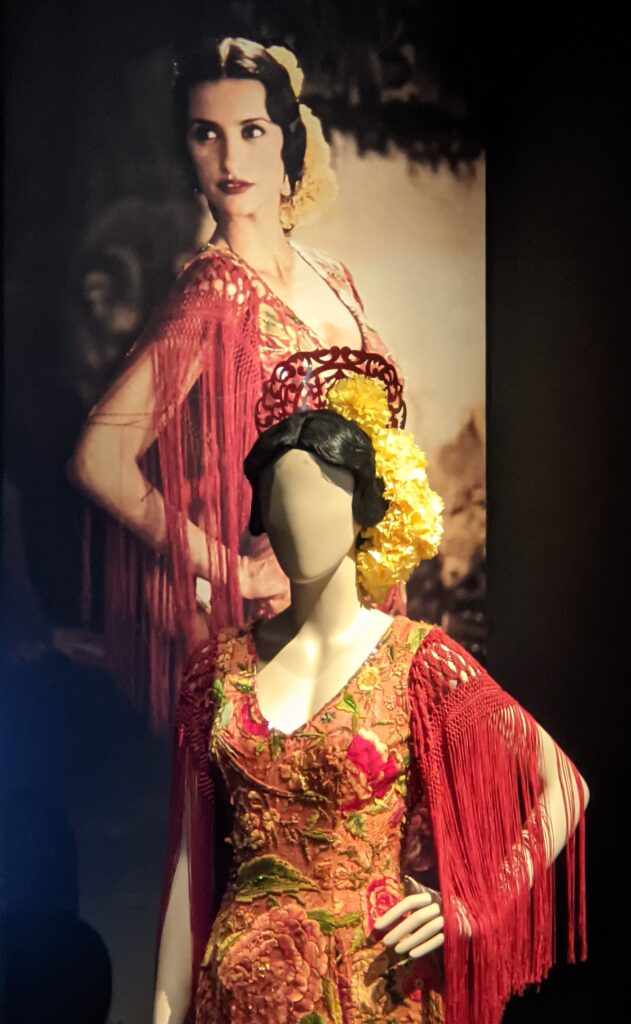
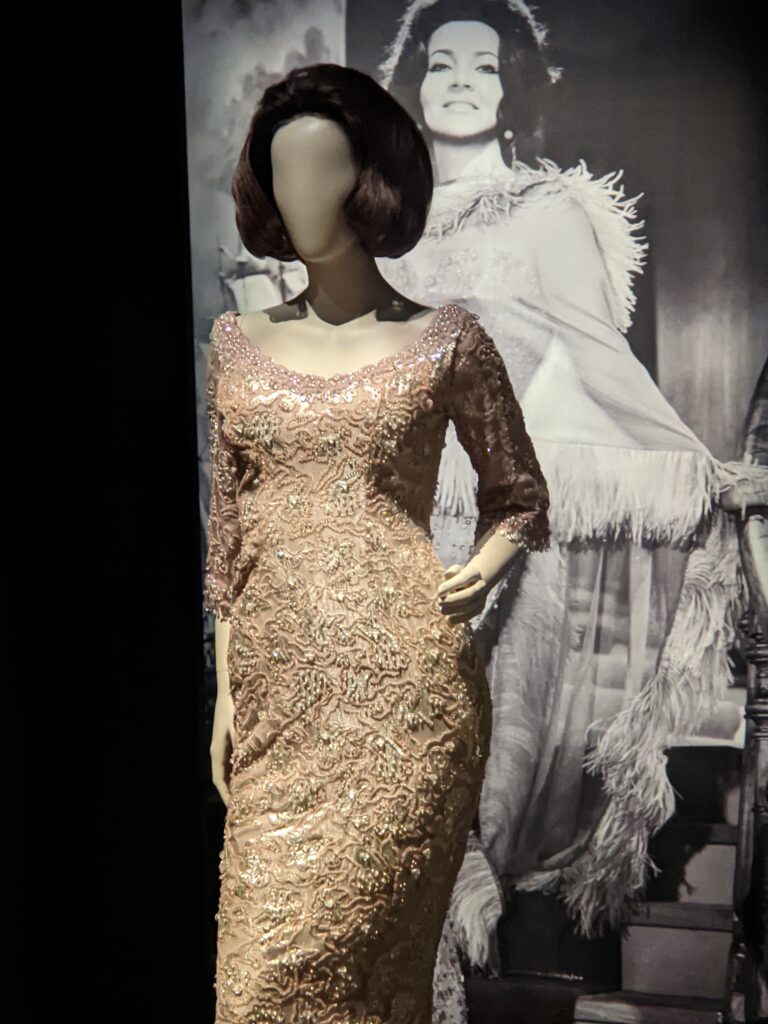
PREVIOUS EXHIBITION: Cinema & Fashion
Boasting architectural innovations unlike any museum you have ever seen, the CaixaForum (sponsored by Caixa Bank) opened in 2008 and has presented poetry, dance and music festivals in addition to multimedia art from ancient to contemporary times, including “Cinema & Fashion by Jean Paul Gaultier” which was held from February 18 through June 5, 2022.
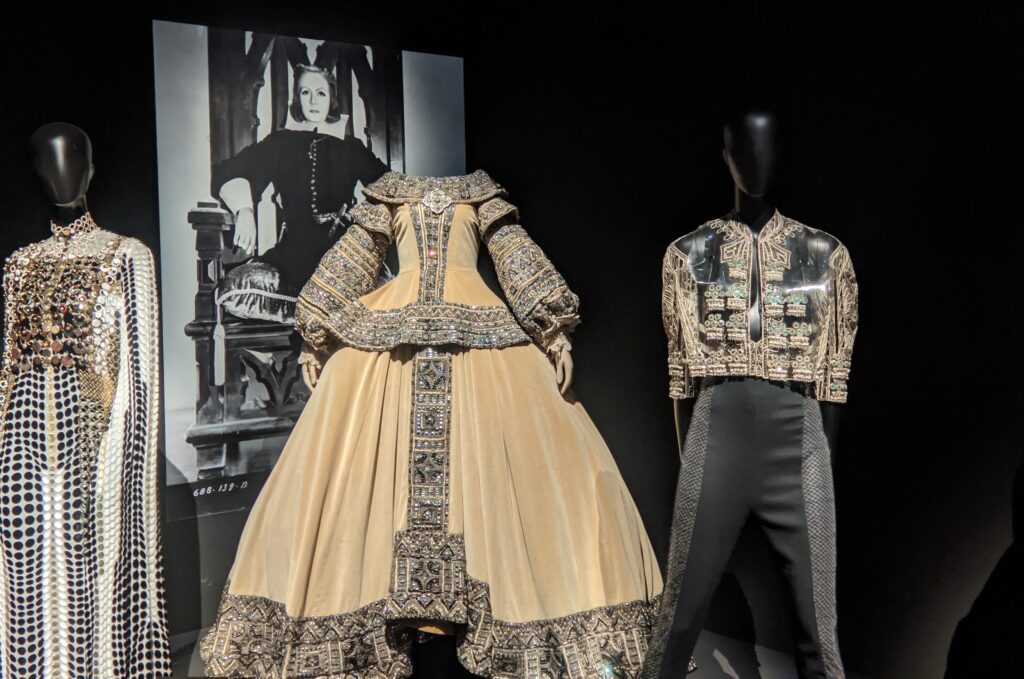
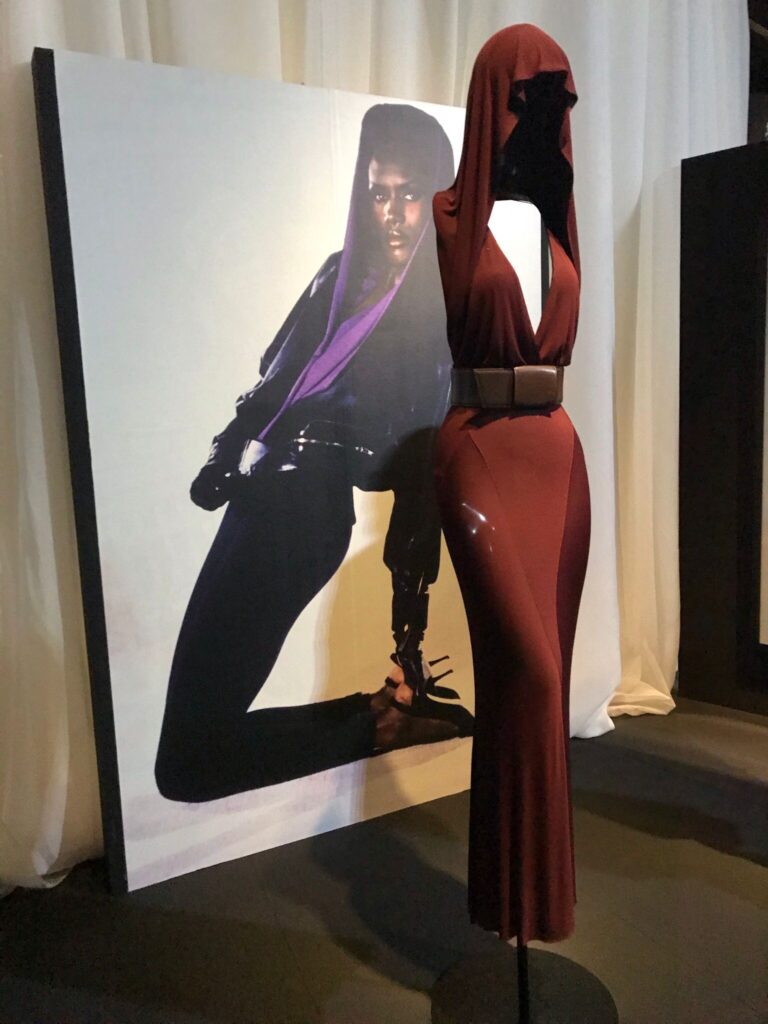
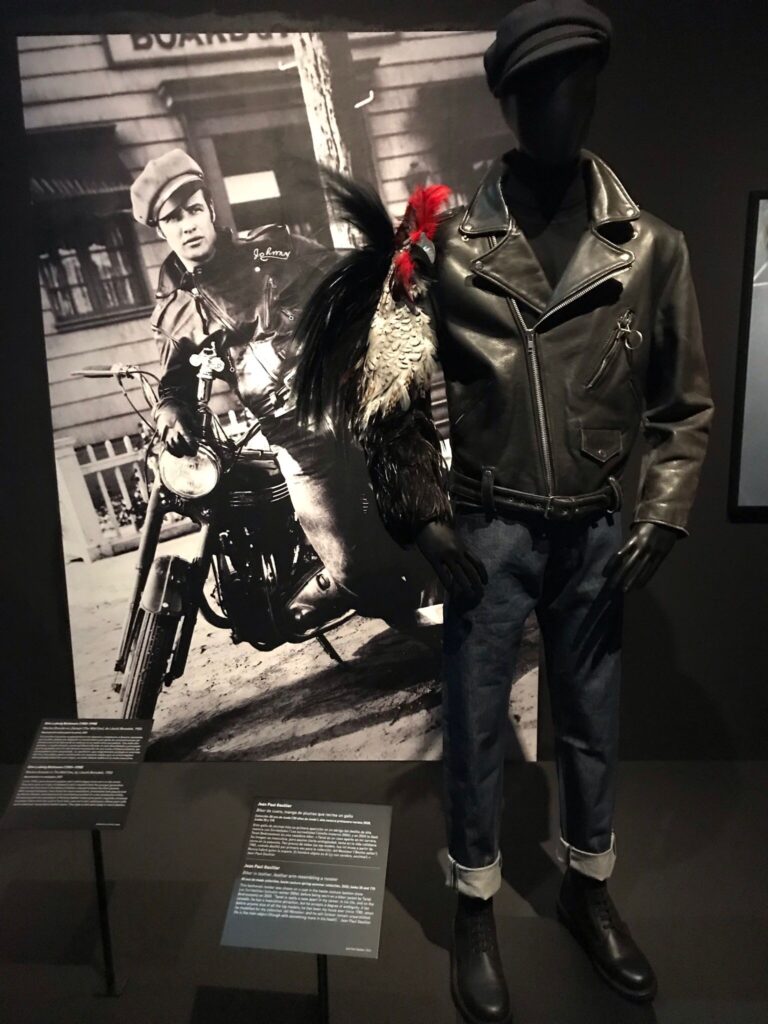
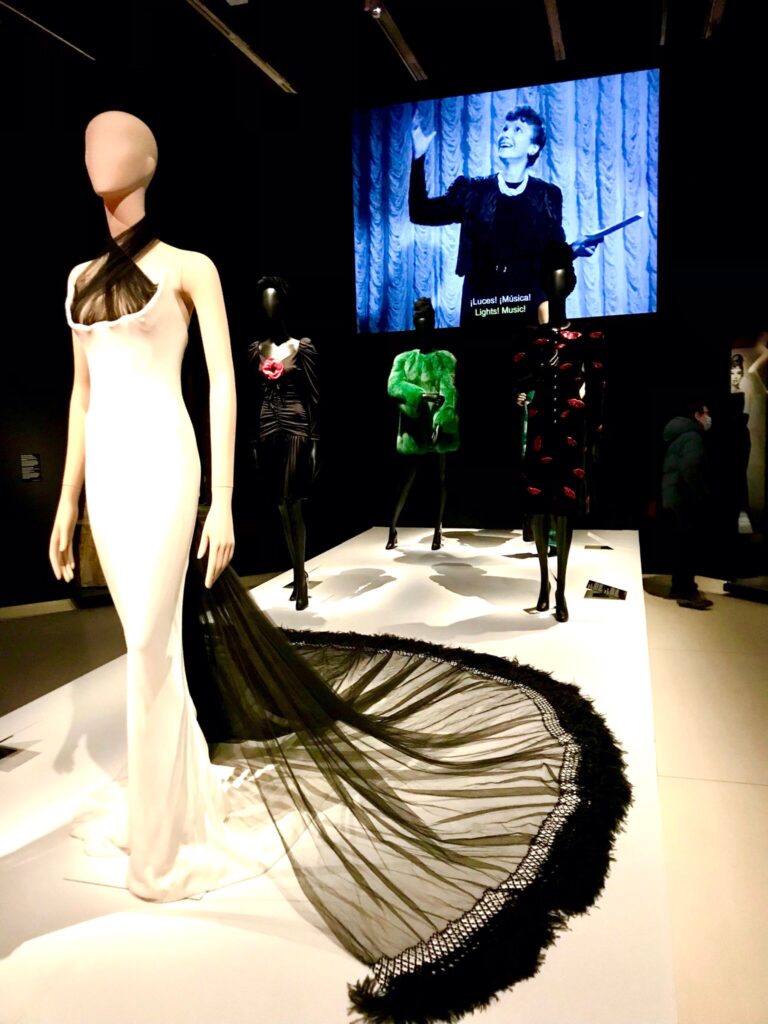
This exhibition was dazzling, irreverent and a lot of fun.
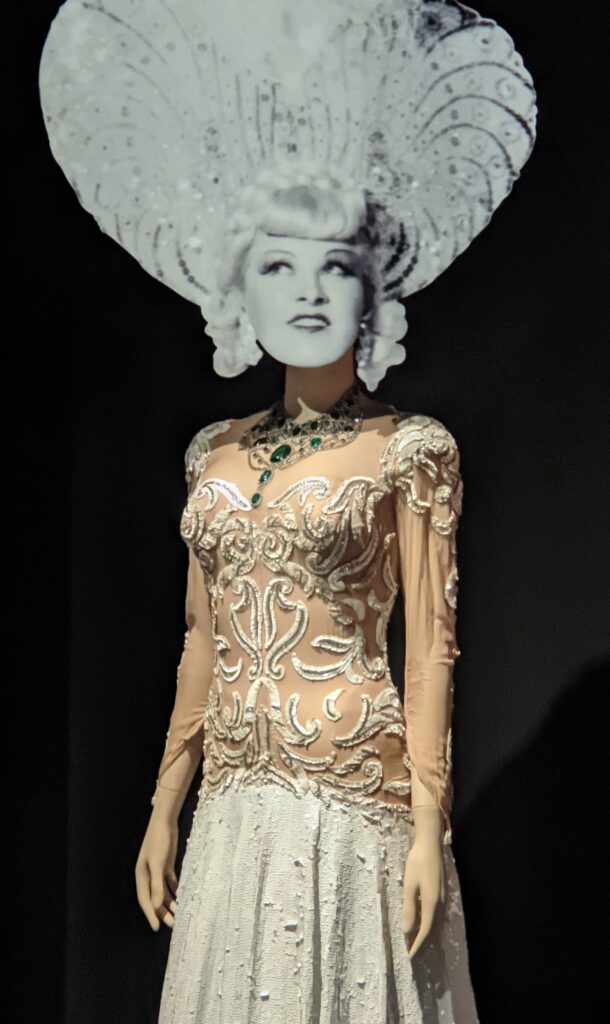

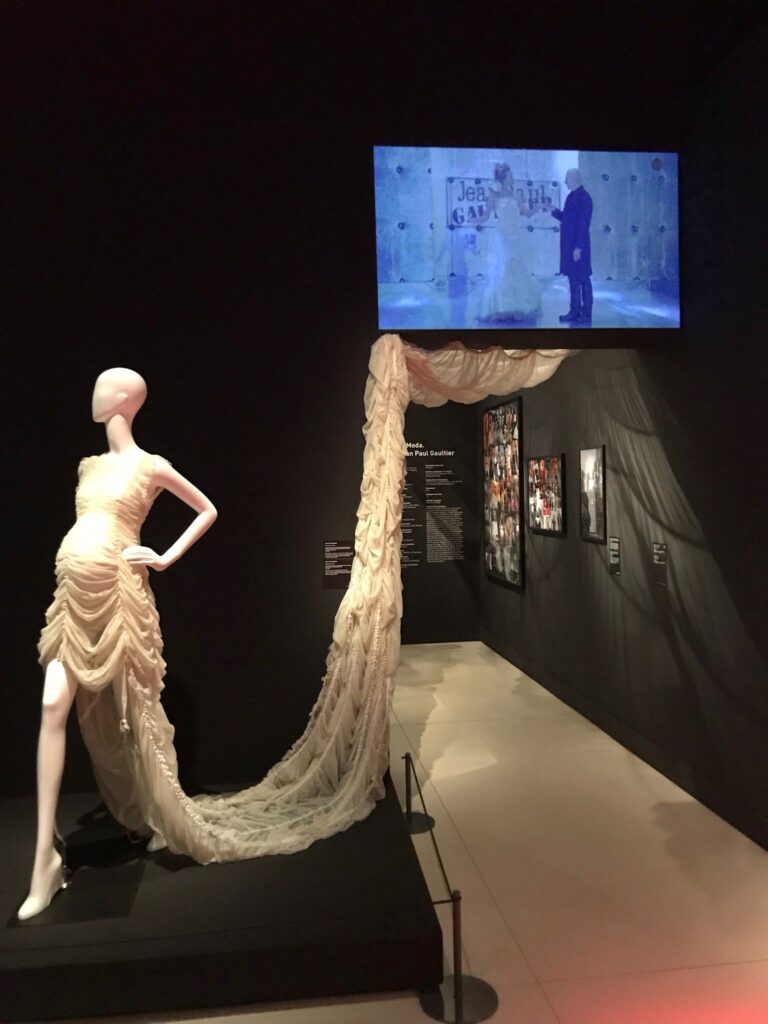
Tattoos for You to Admire at the CaixaForum Madrid
Another noteworthy exhibition on tattooing was on view at the CaixaForum in Madrid and Barcelona in 2022.
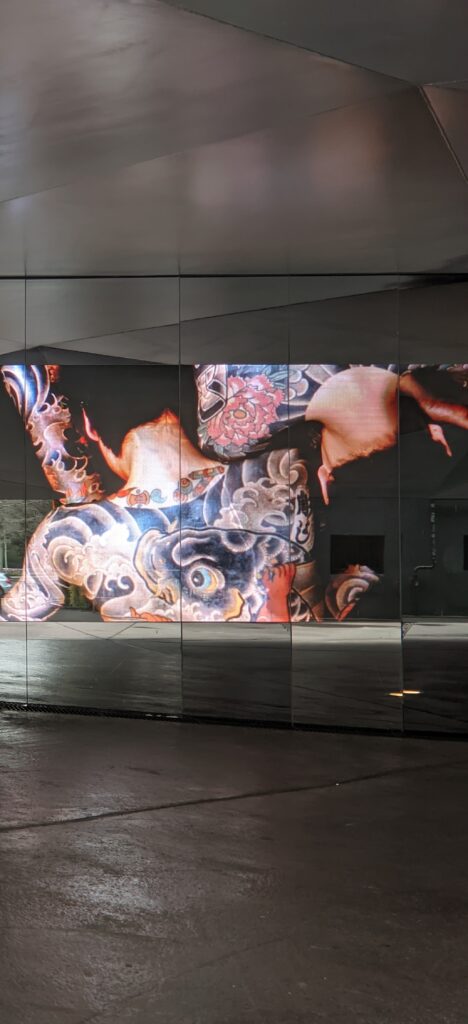
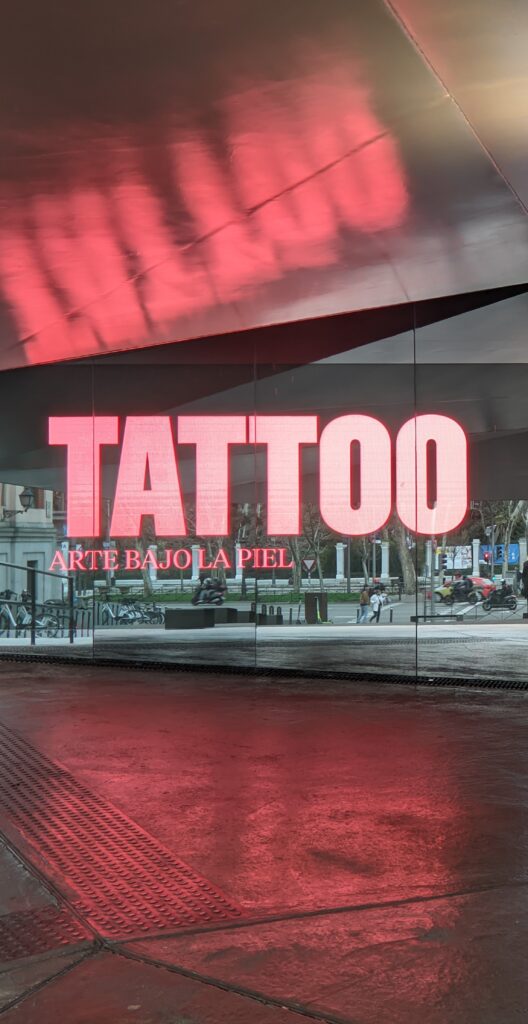
The ancient art of crafting tattoos modifies the human body by inserting ink, pigments and/or dyes into the dermis layer of the skin in order to form designs.
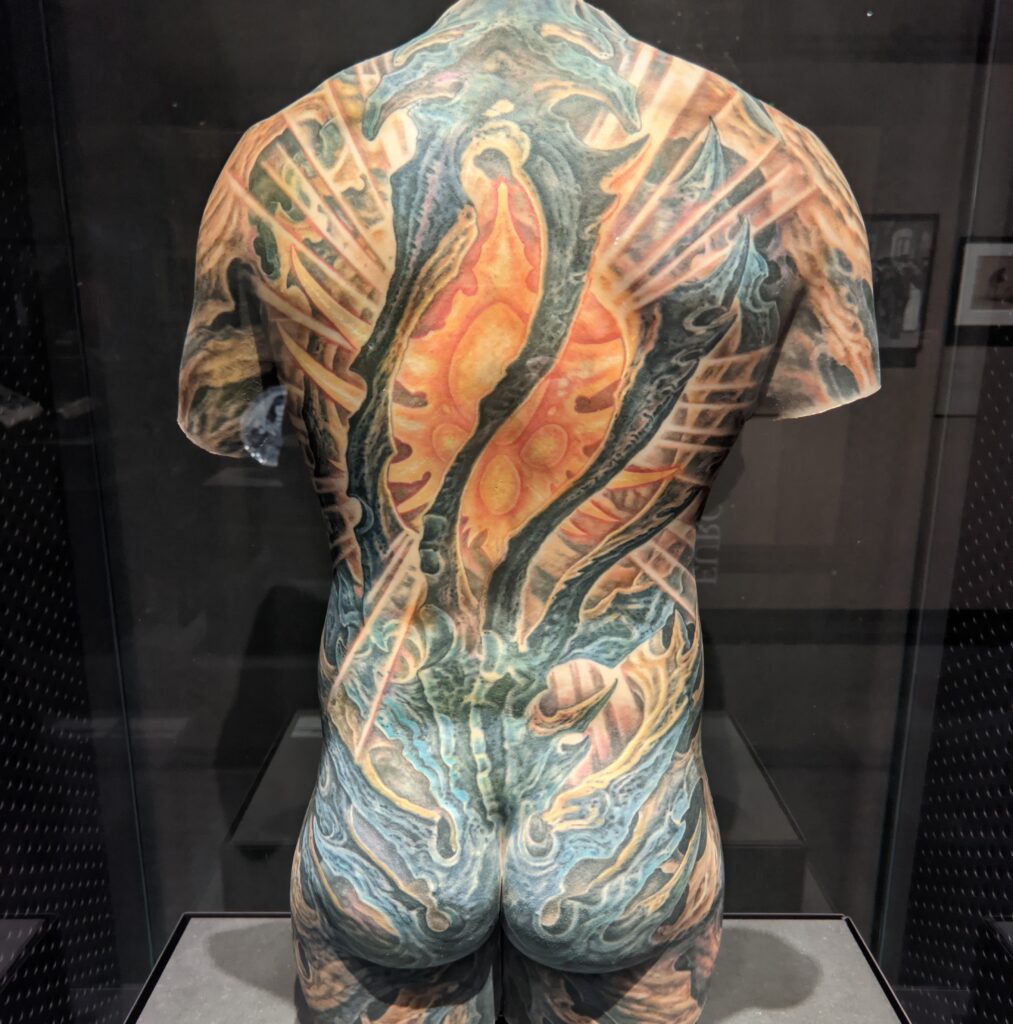

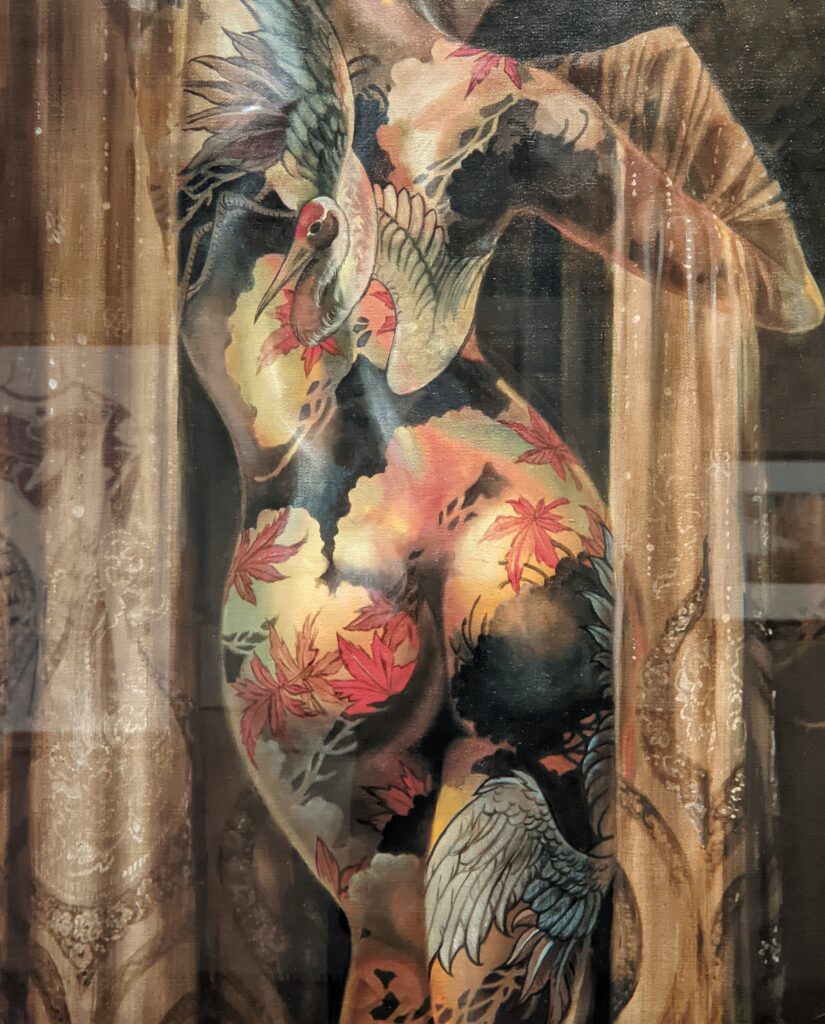
CaixaForum
CaixaForum is open daily from 10:00 am to 8:00 pm (20:00) and one may visit all exhibitions for the price of 6 euros (with free admission for customers of La Caixa).
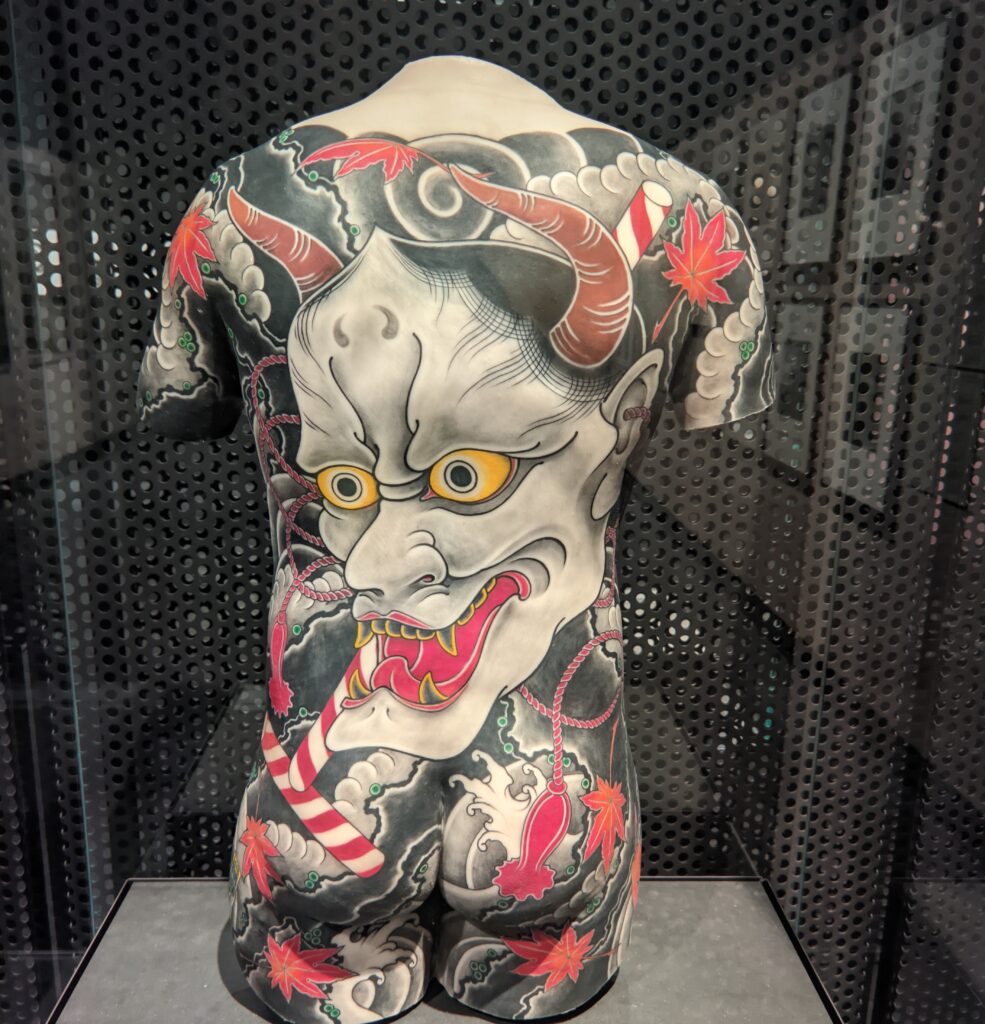
Previous Exhibitions at MAPFRE & the Sorolla Museum in Madrid
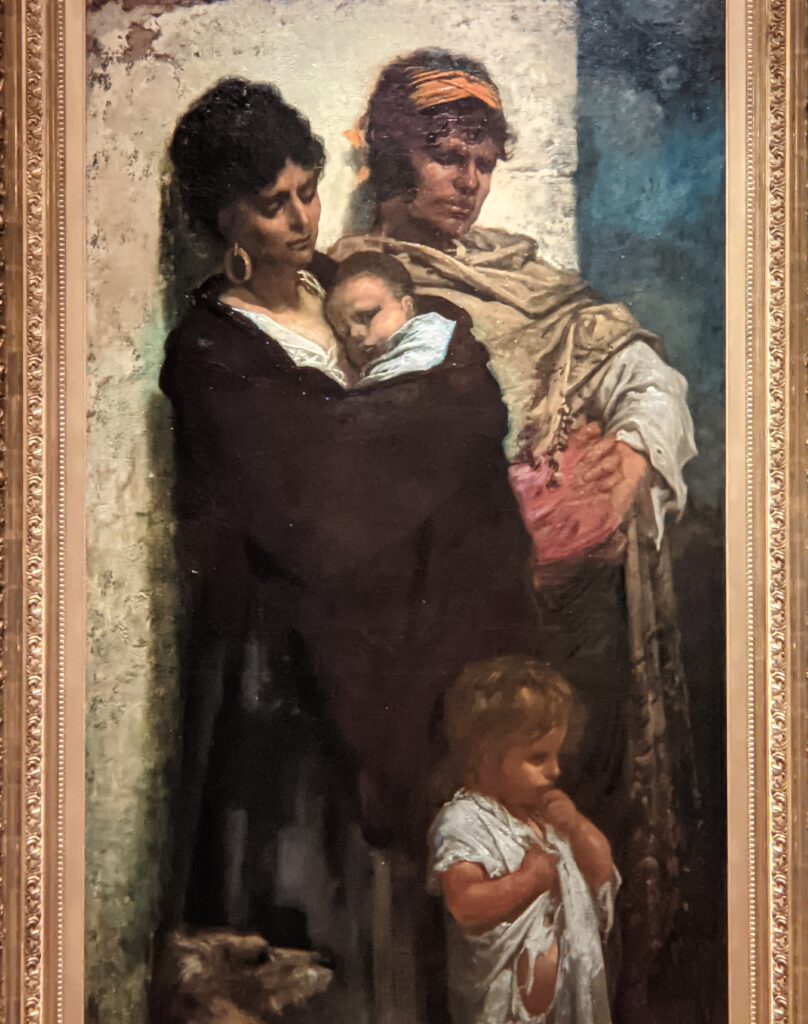
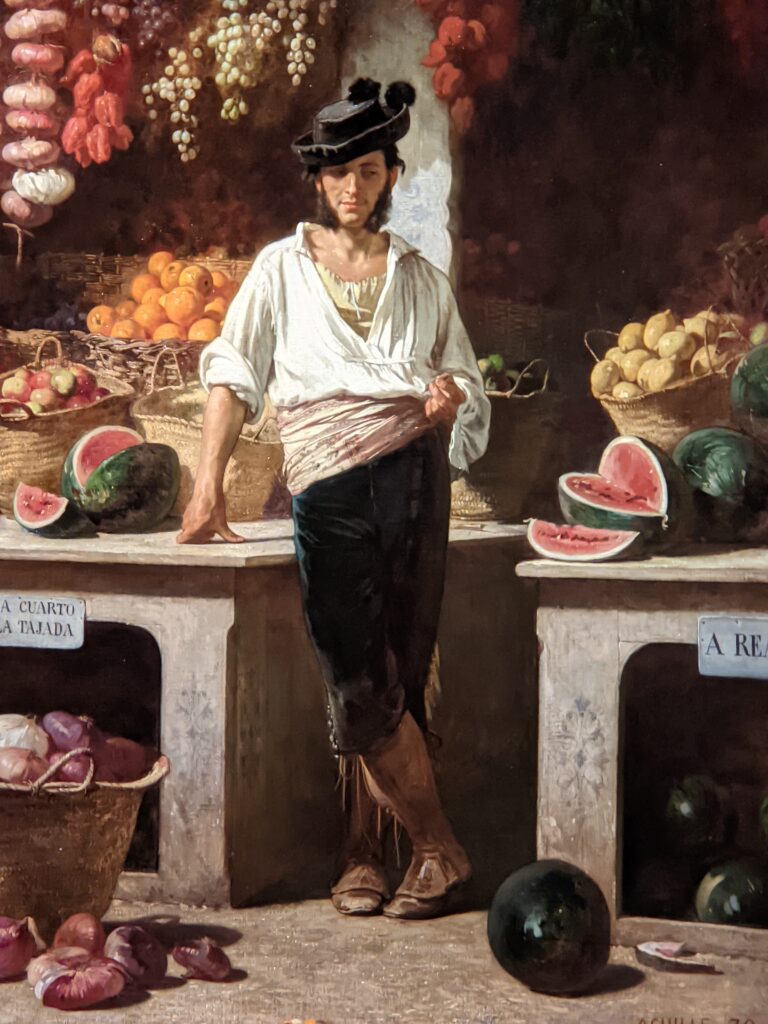
“The French Taste,” an exhibition exploring the evolution and influence of French culture in Spain from the 17th through 19th centuries, was presented in Madrid through May 8, 2022 at the Fundación MAPFRE — here are some of the highlights from “The French Taste”.
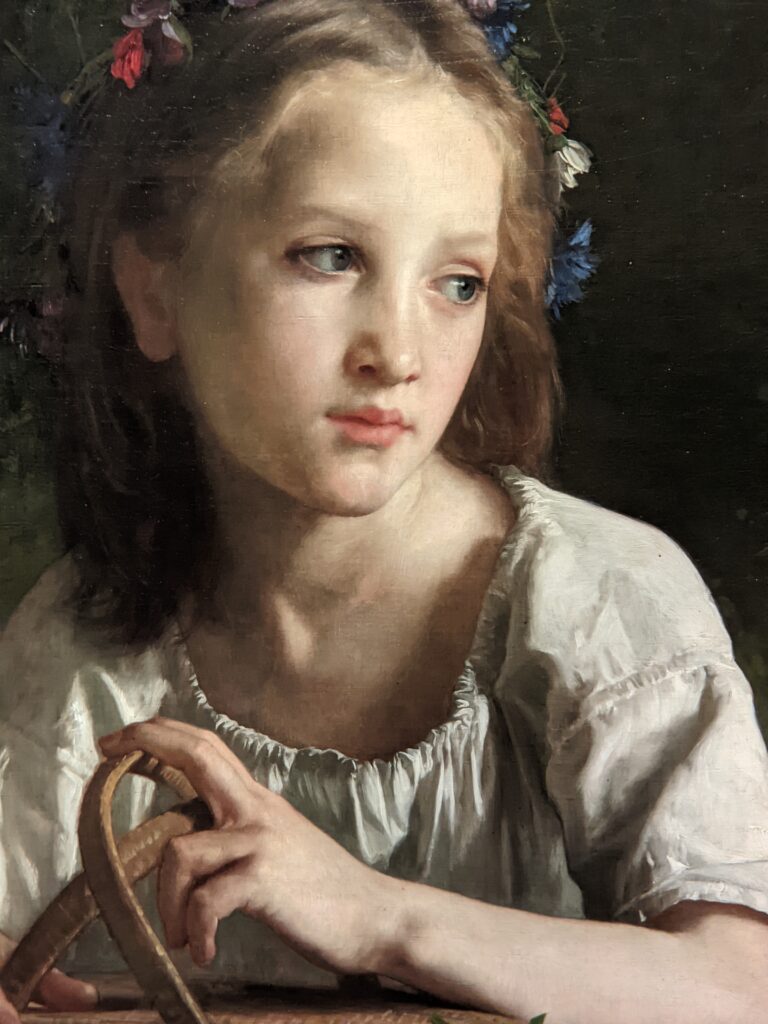
“Little Ophelia” (1875) by William Bouguereau (above) and “The Daughters of the Duke of Montpensier” (1861) by Alfred Dehodencq (below) were among the 45 paintings, 8 sculptures, 16 drawings and 31 pieces of decorative arts on display in the French exhibition.
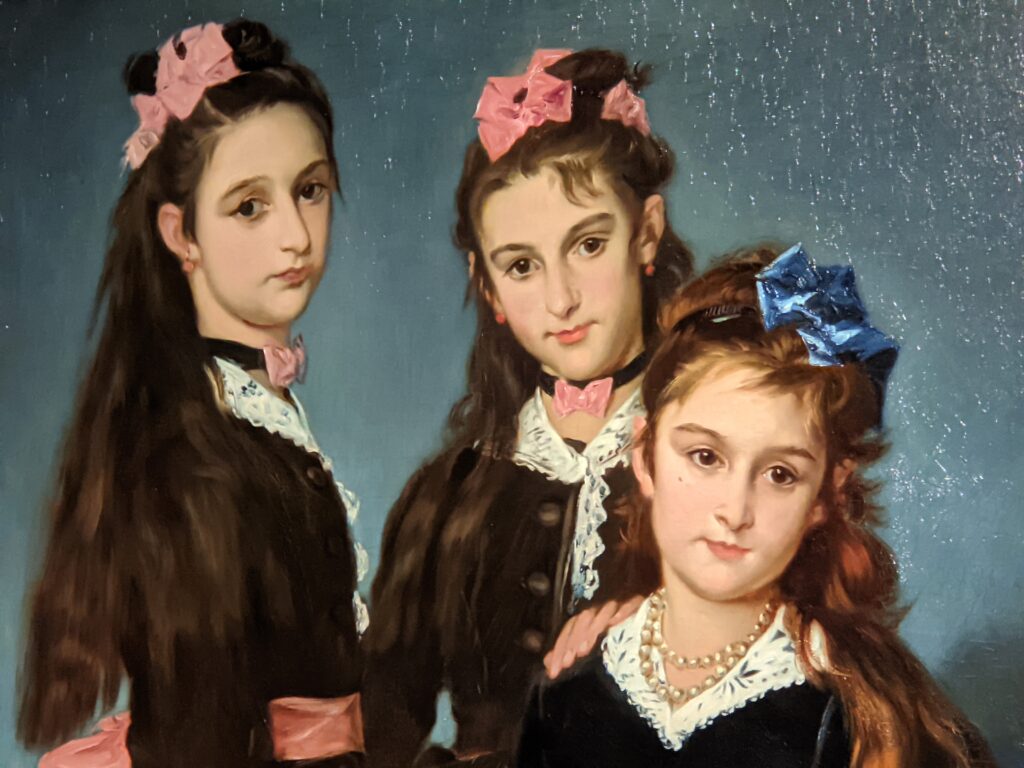
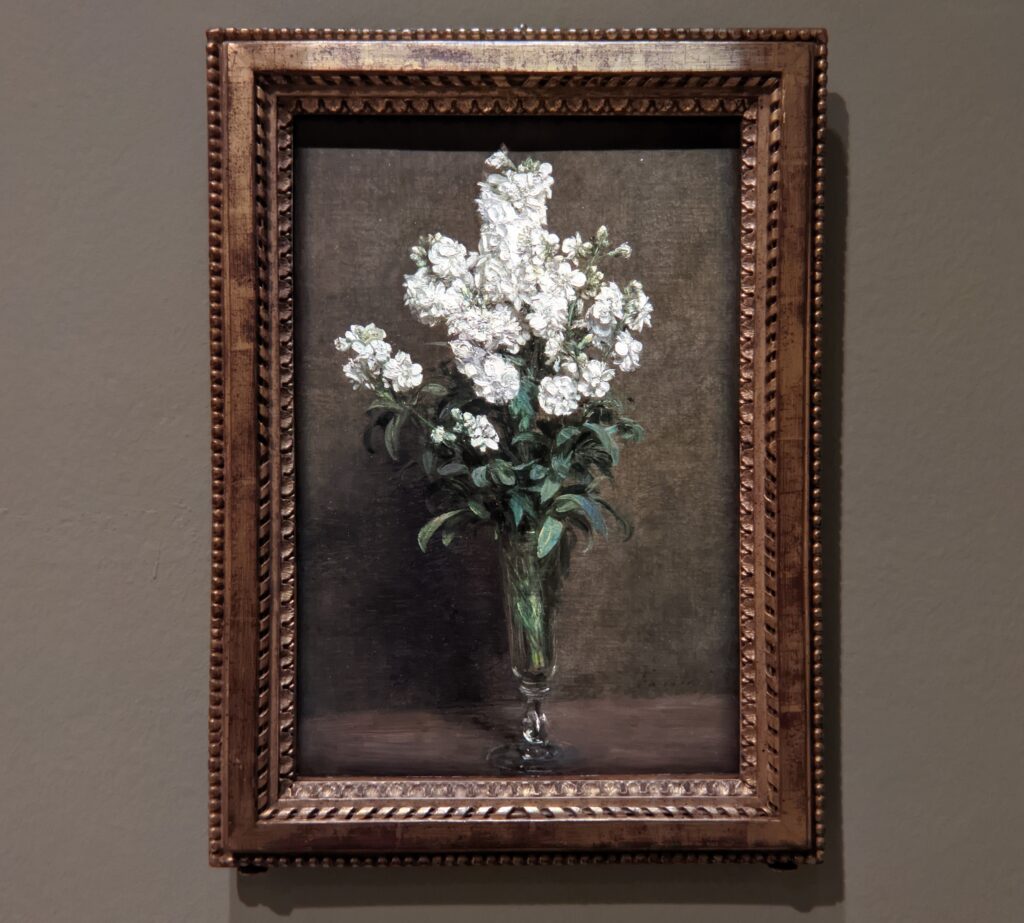

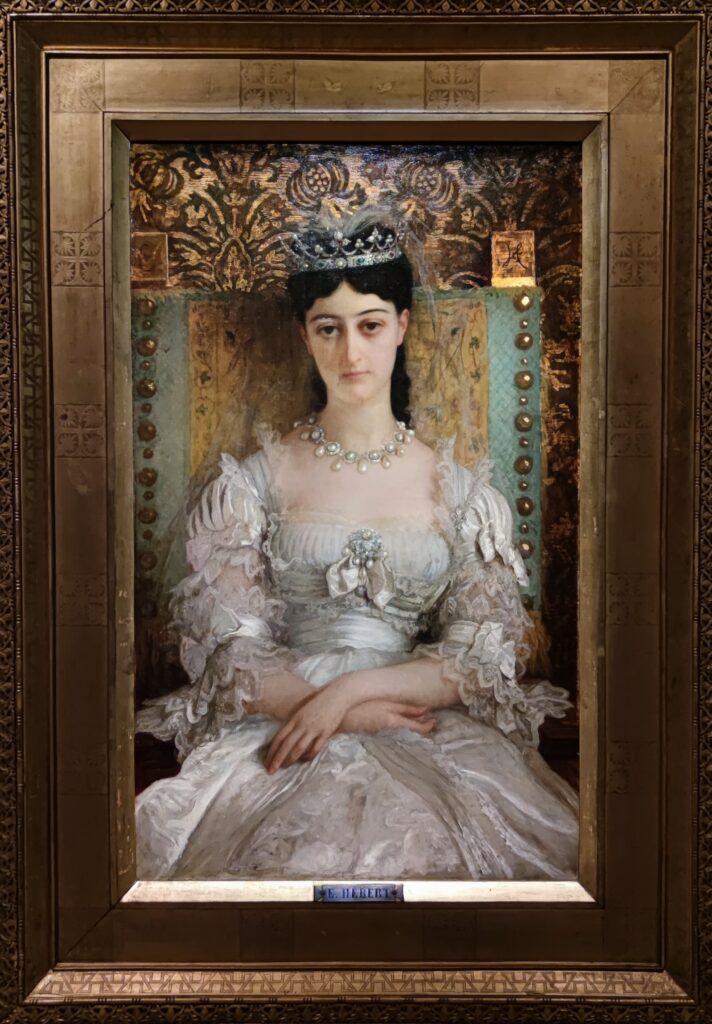

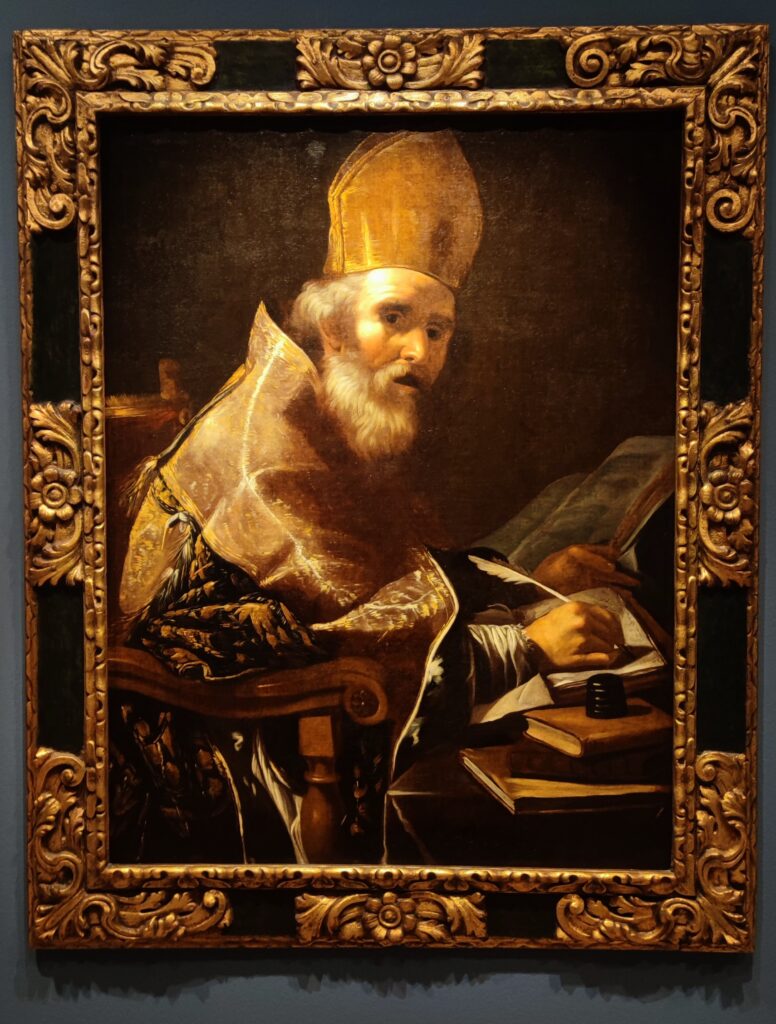

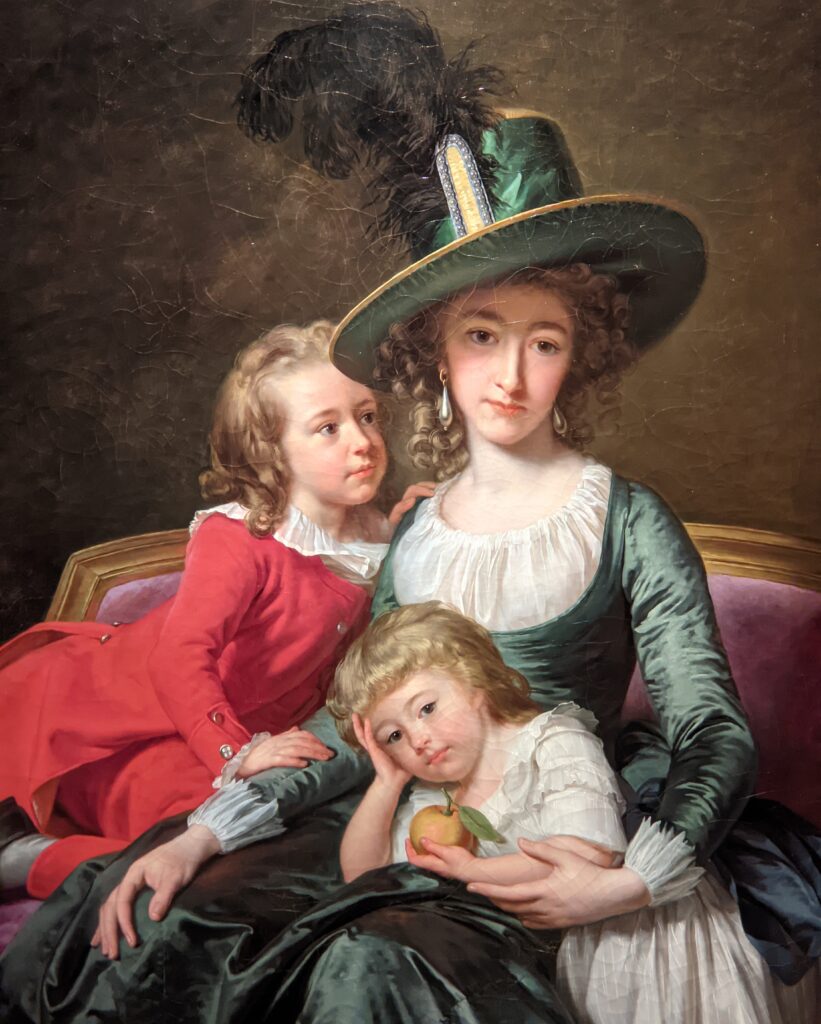
“The French Taste” closed in Madrid on May 8, 2022
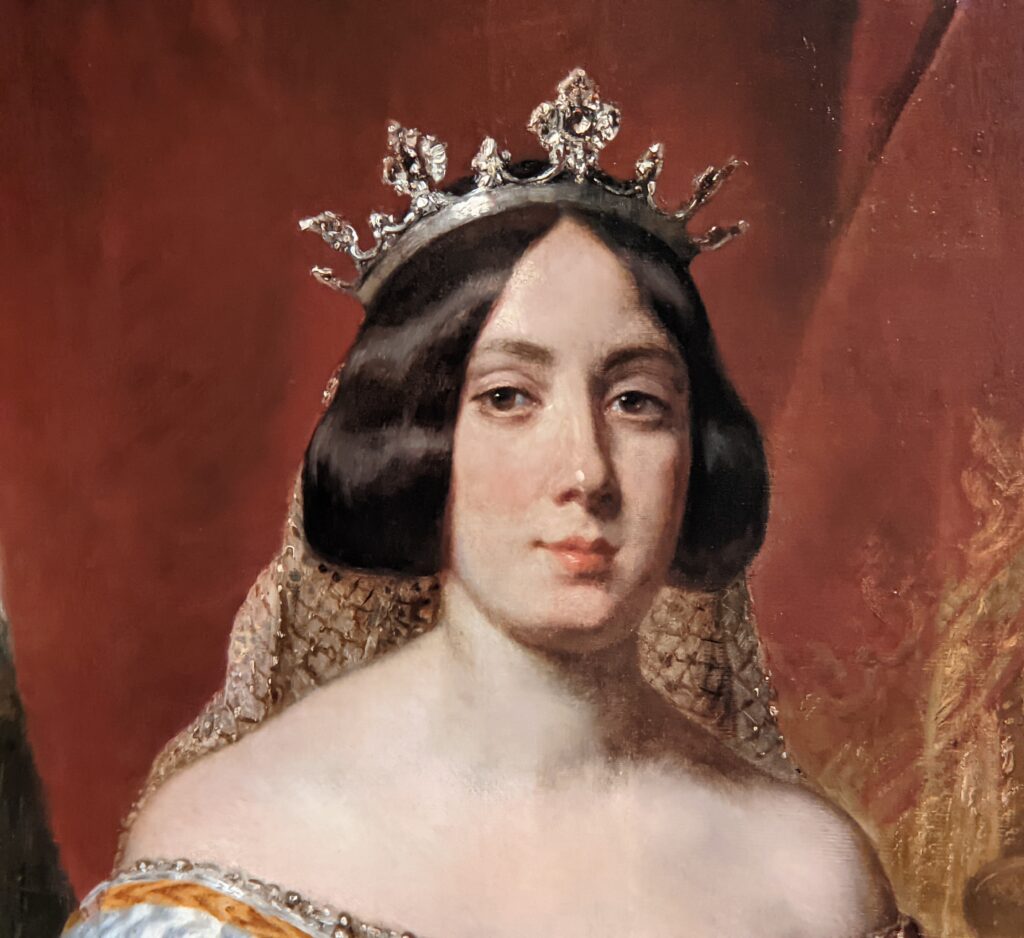
Previous Exhibitions at the Museo Sorolla

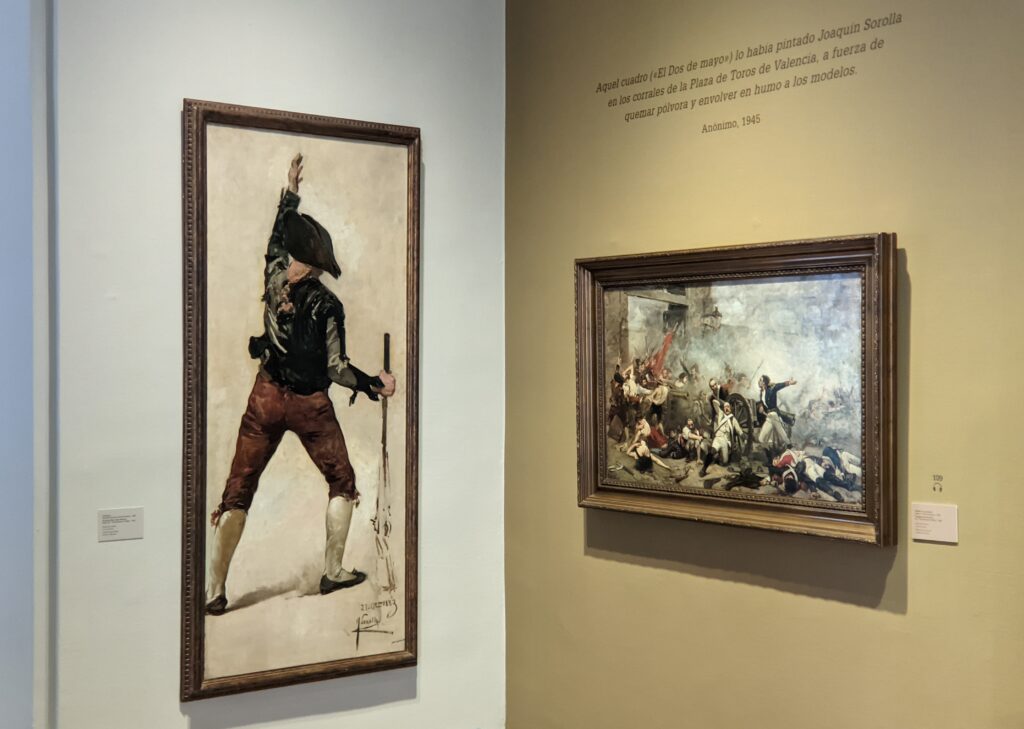

The exhibition “Sorolla ORIGINS” which casts light on the artist’s beginnings in his native Valencia, as well as his development on the path to the pinnacle of success as the most important Spanish painter at the turn of the 20th century, will be on view through March 19, 2023.

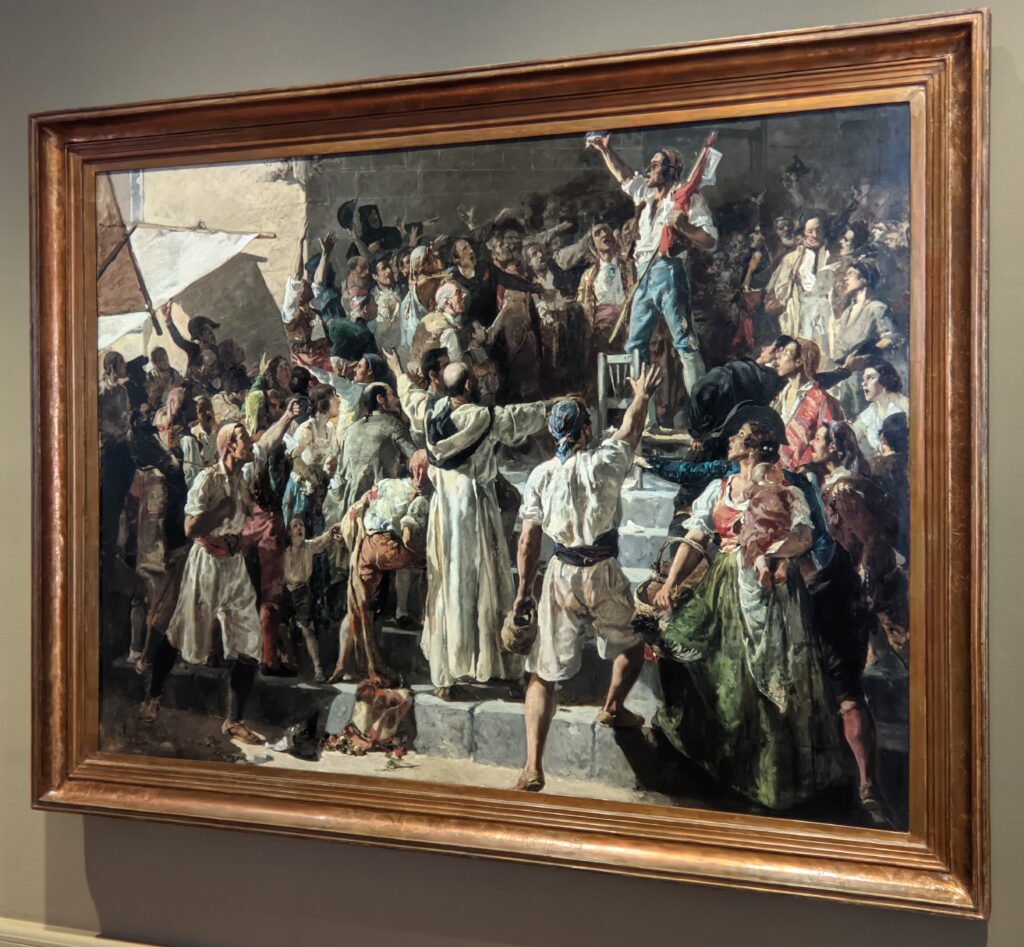
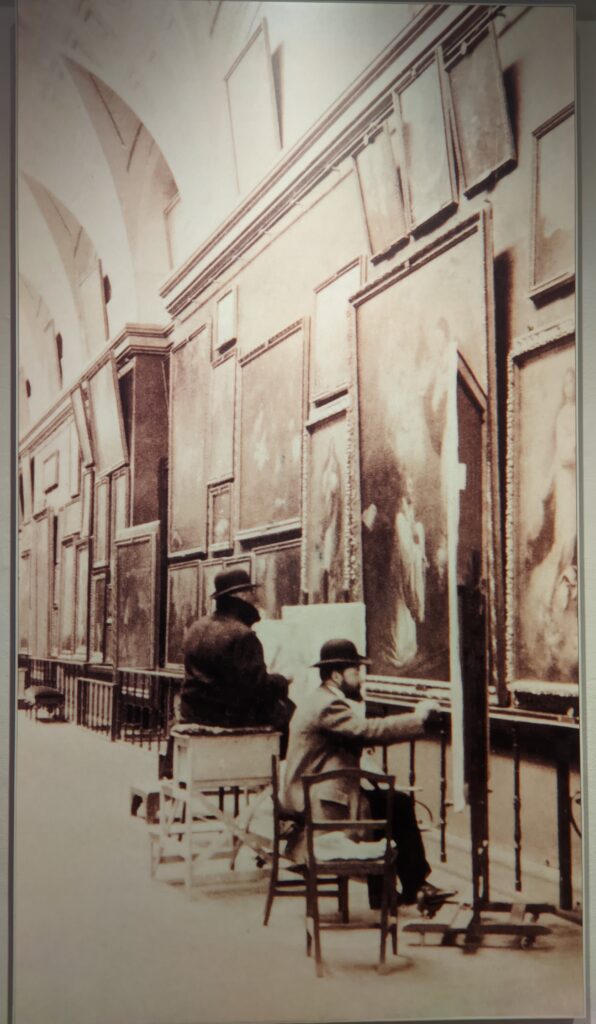

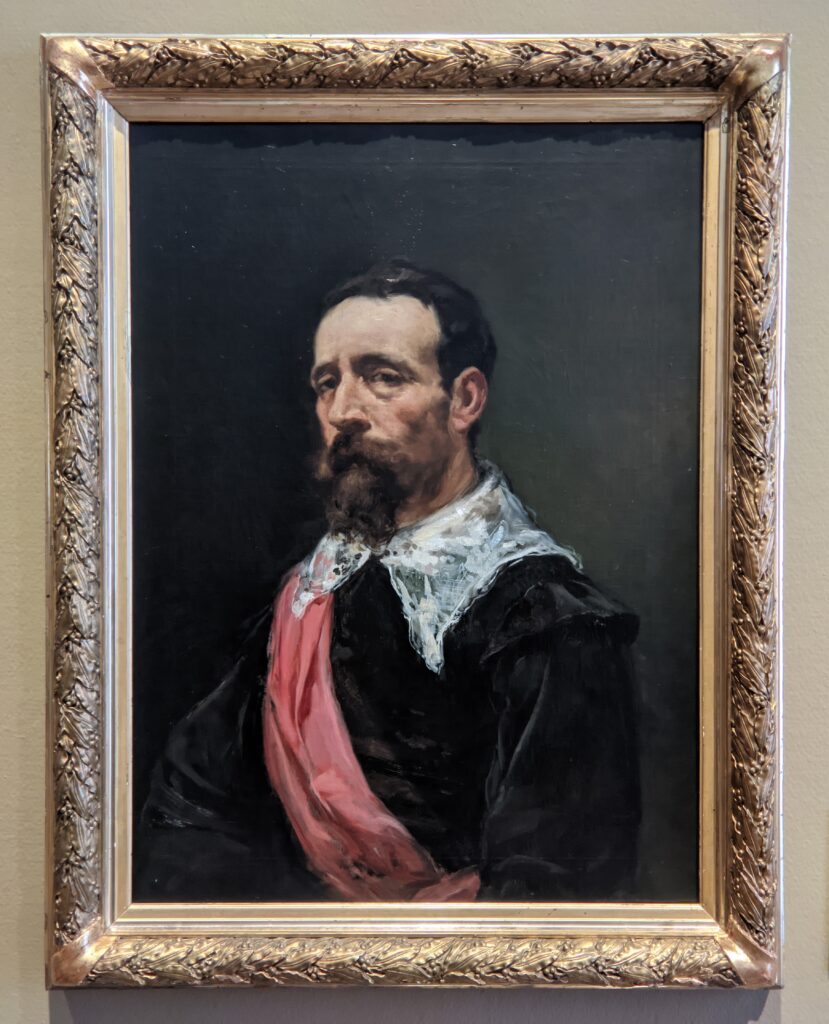
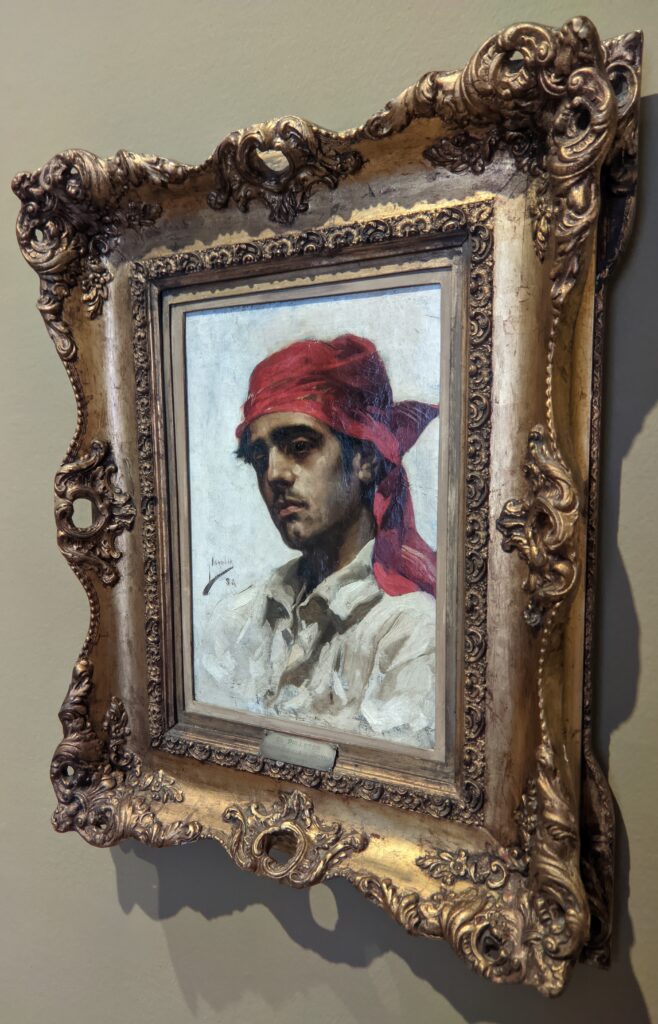
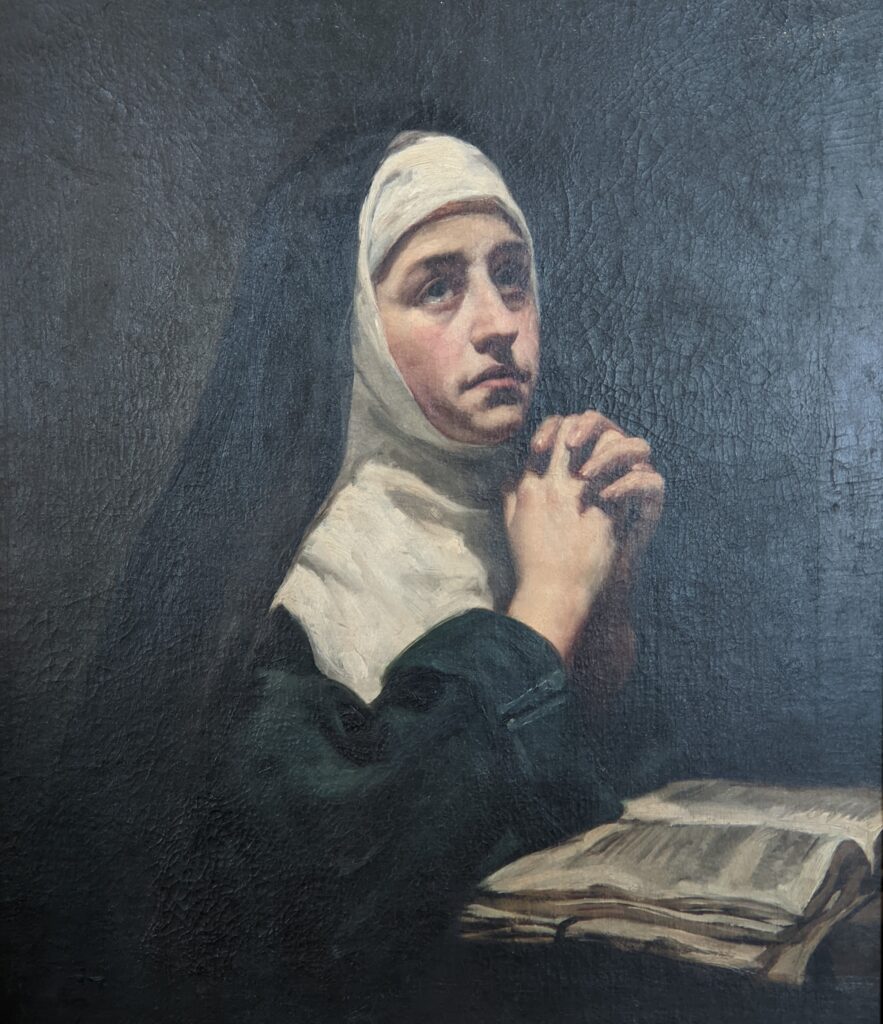



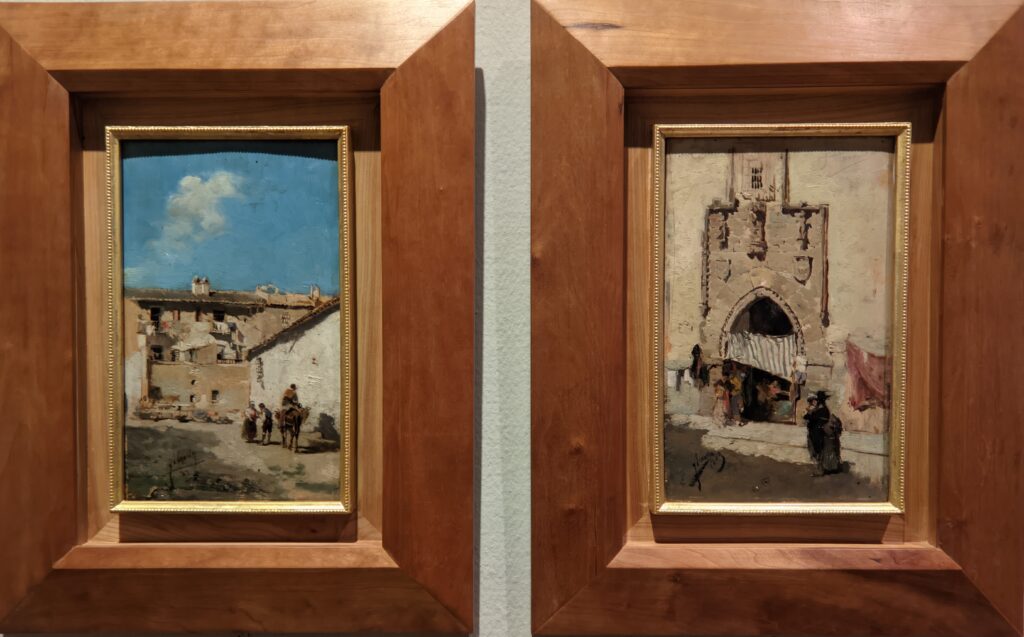
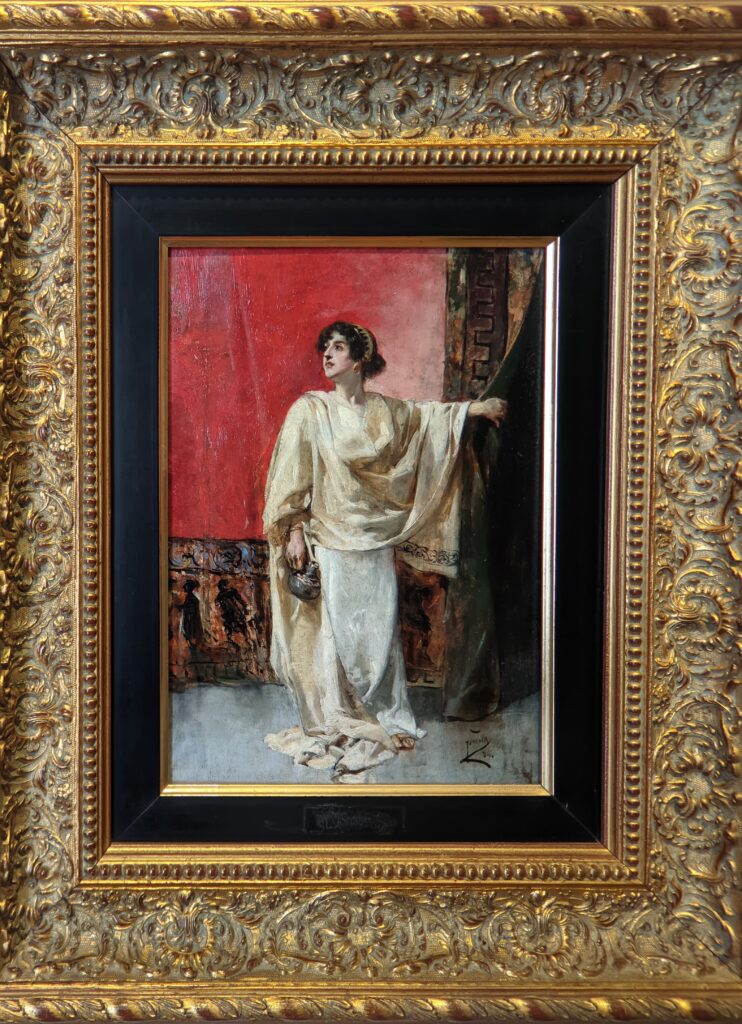

Sorolla in Black
The exhibition “Sorolla en Negro” was on view at the Museo Sorolla through November 27, 2022. Black was not considered as a color in Sorolla’s day, even though it does possess a luminosity of its own. In the late 19th century black functioned as an intense plane that heightened colors. This temporary show featured the art of Sorolla (1863-1923) and described how he used black to convey seriousness in subject matter and emphasize contrasts of light.
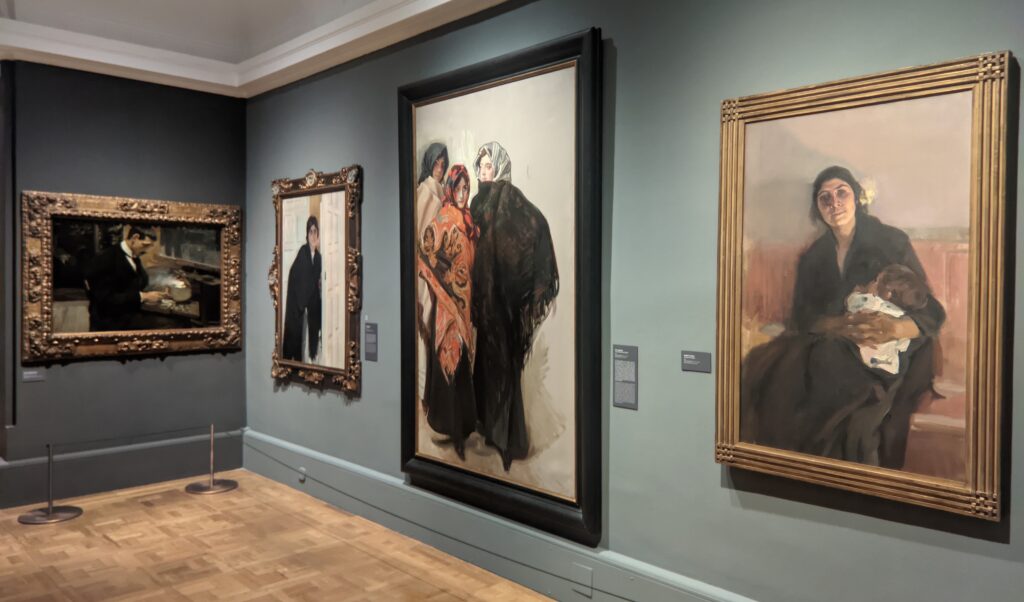
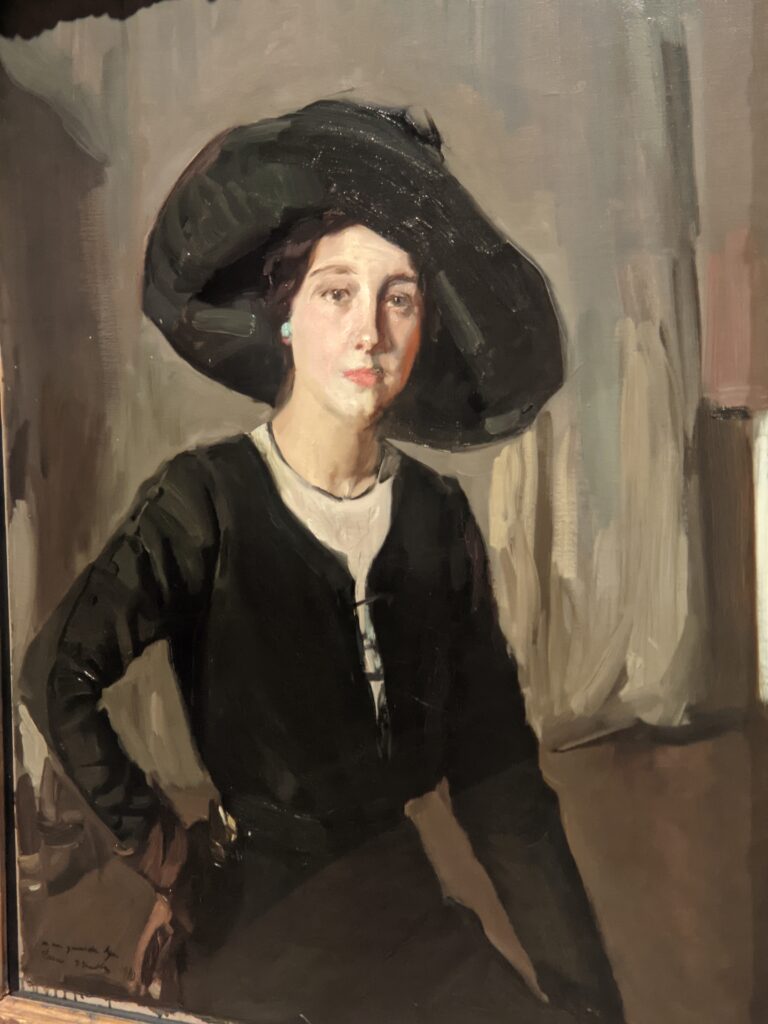
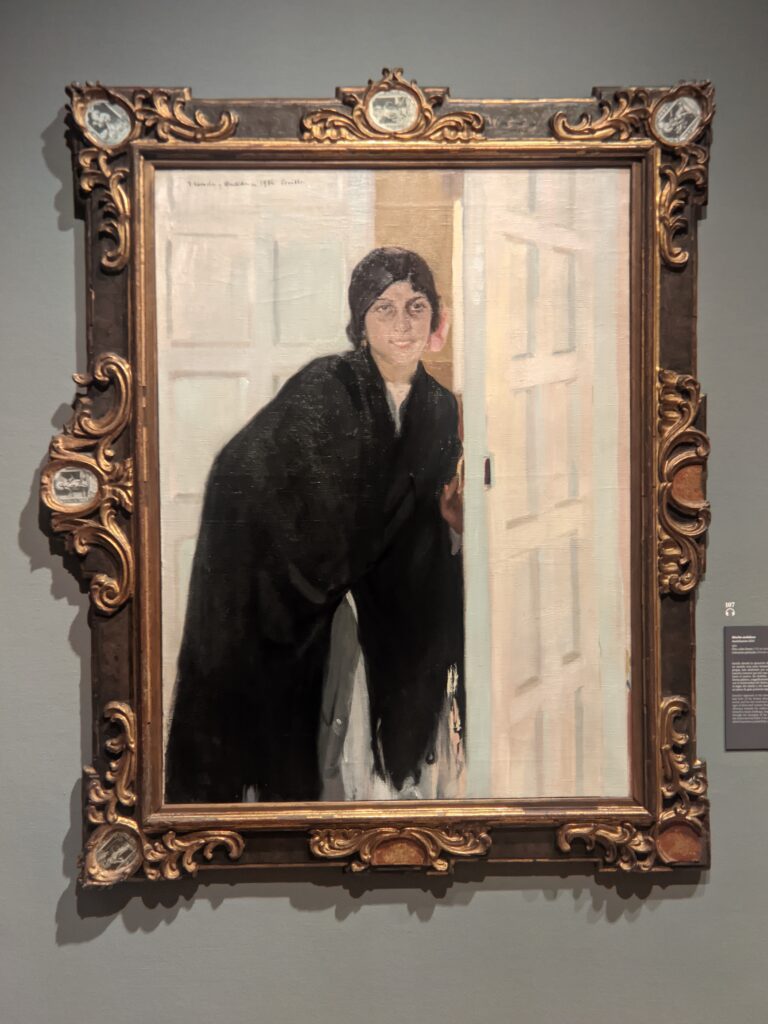
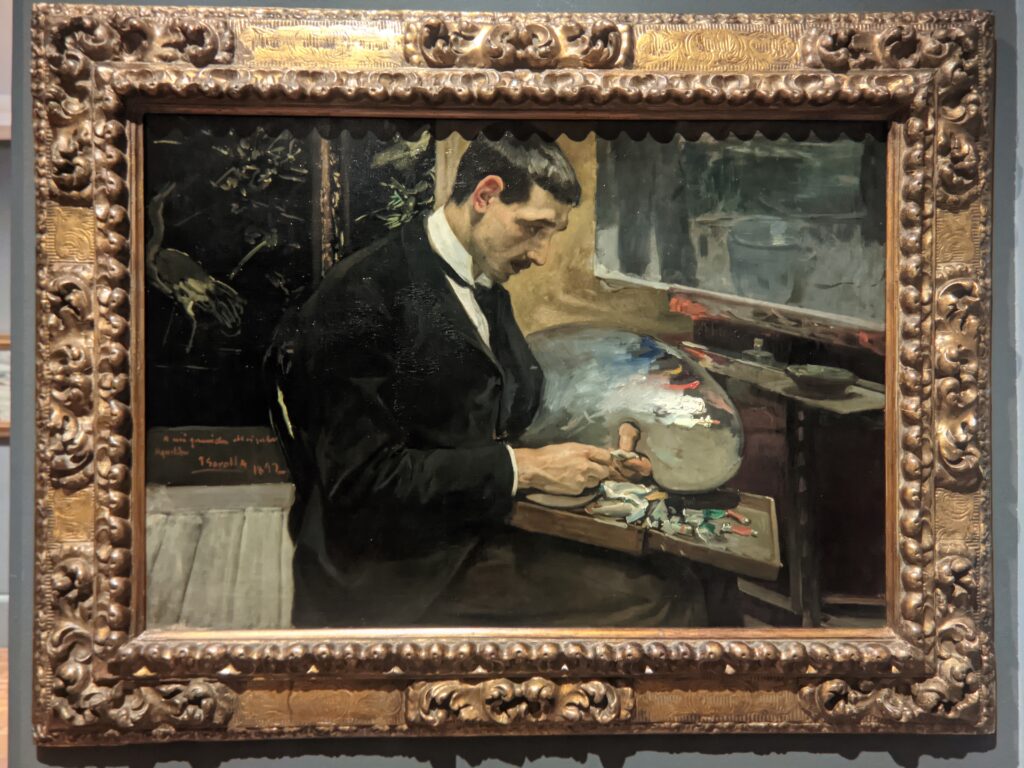
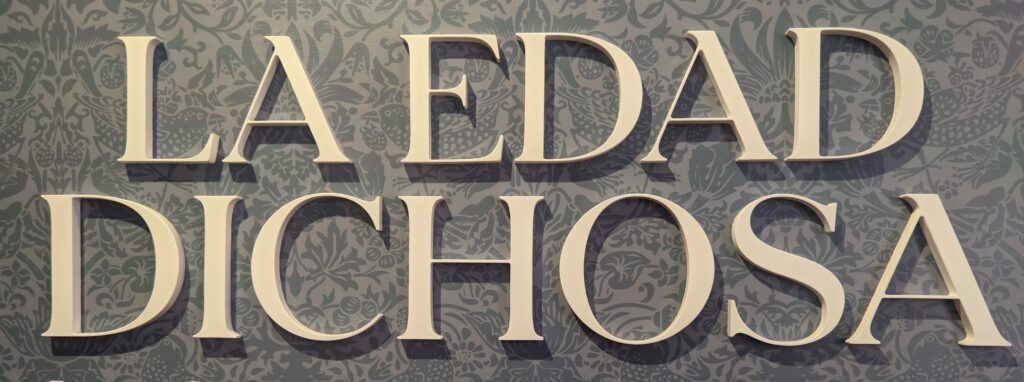
“The Blissful Age. Childhood in Sorolla’s Painting” was held from February 1 — June 19, 2022 at the Sorolla Museum in Madrid
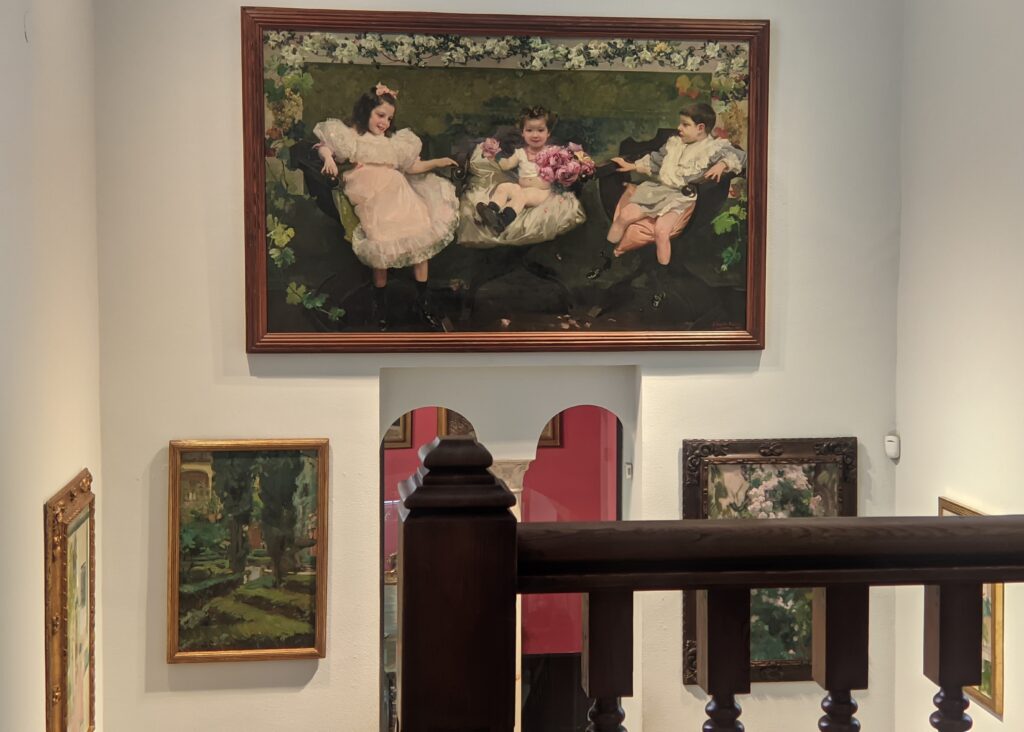
As you ascend the stairs to the upper level of the Museo Sorolla, you will notice that Sorolla was adept at capturing the personalities of children on canvas — a pictorial sub-genre that had particularly flourished from the late 18th century onwards.
Special Exhibition
Images from “The Blissful Age” (below) afforded museum visitors a rare opportunity to learn about Sorolla’s son and two daughters, and to appreciate commissioned portraits of children from the upper classes and aristocracy.
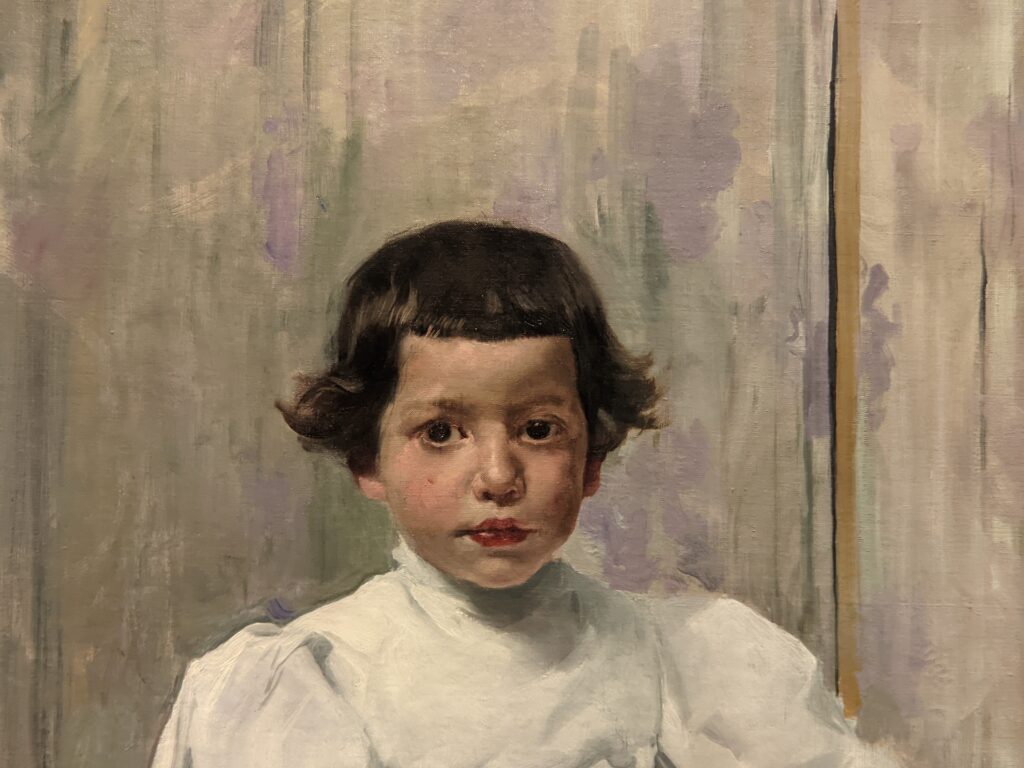


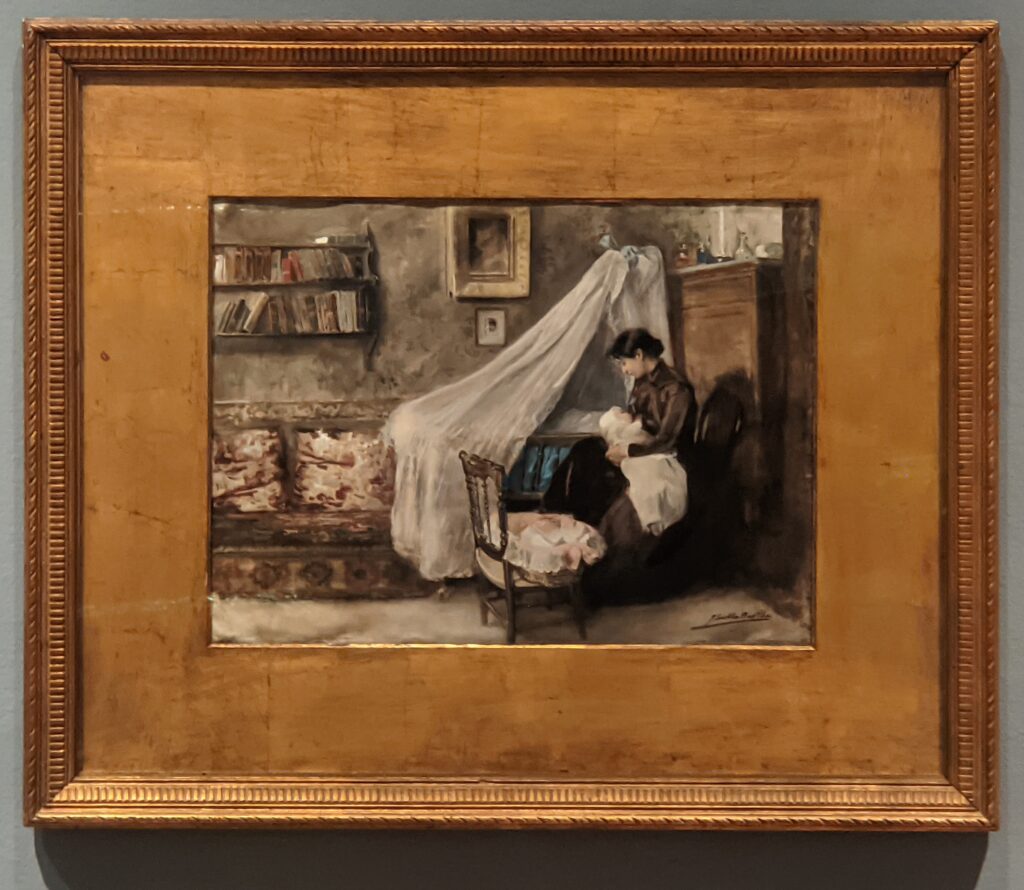
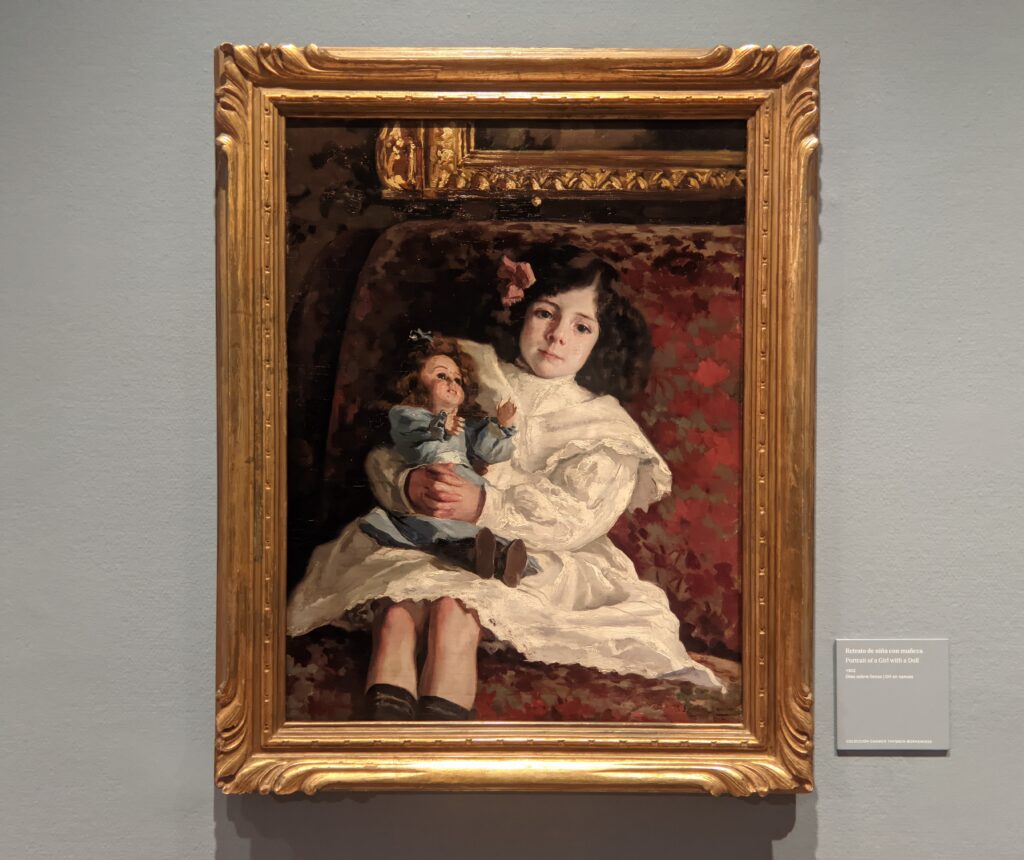
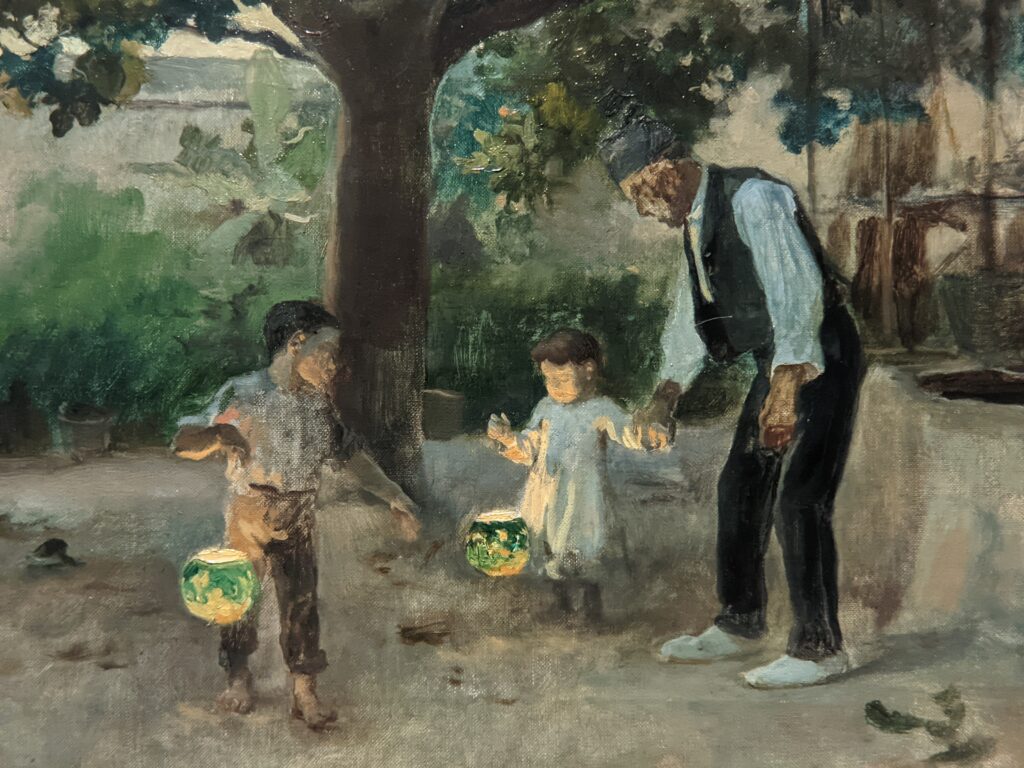
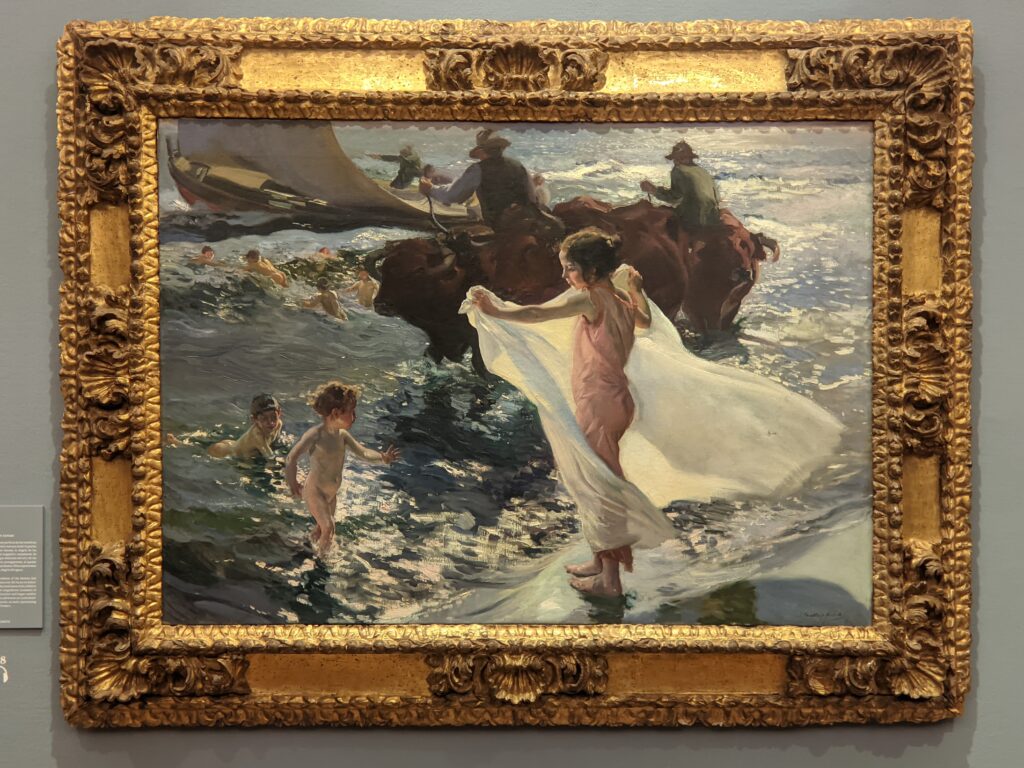
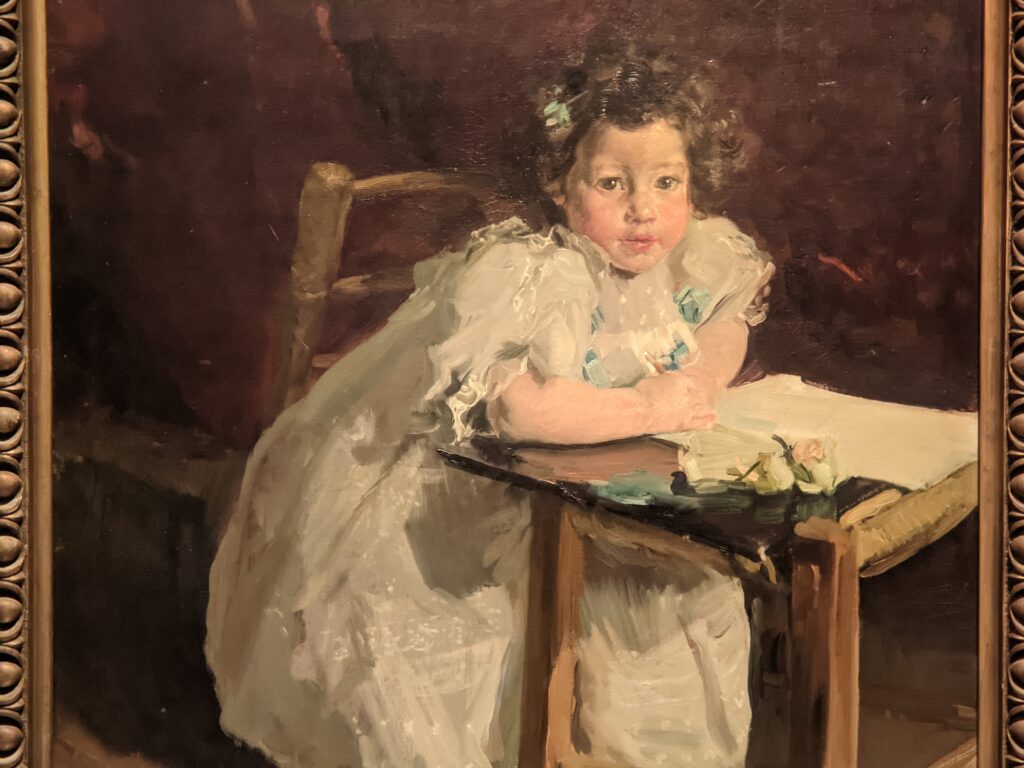
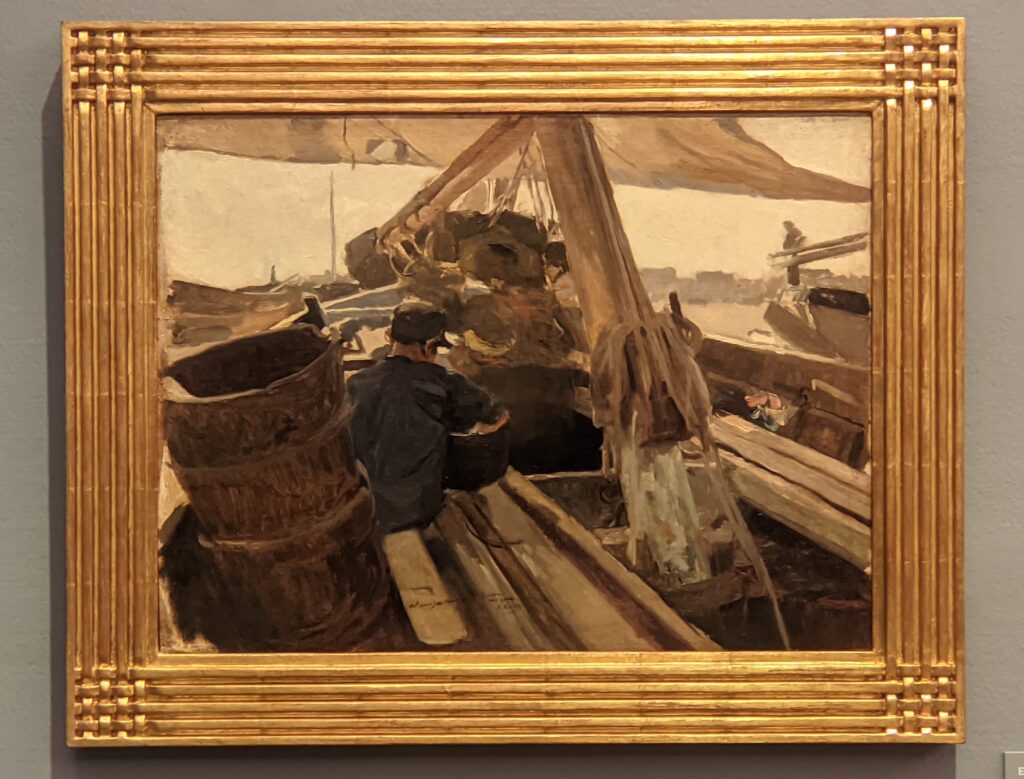
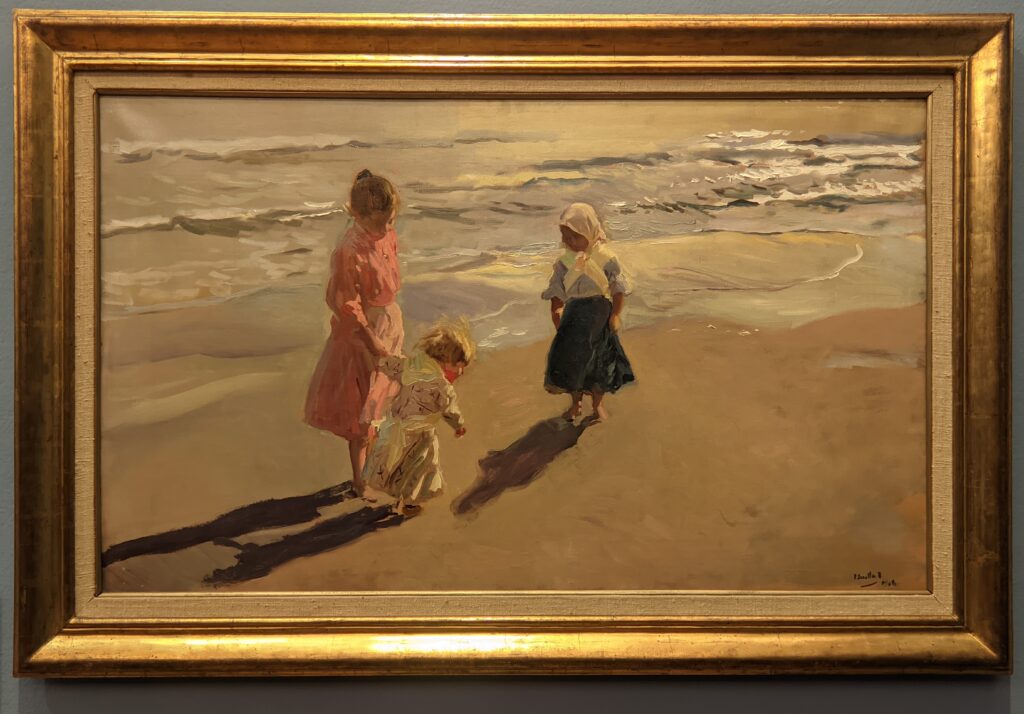


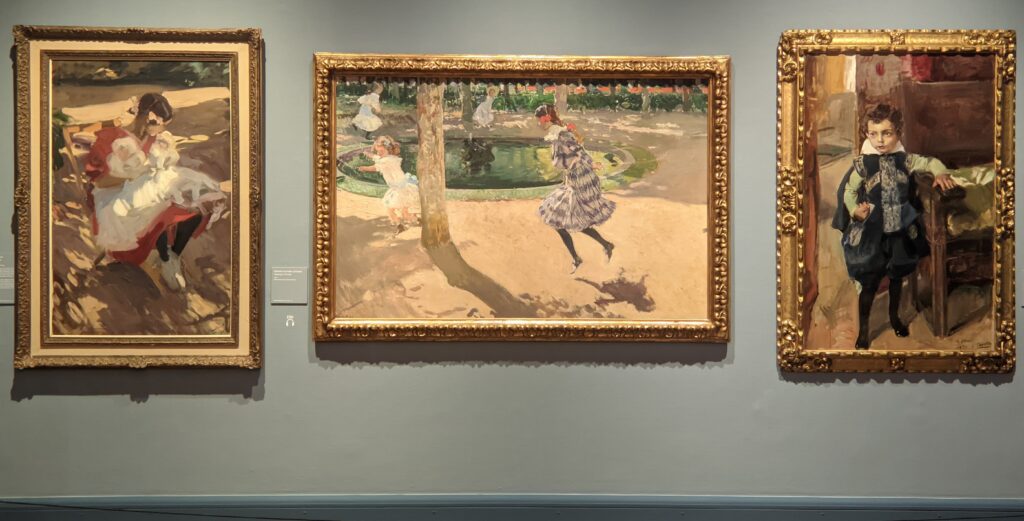

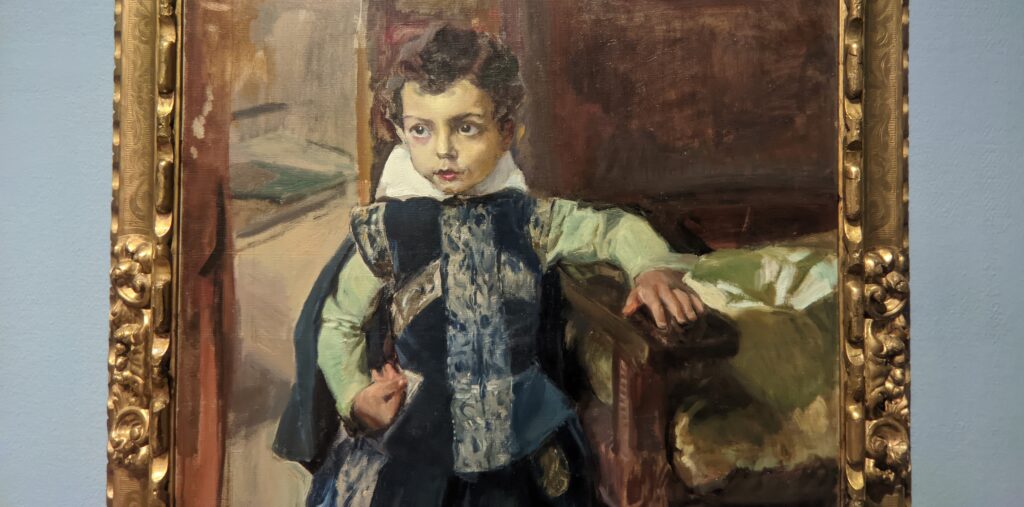

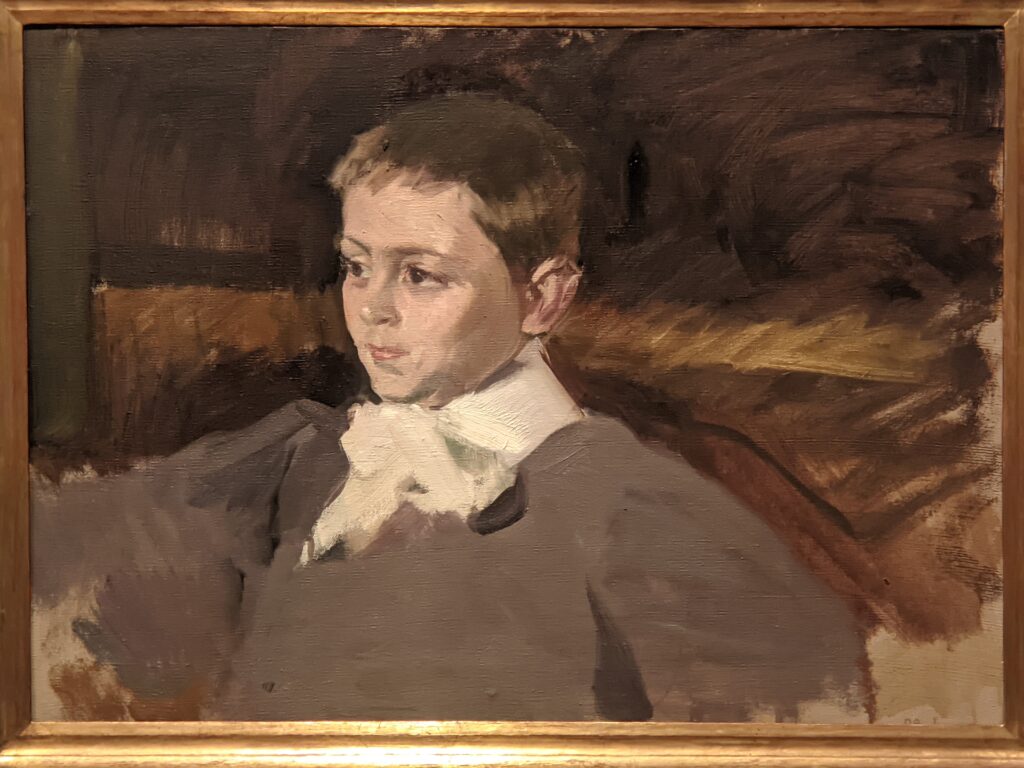
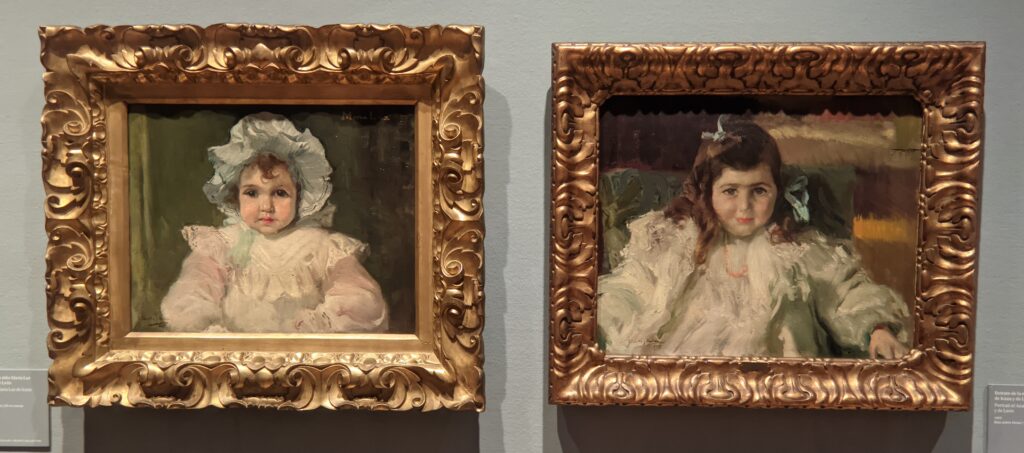

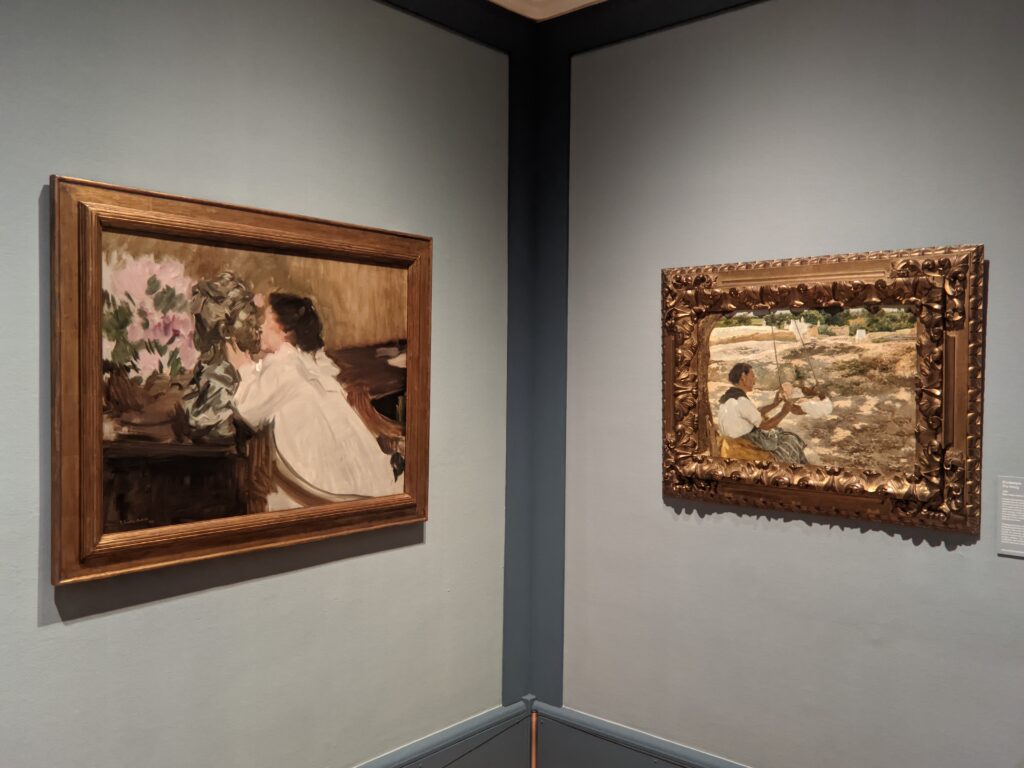
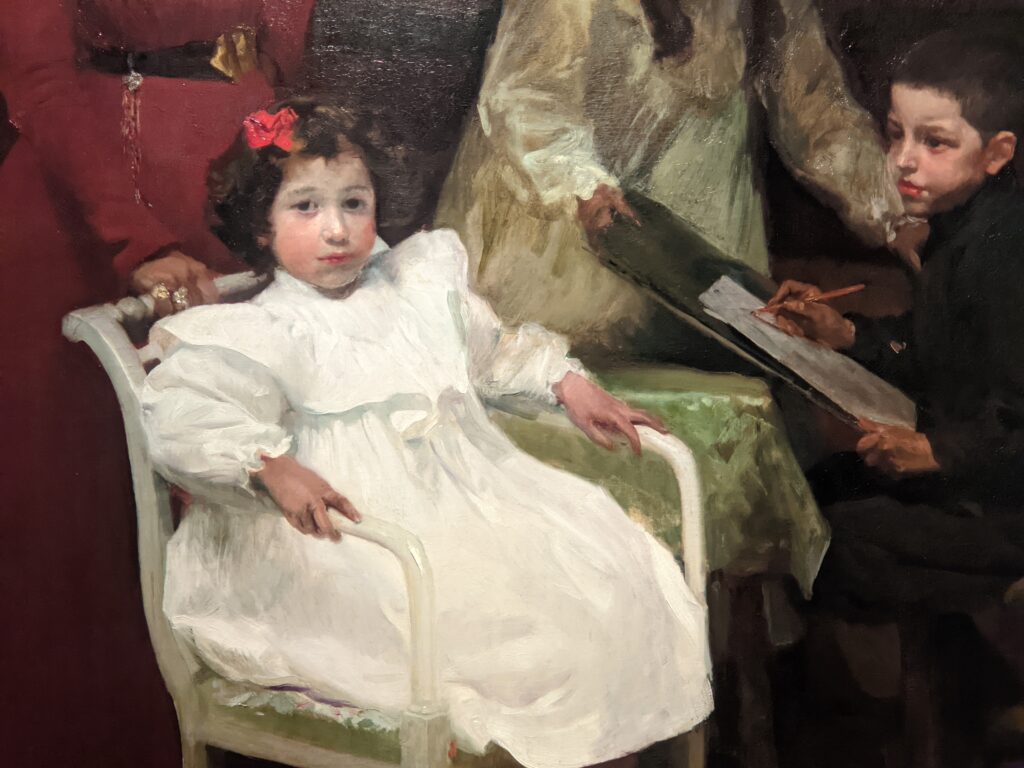

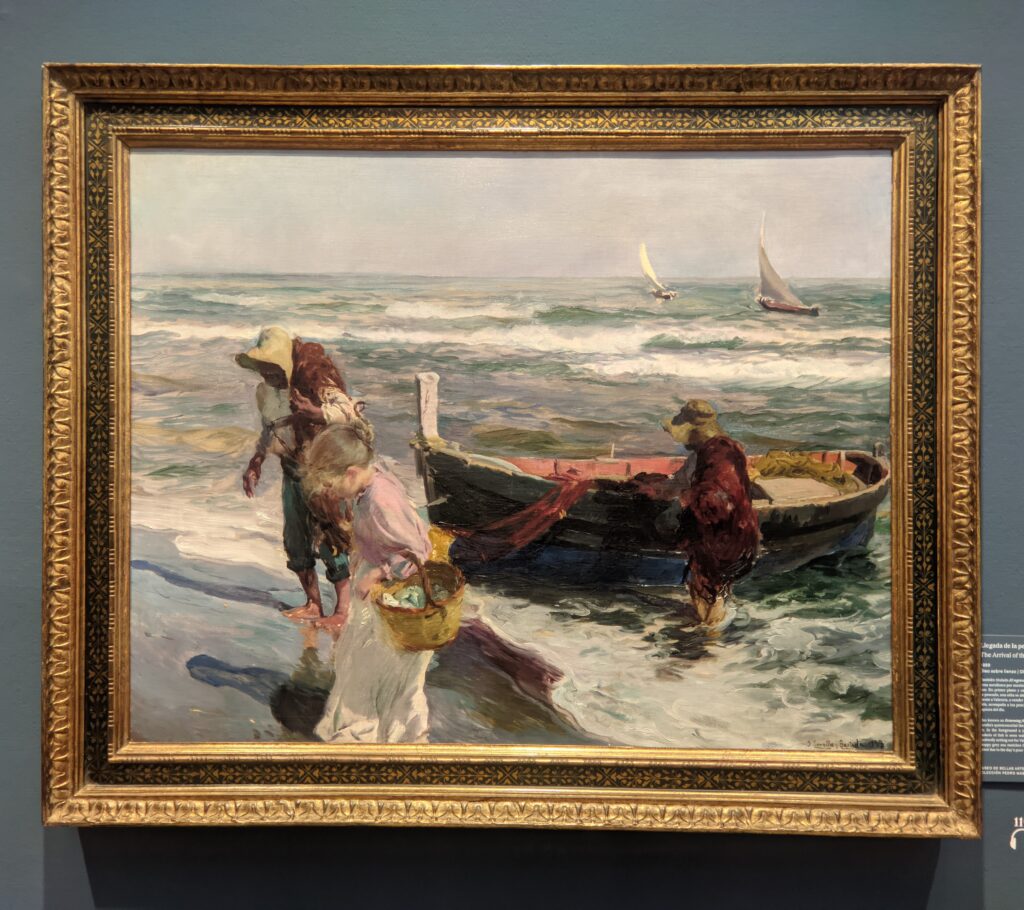
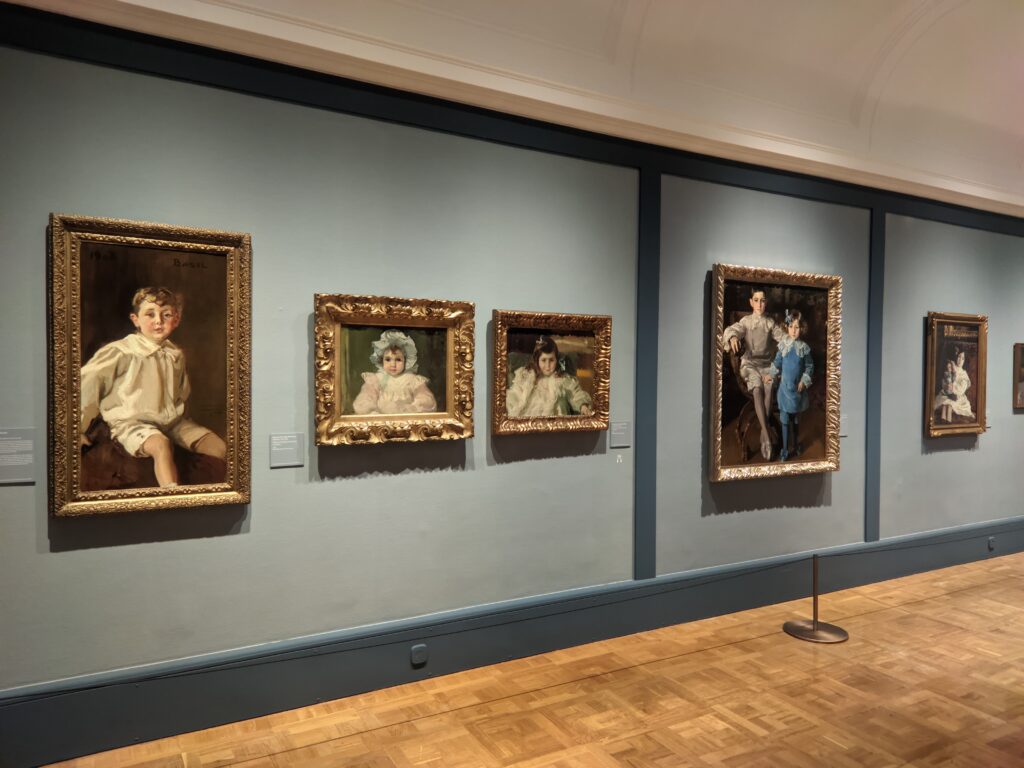
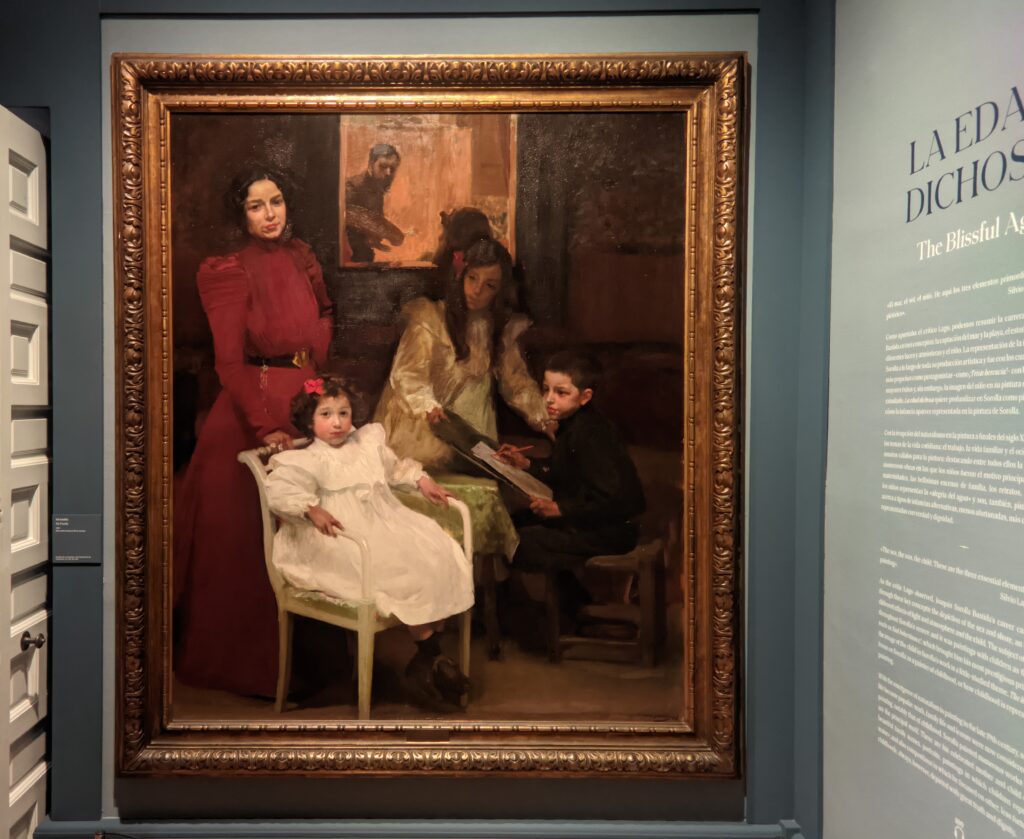
We hope you found this article informative, and you will choose to visit the Museo Sorolla on a sunny day in the future to enjoy the lovely Andalusian-style garden (pictured below) designed by Joaquín Sorolla.








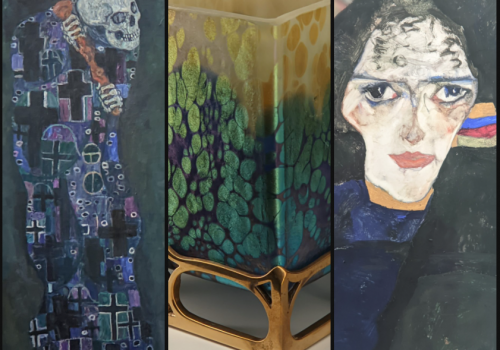
One Comment
HUMBERTO O CHÁVEZ
Steve and Arthur,
I just wanted to tell you both I enjoyed your articles on museums in Europe. They are quite informative, and the photos are beautiful. It is like being in the museum.
Thank you for your time and effort to put these articles together. I look forward for more.
Humberto O. Chavez,
New York, USA
3/12/2022